








































































































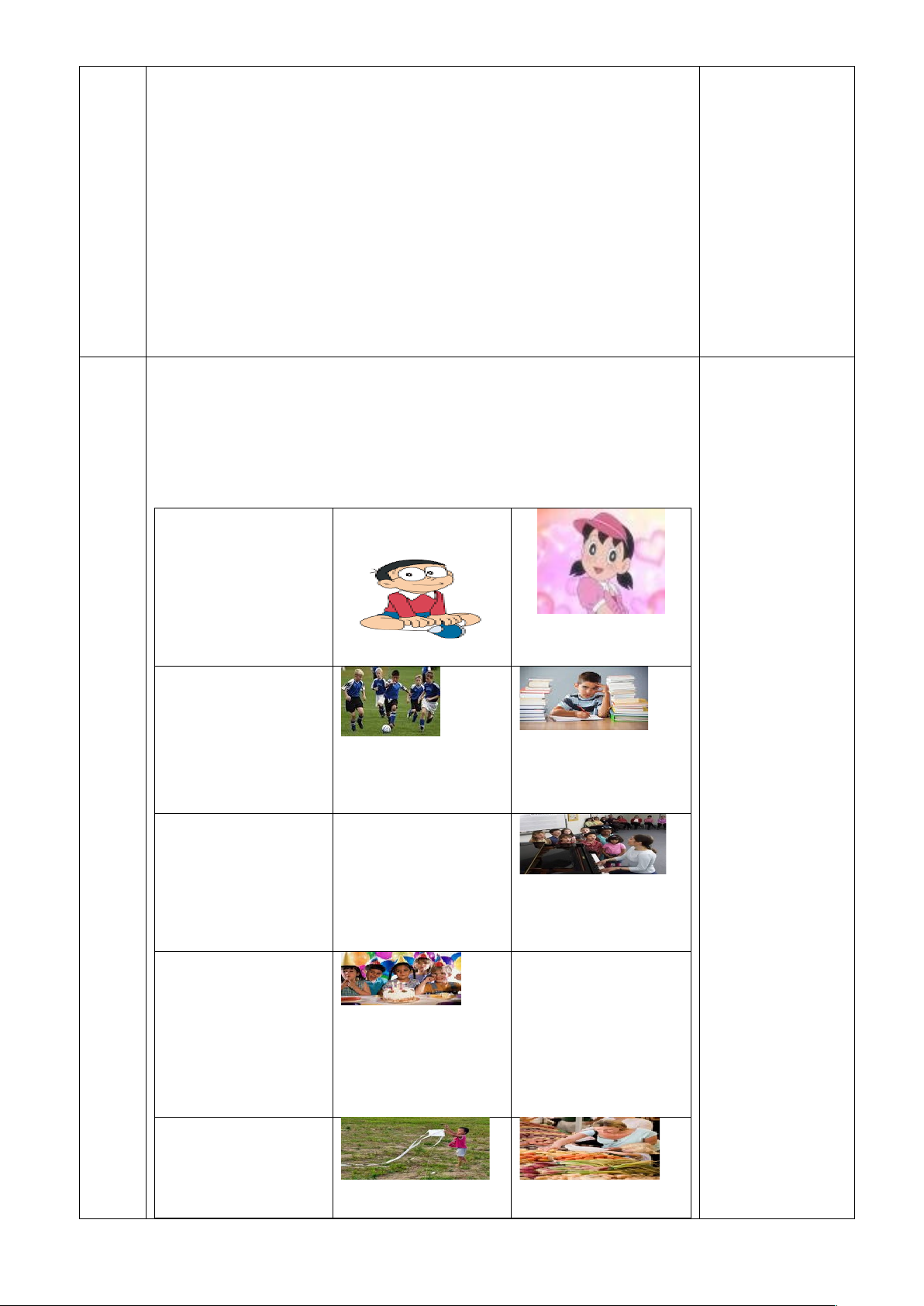












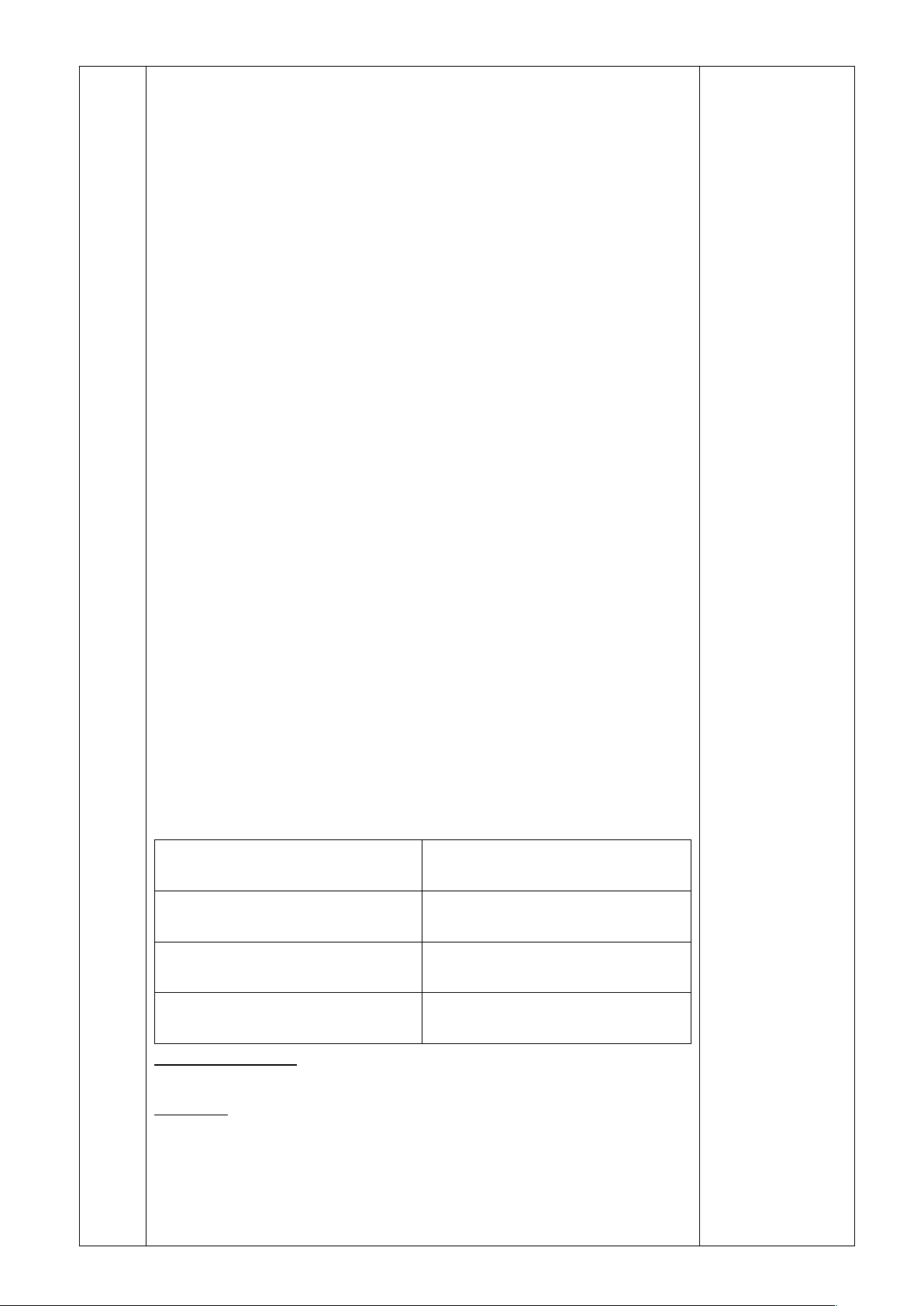


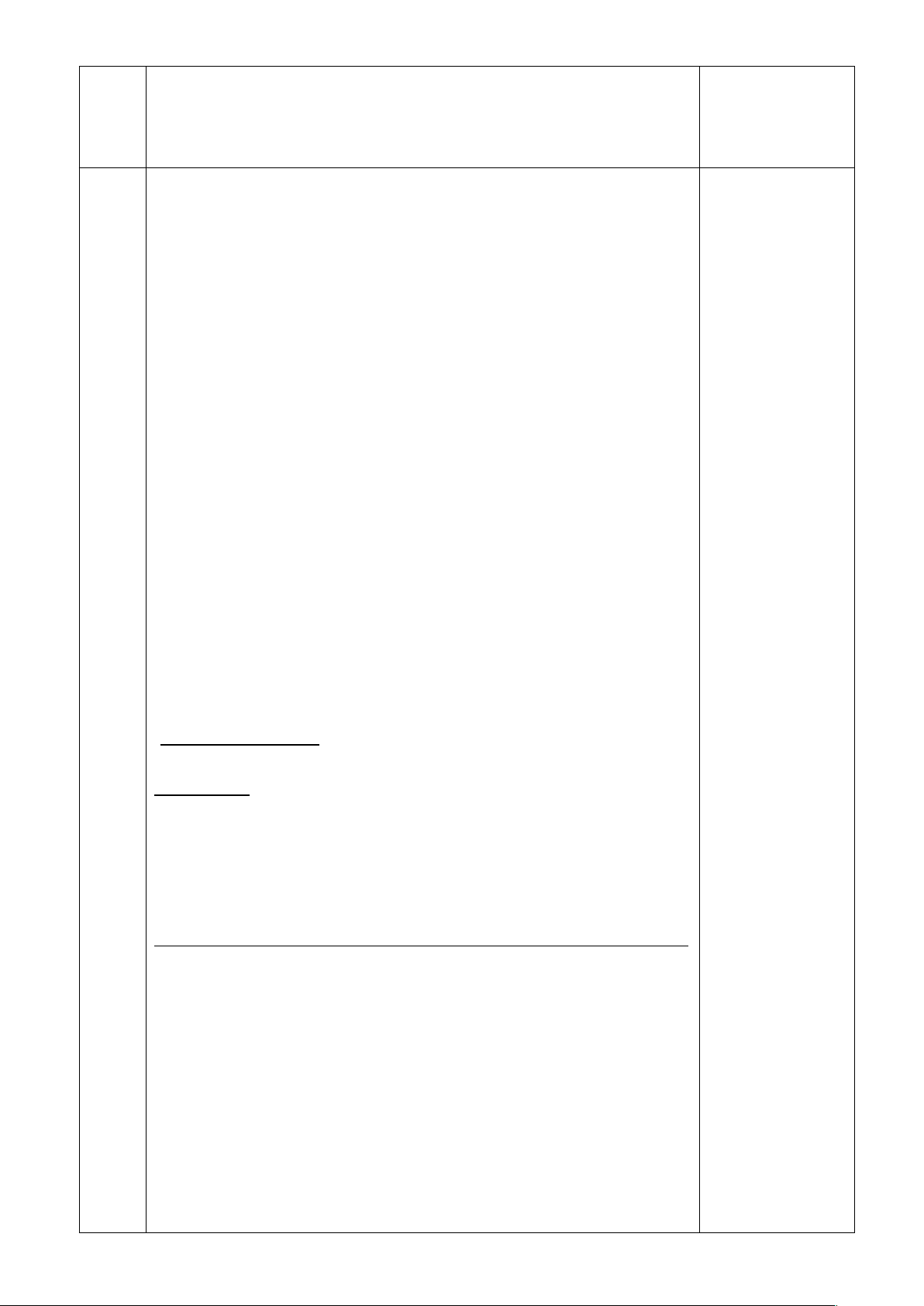
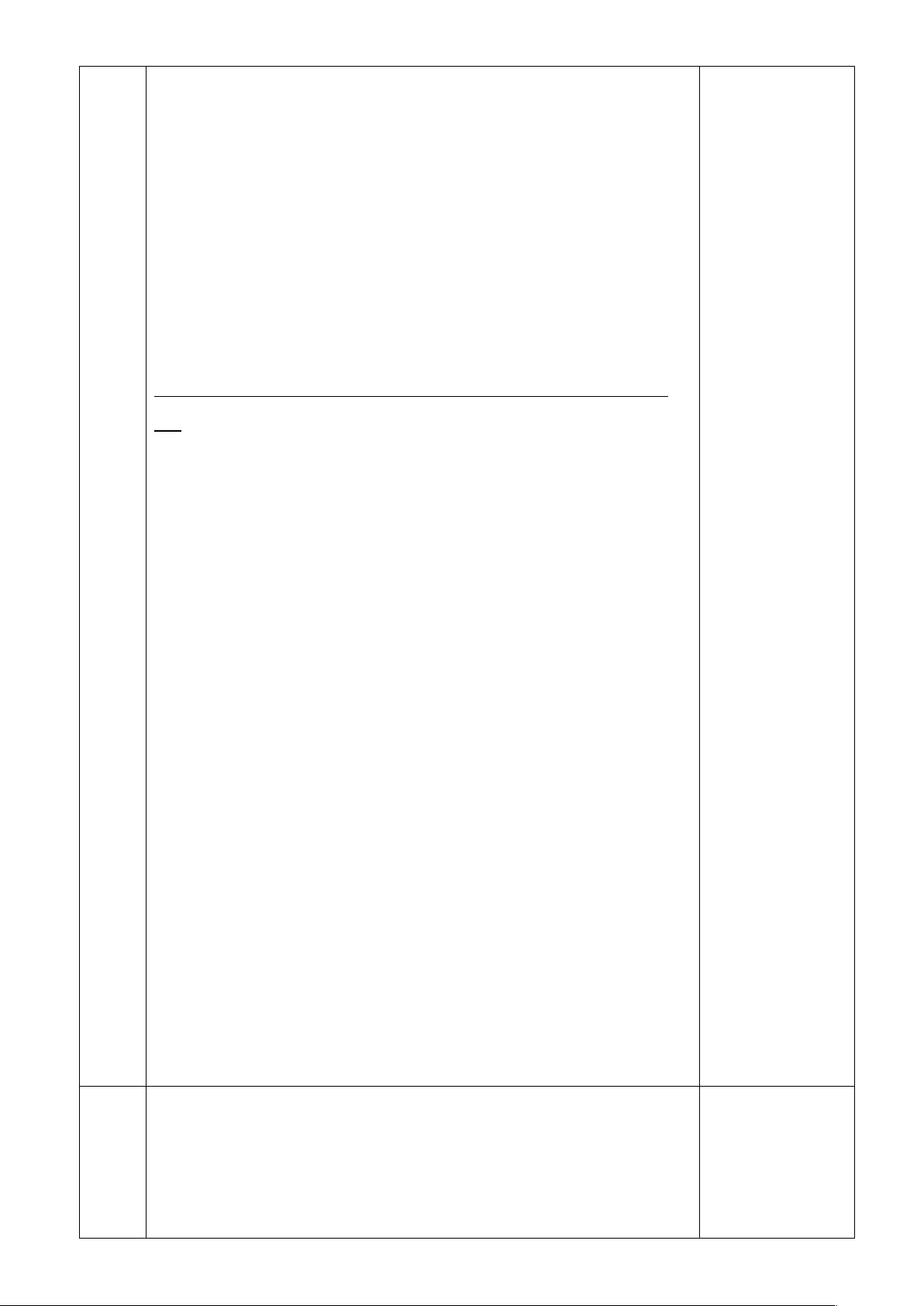

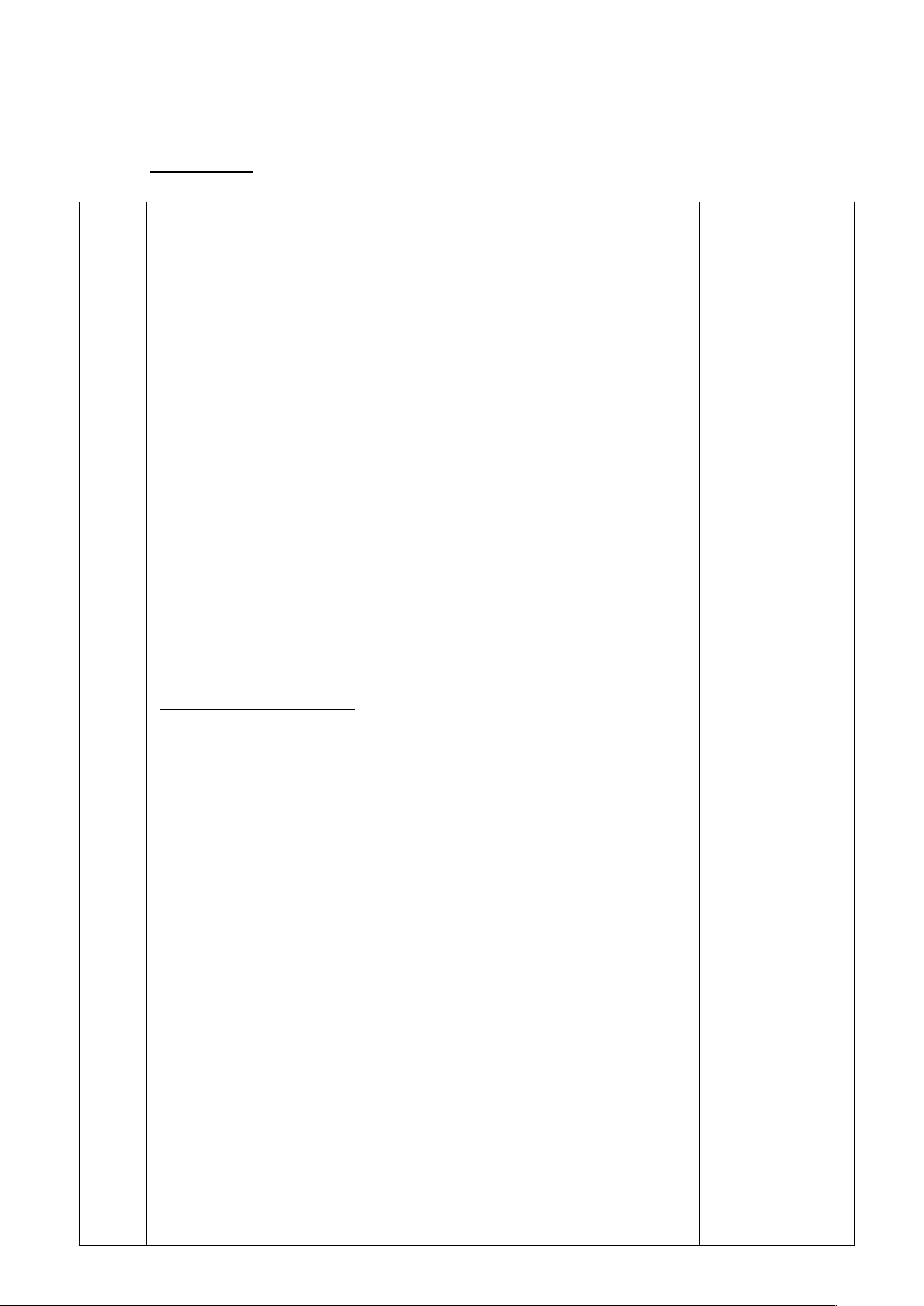



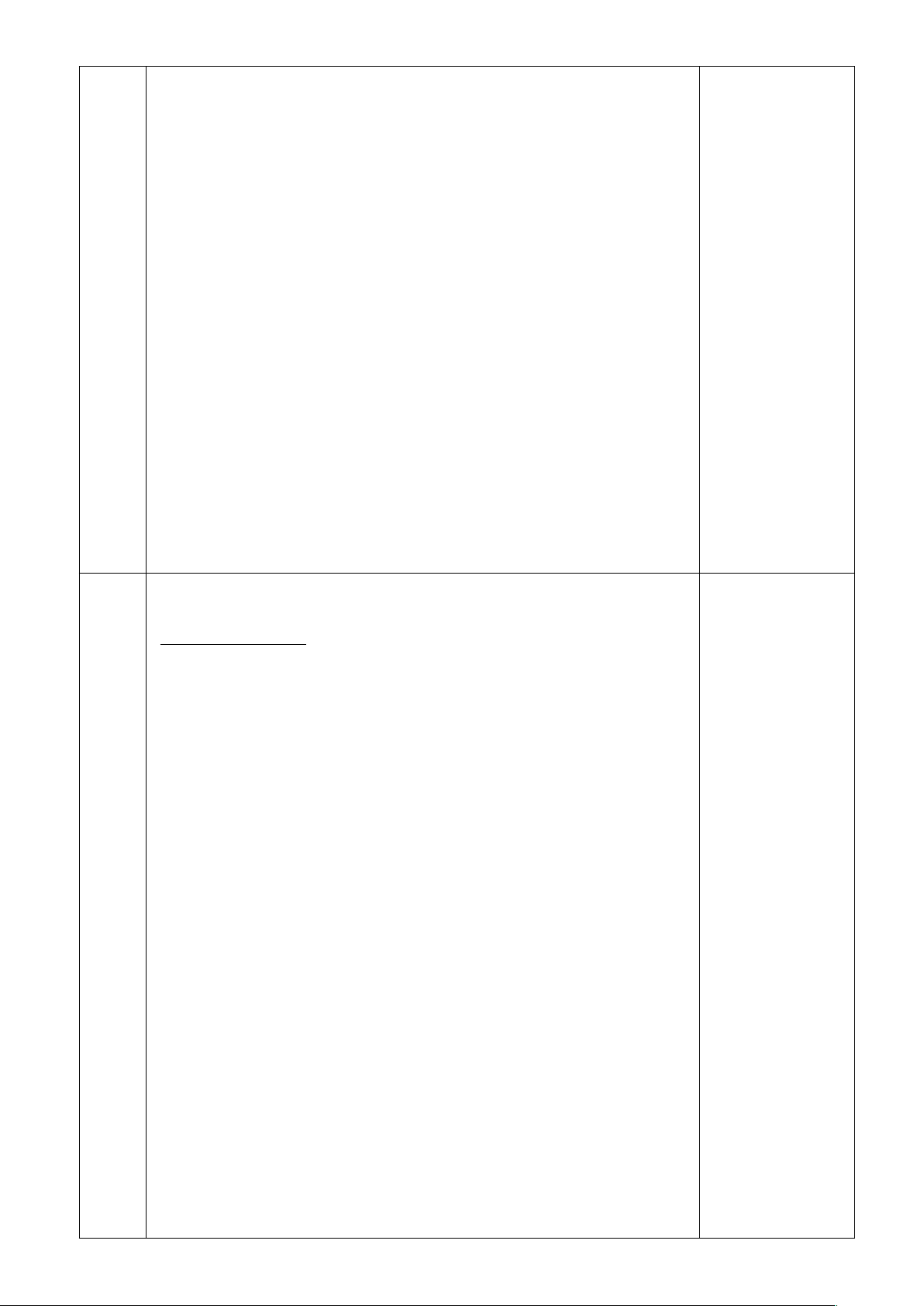




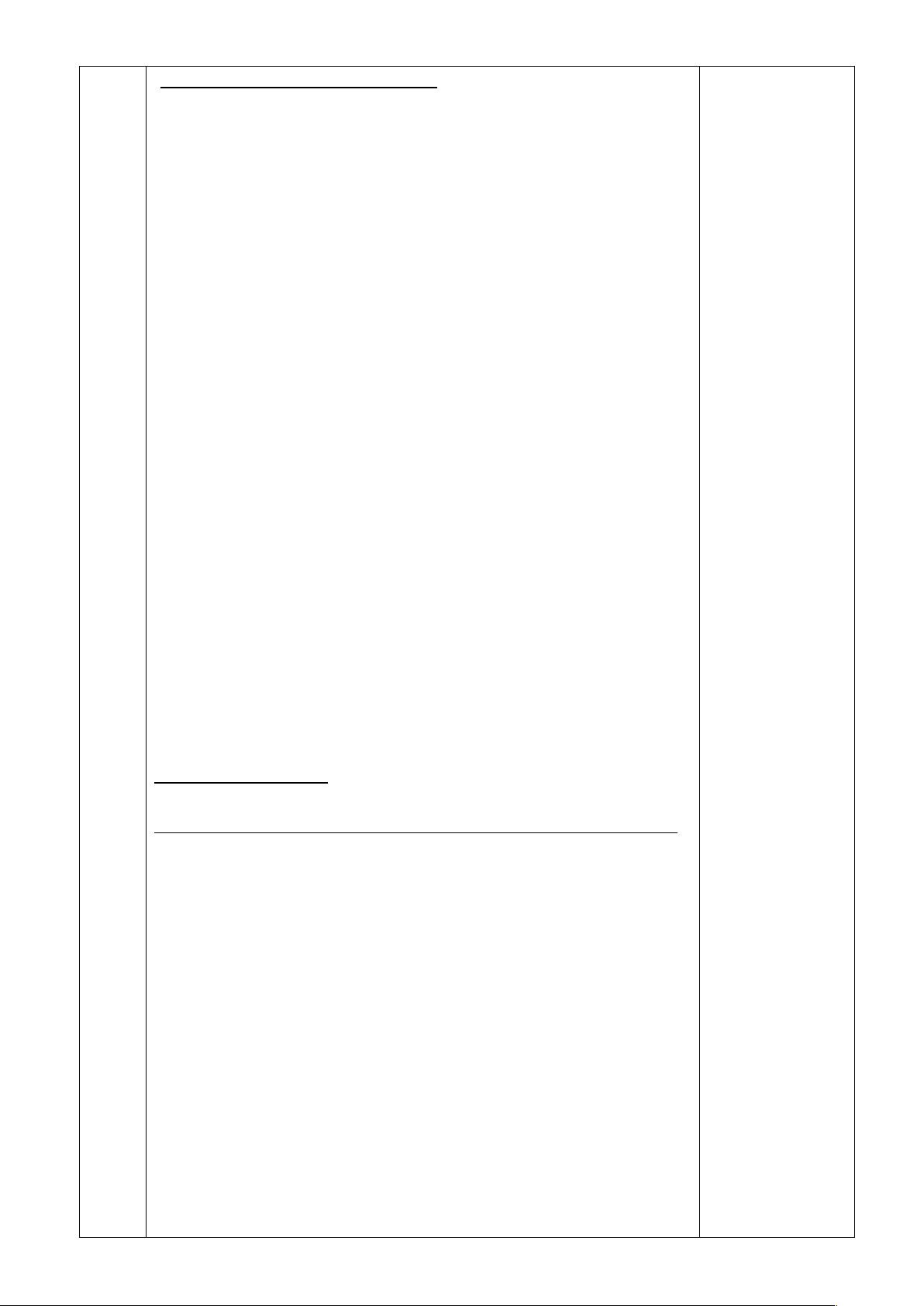
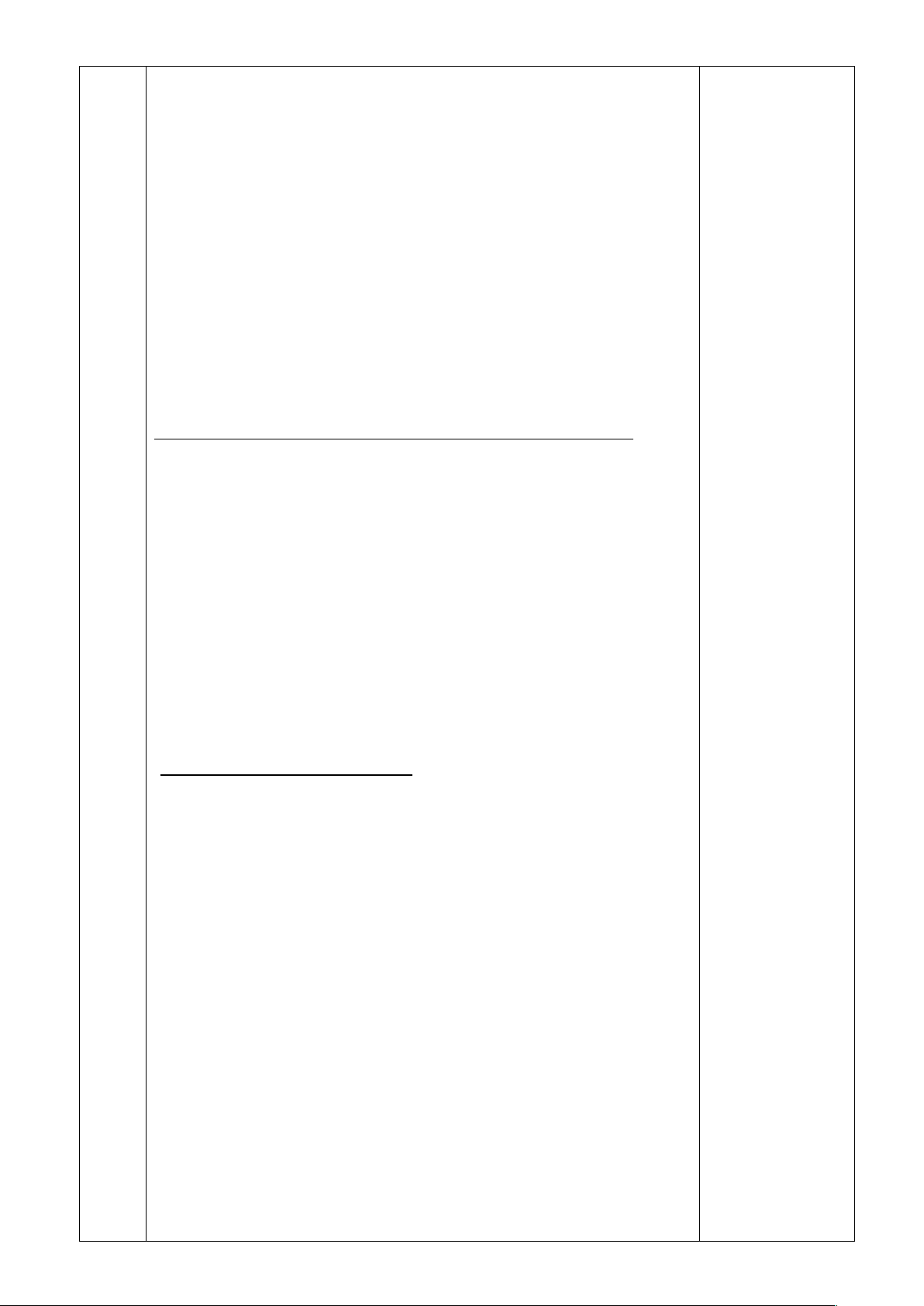



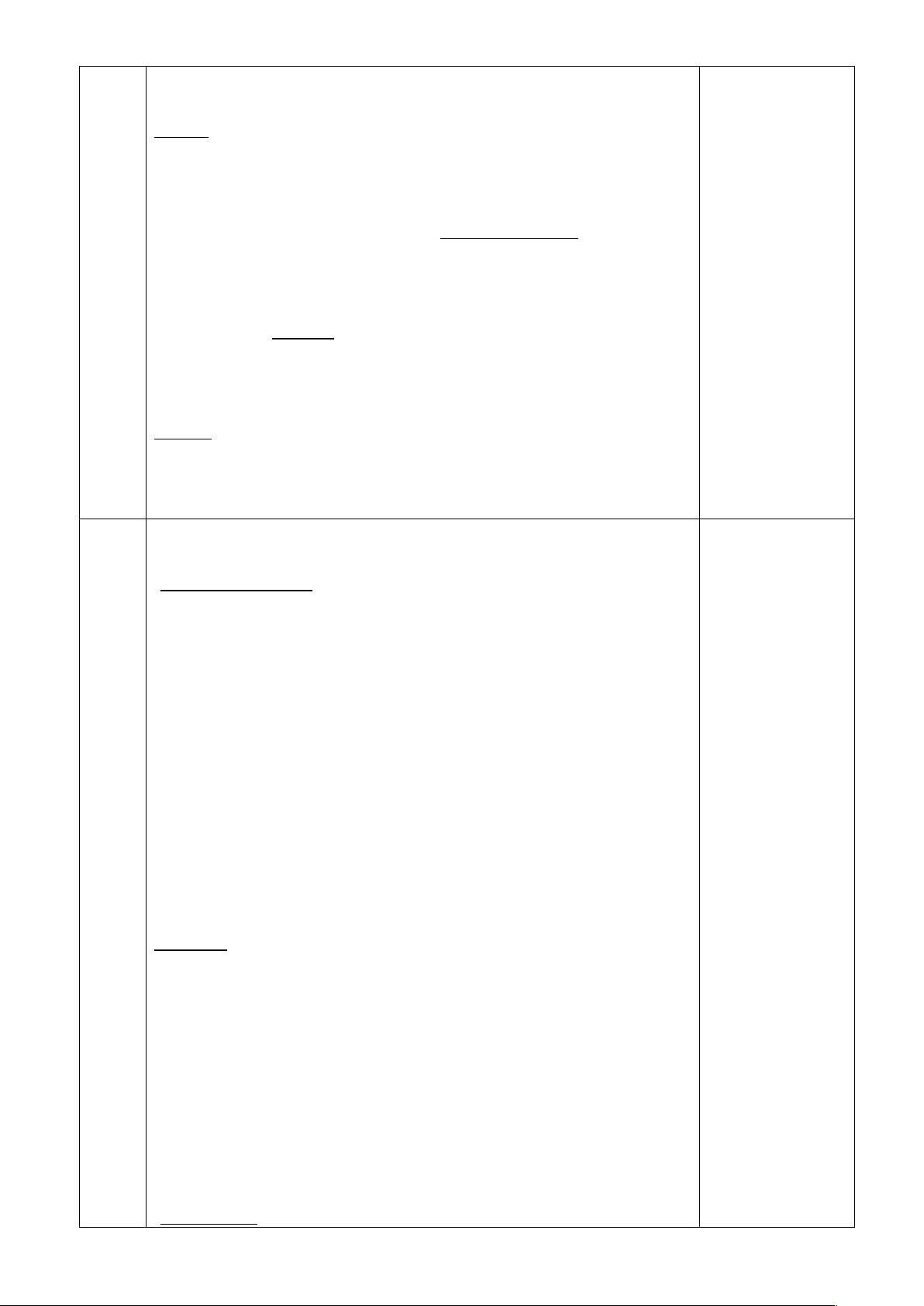


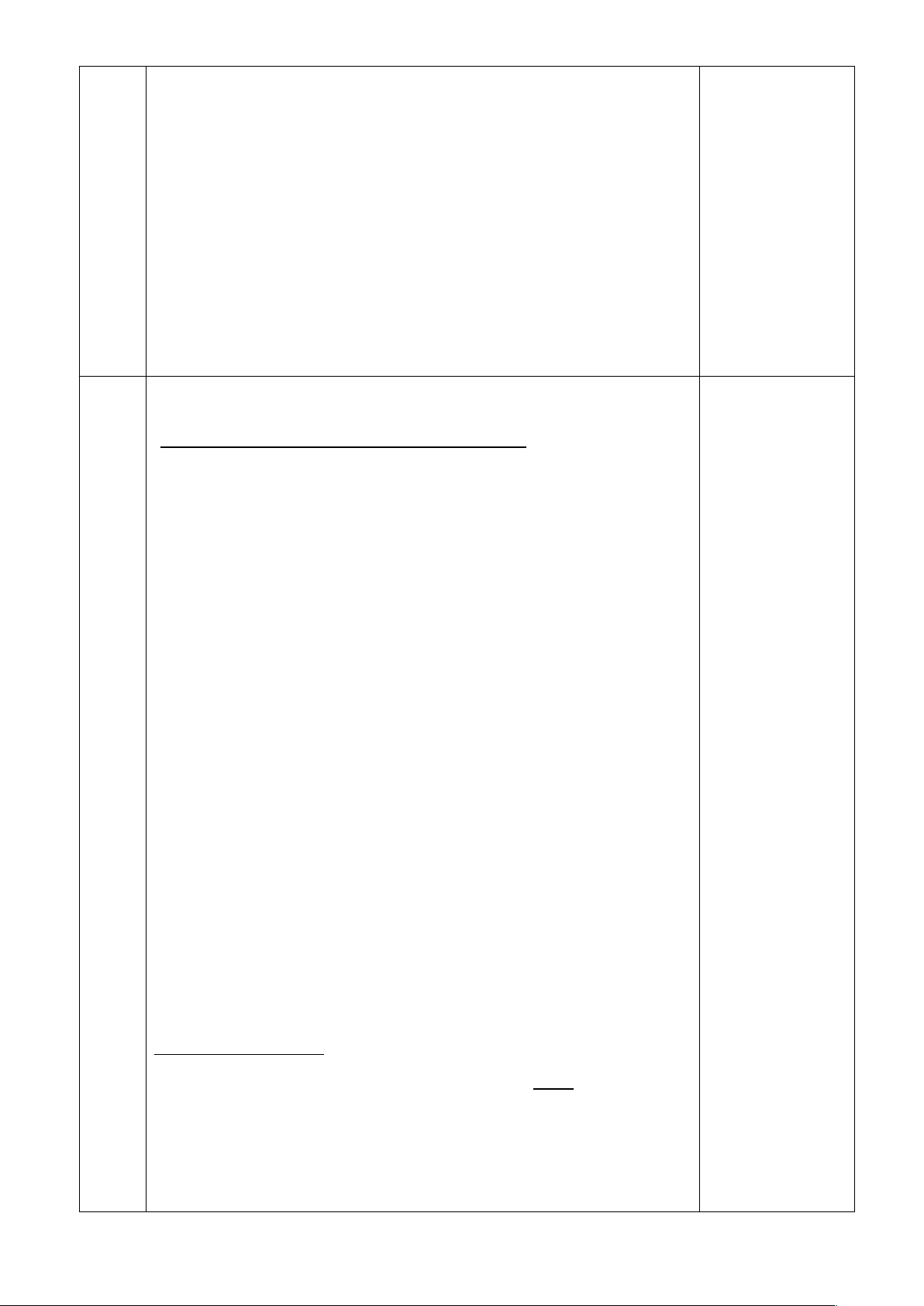




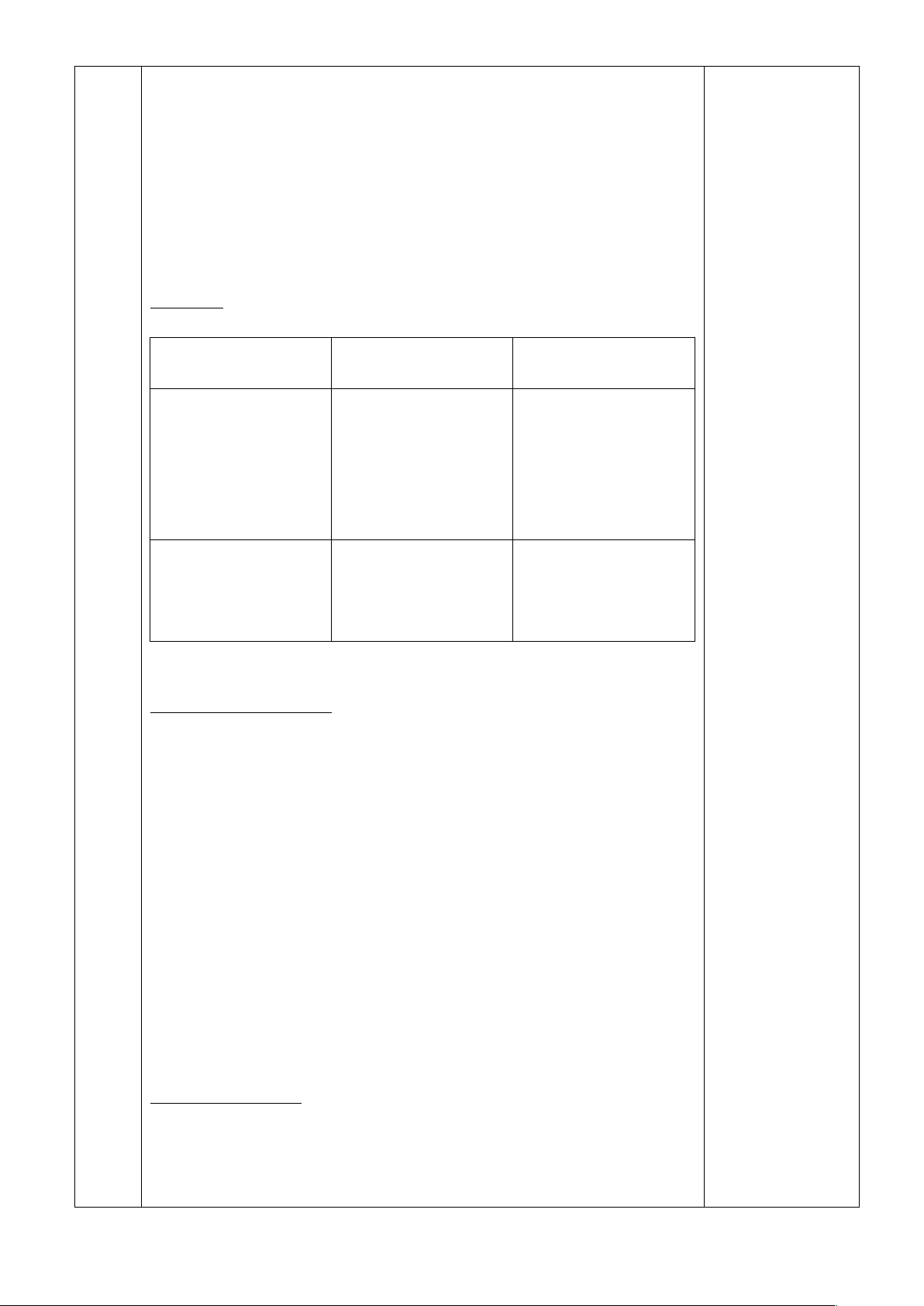



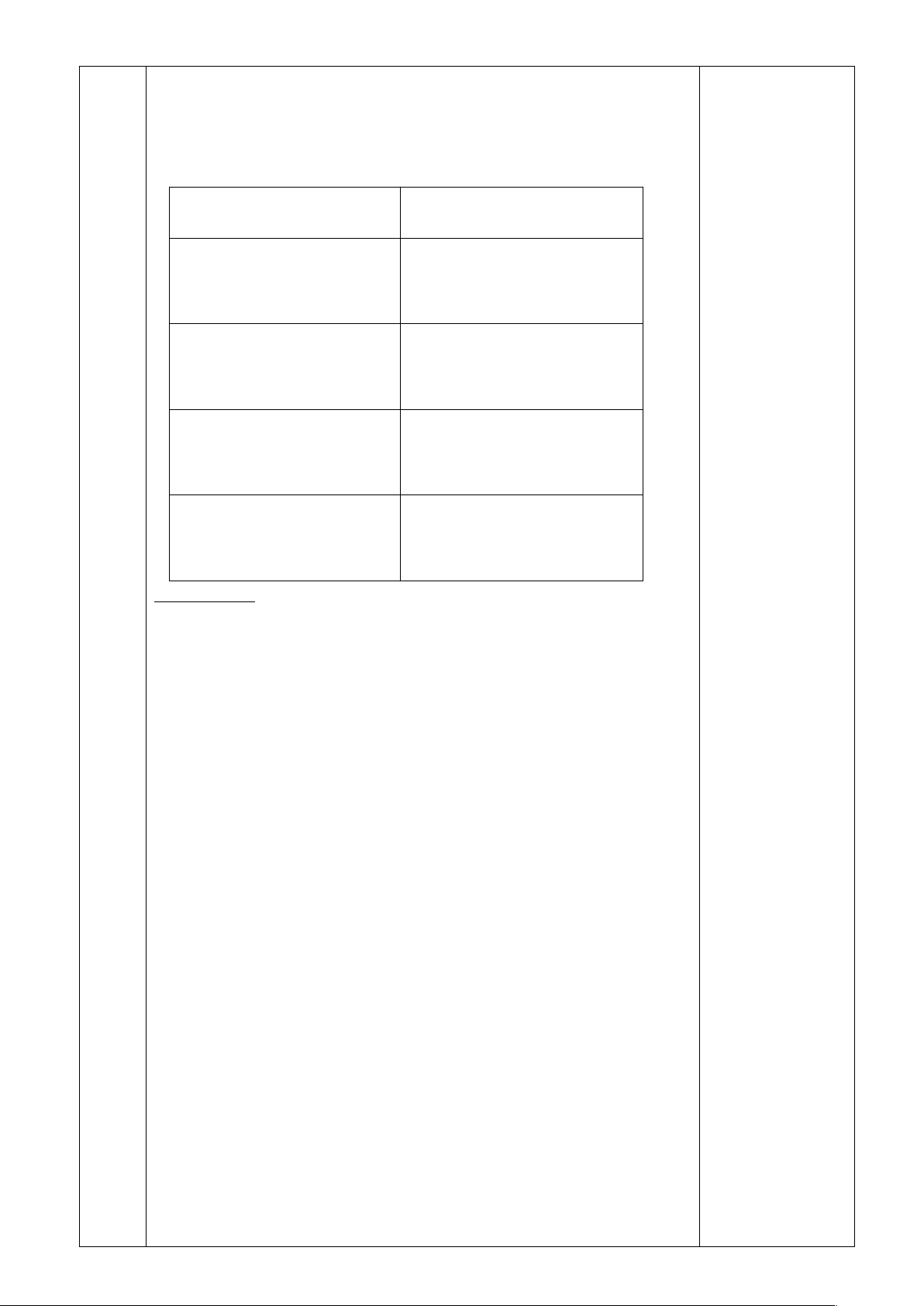
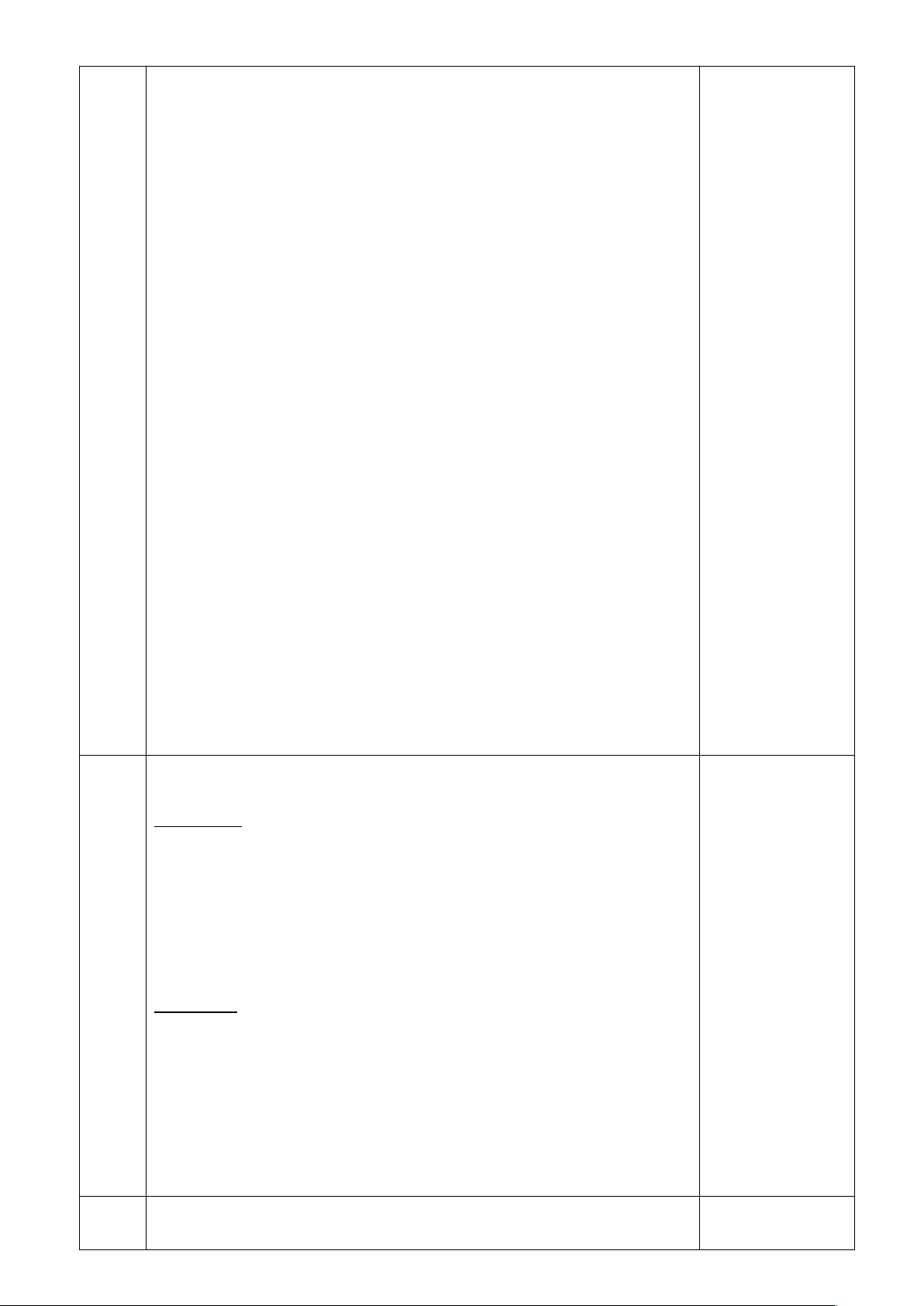



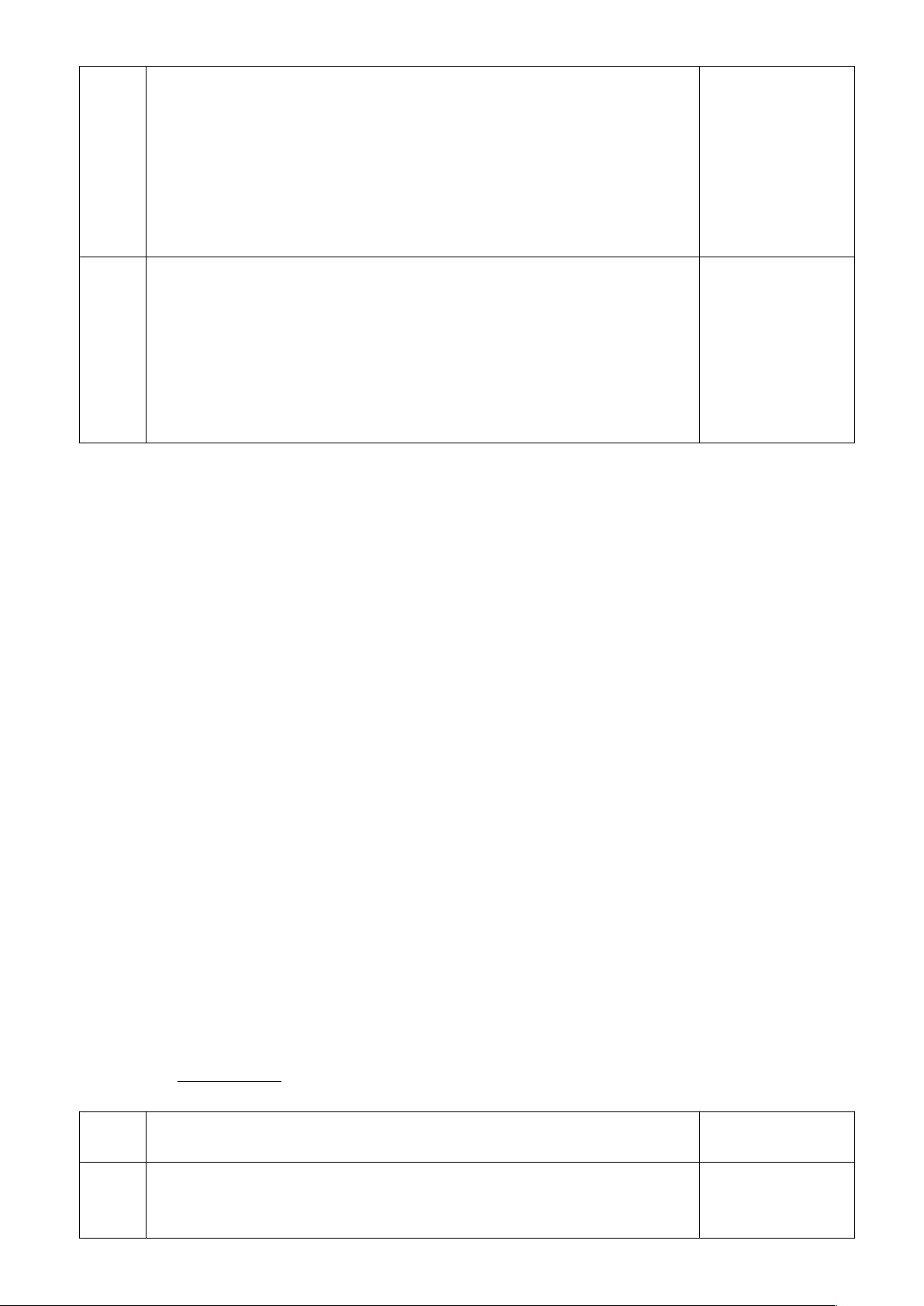
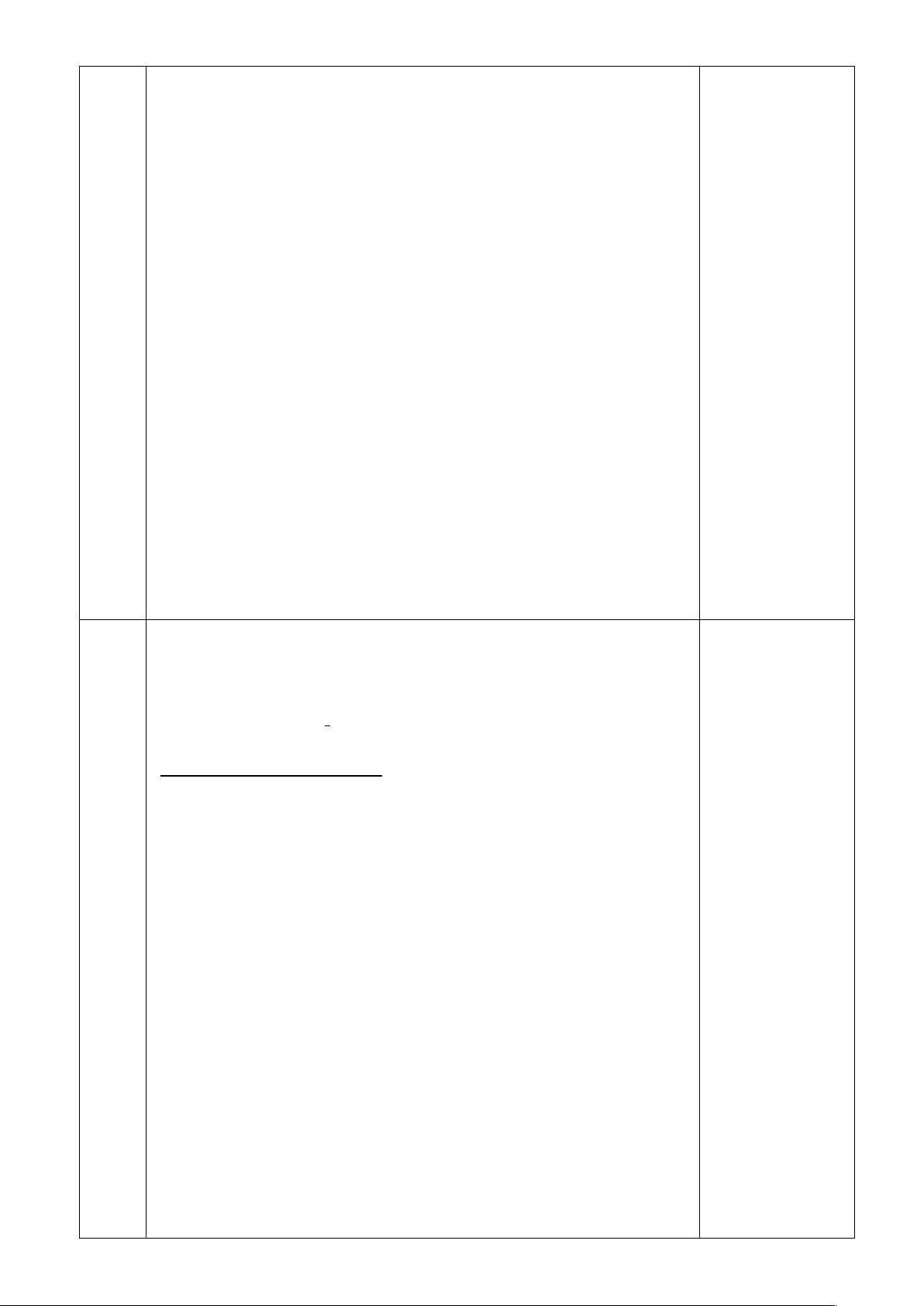
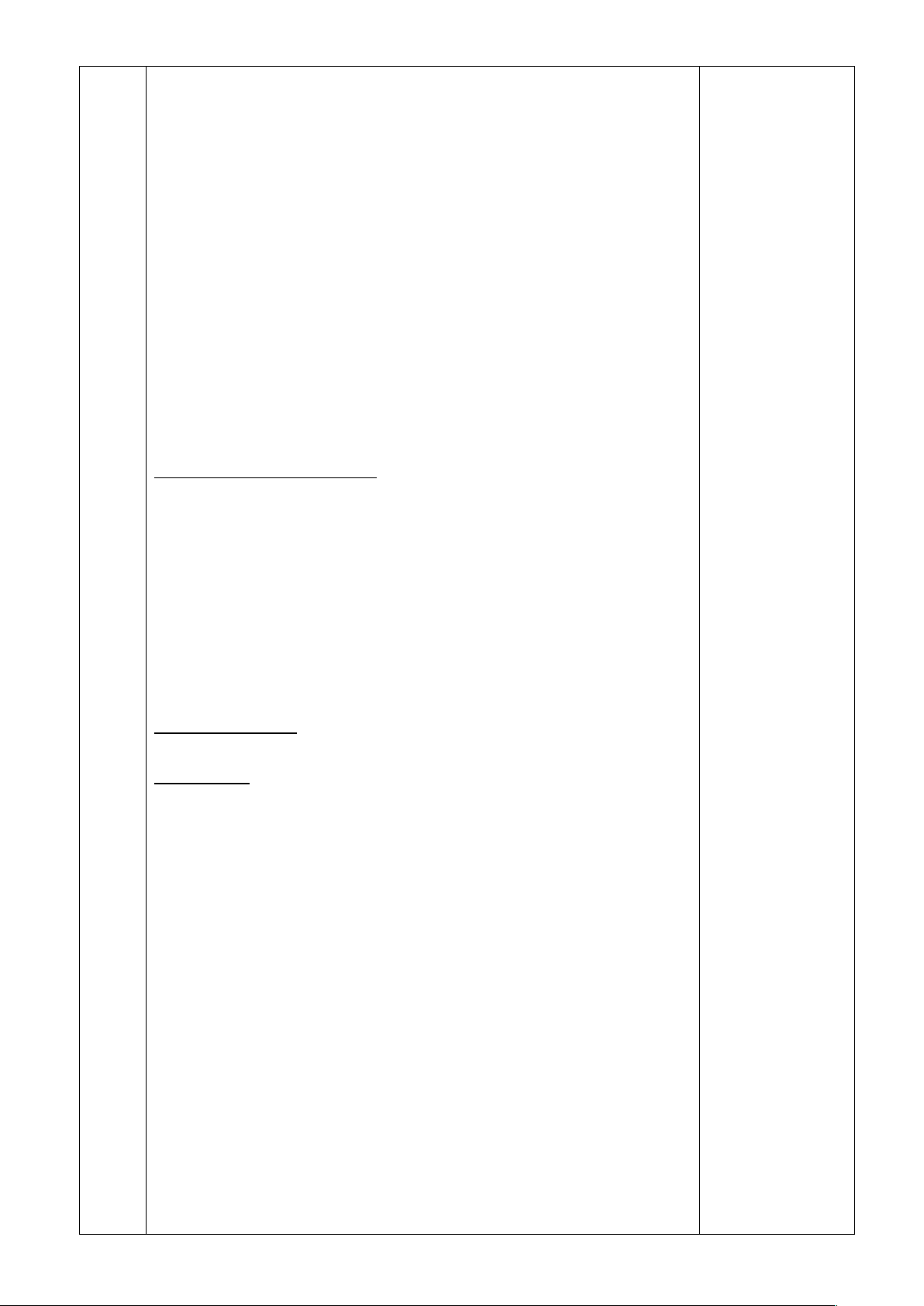
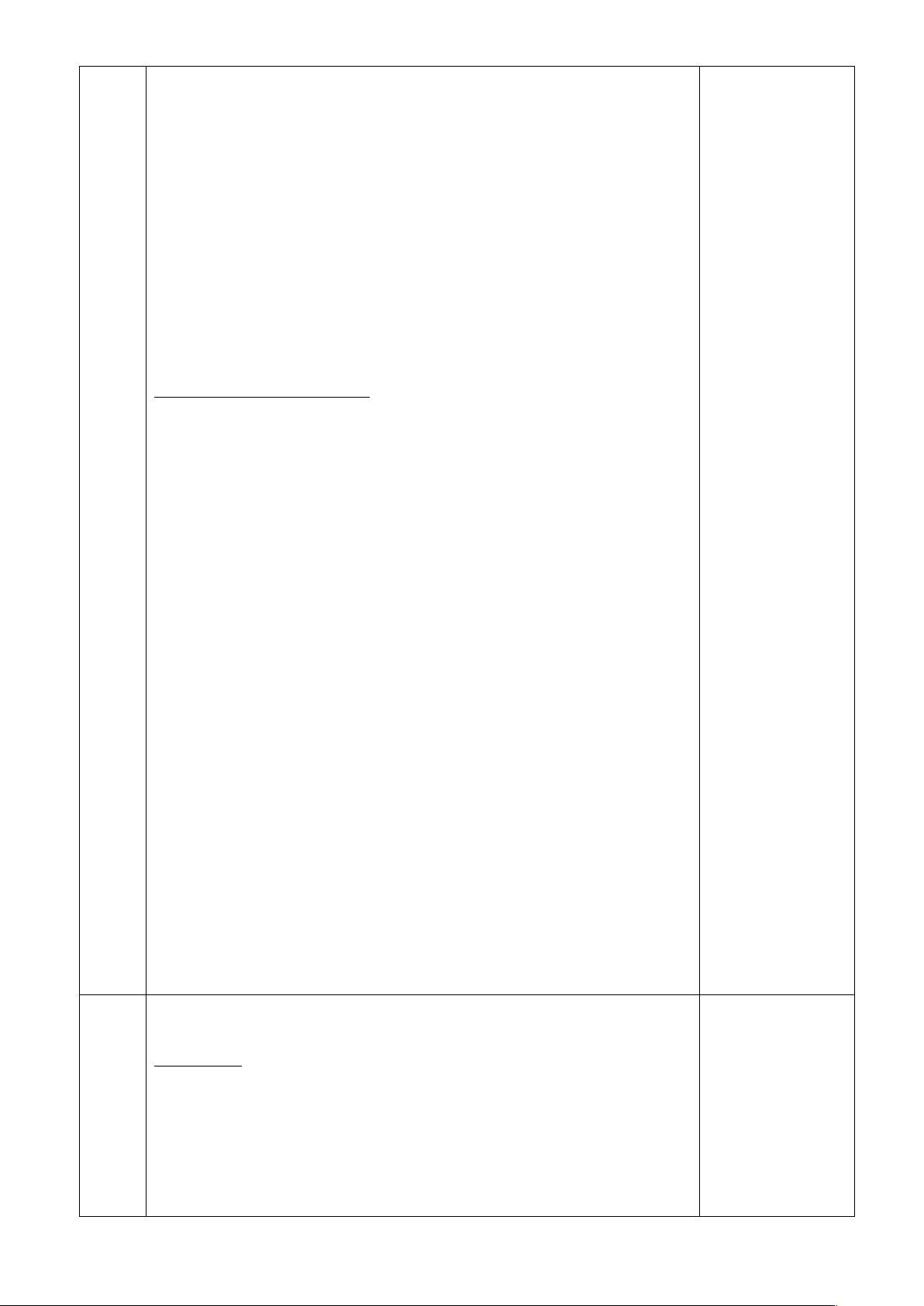

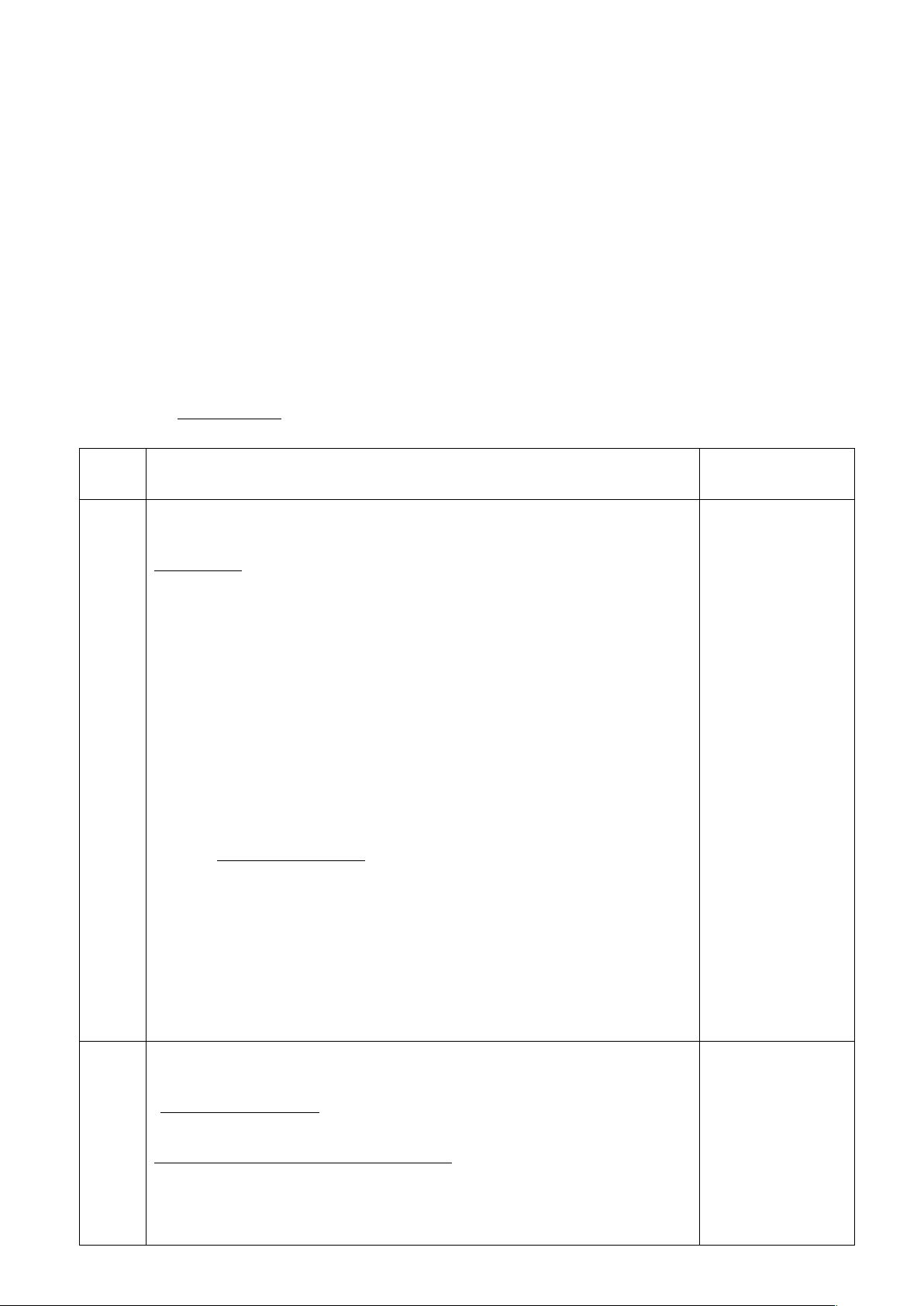
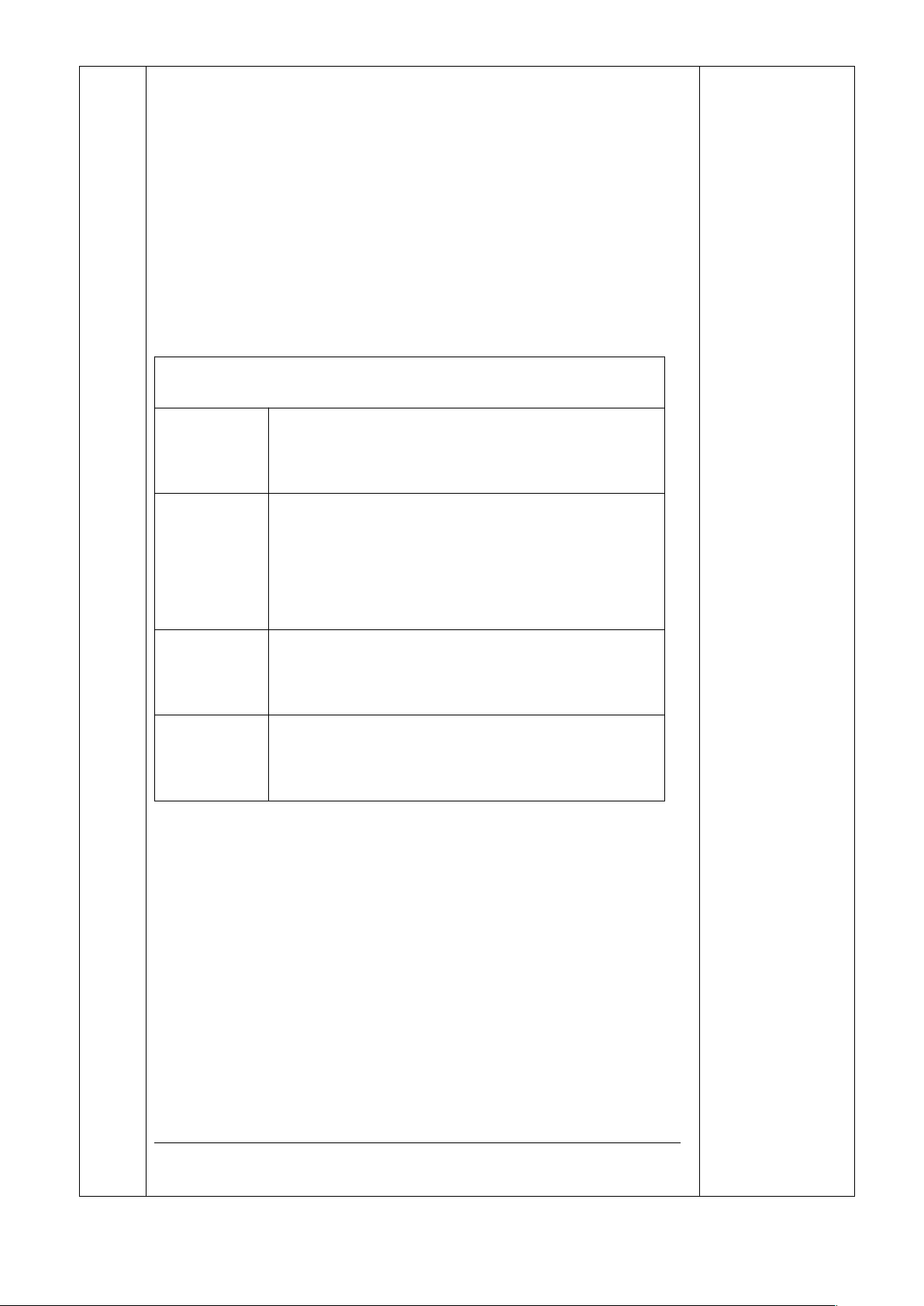


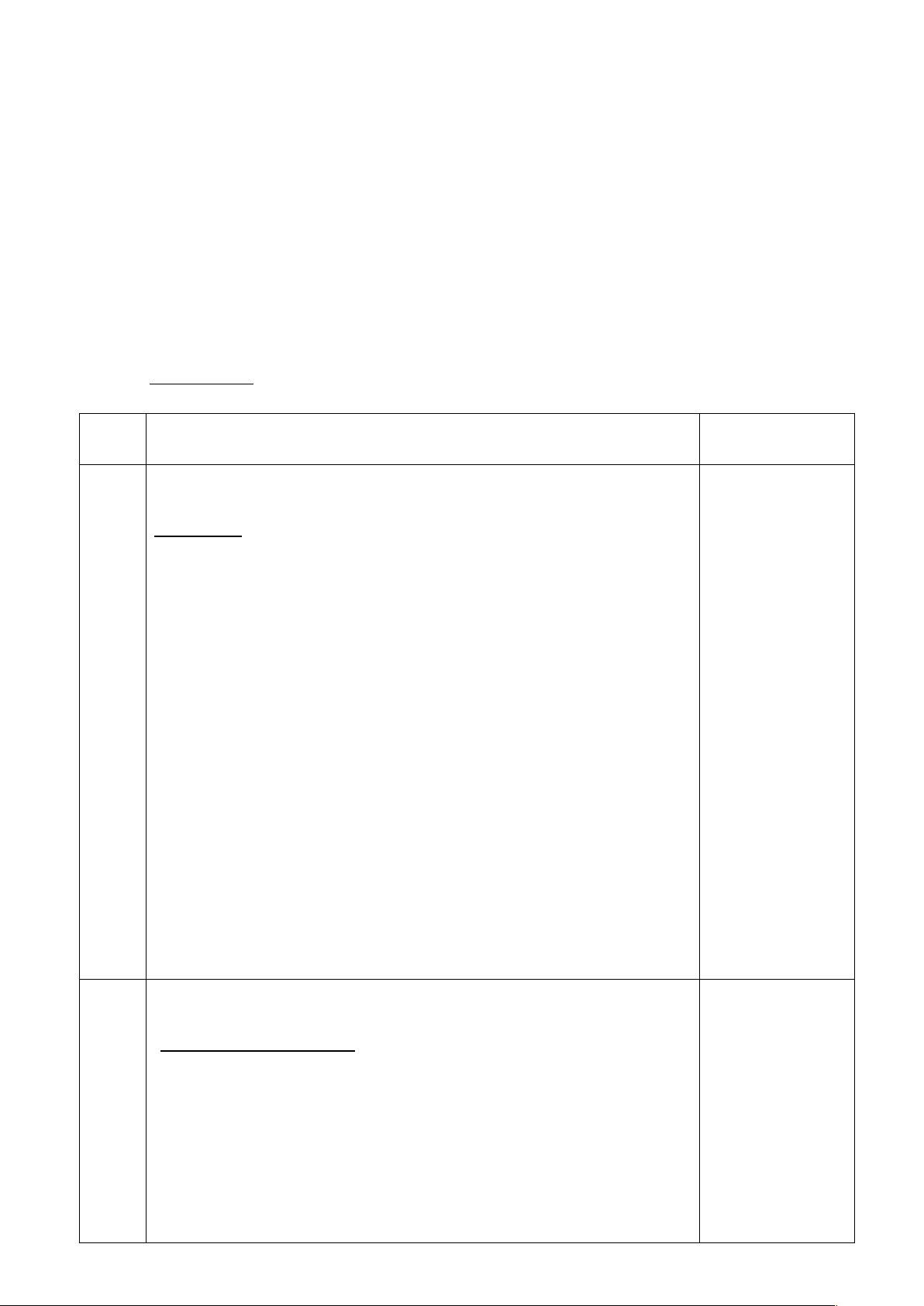

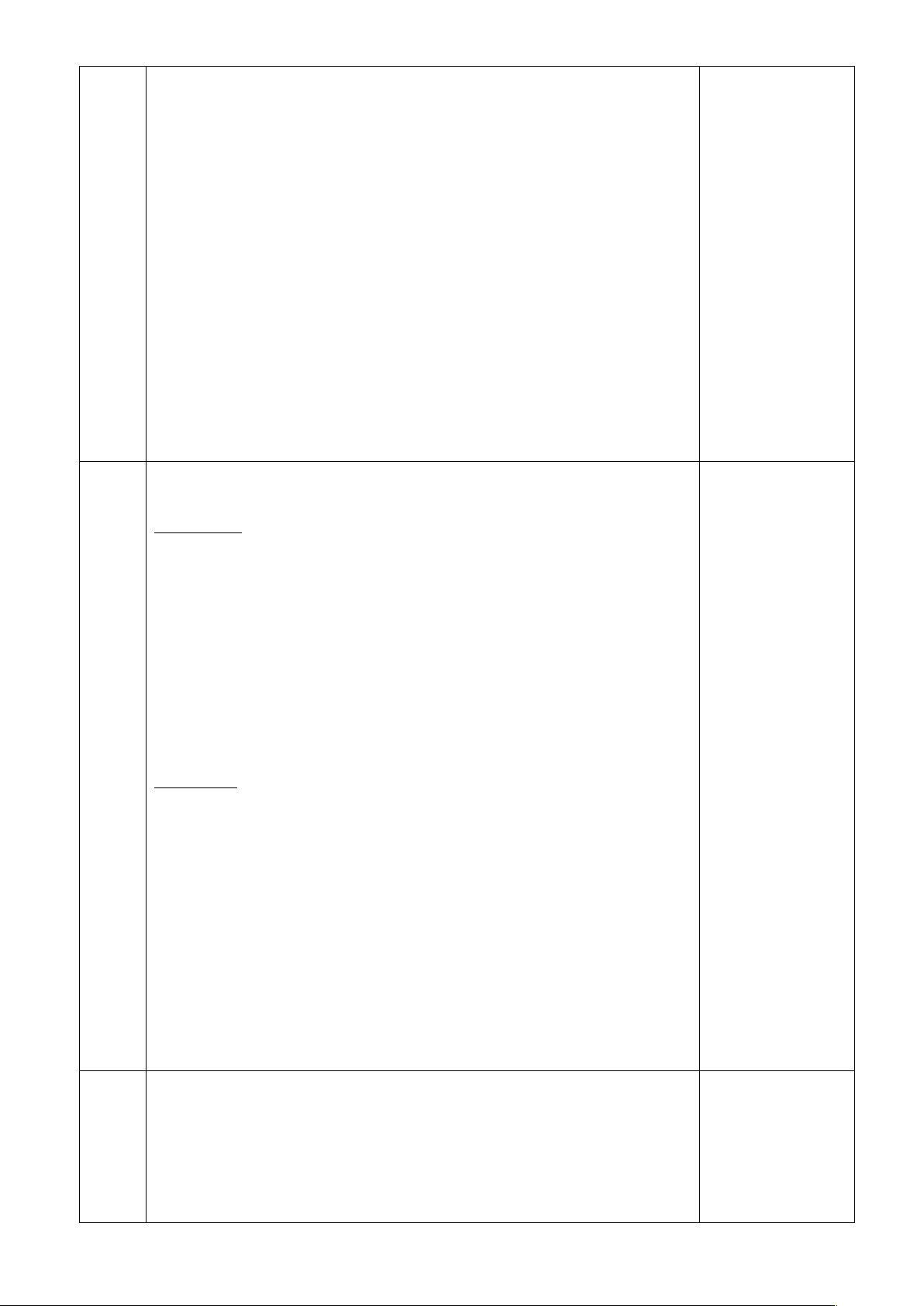


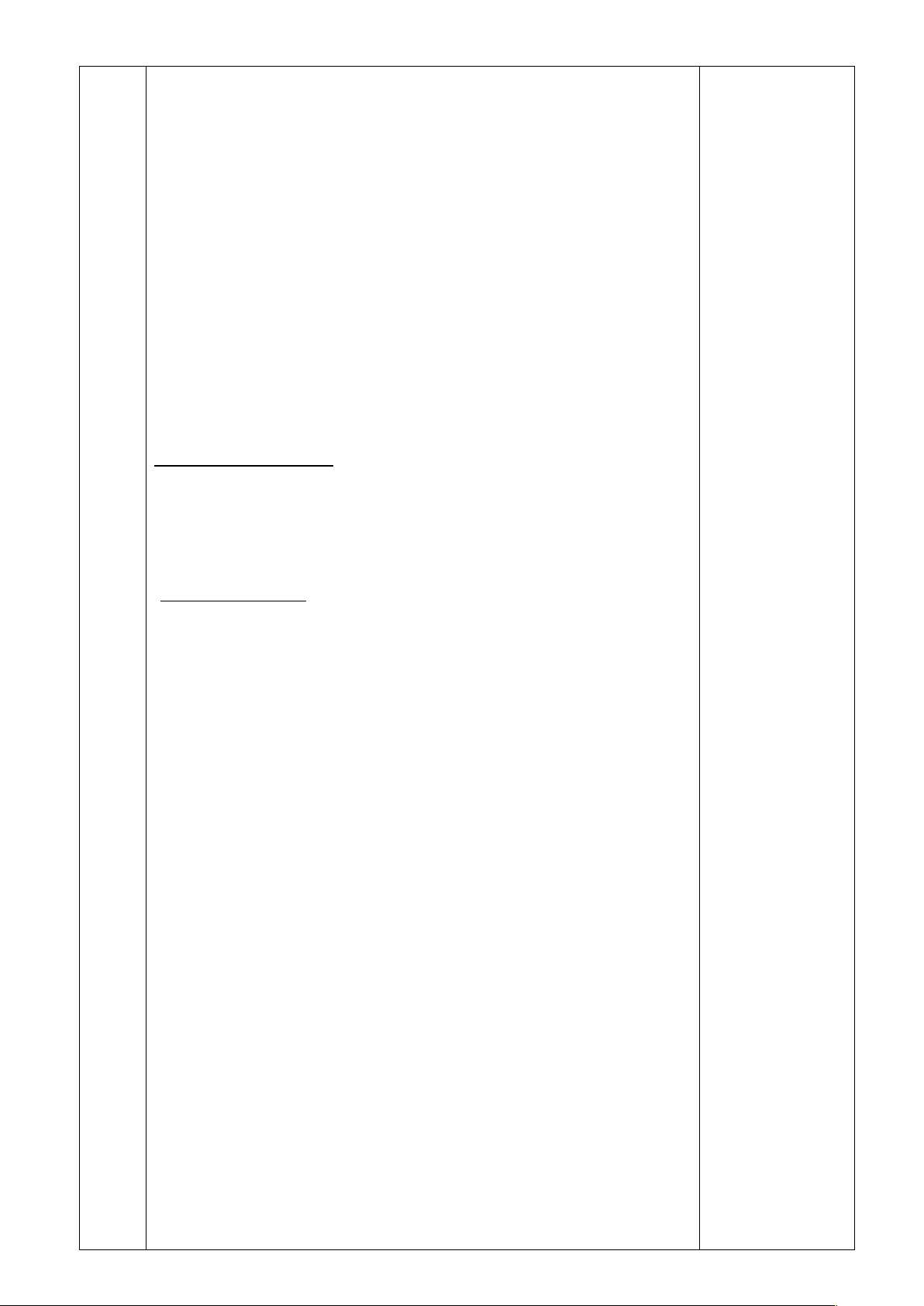
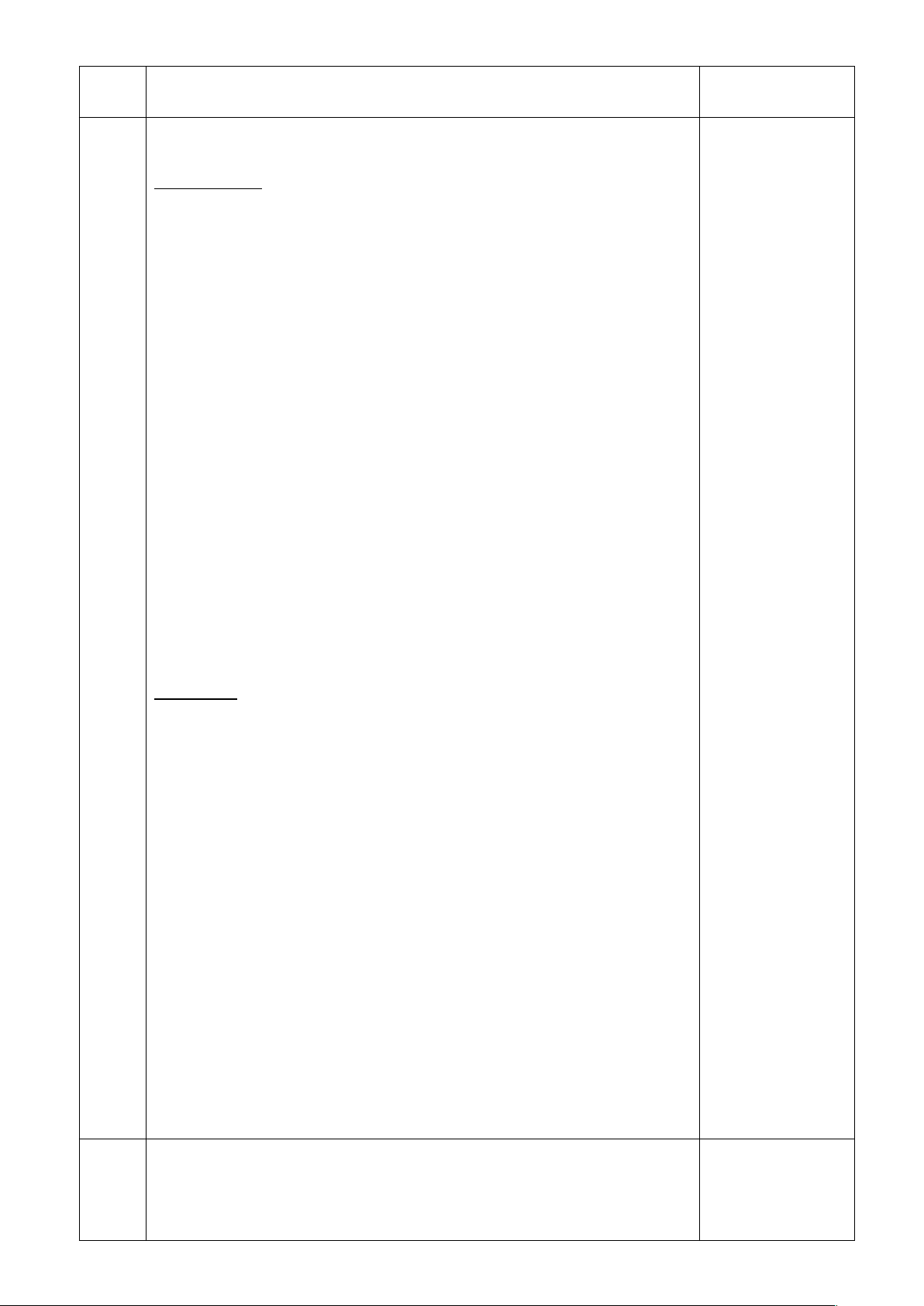
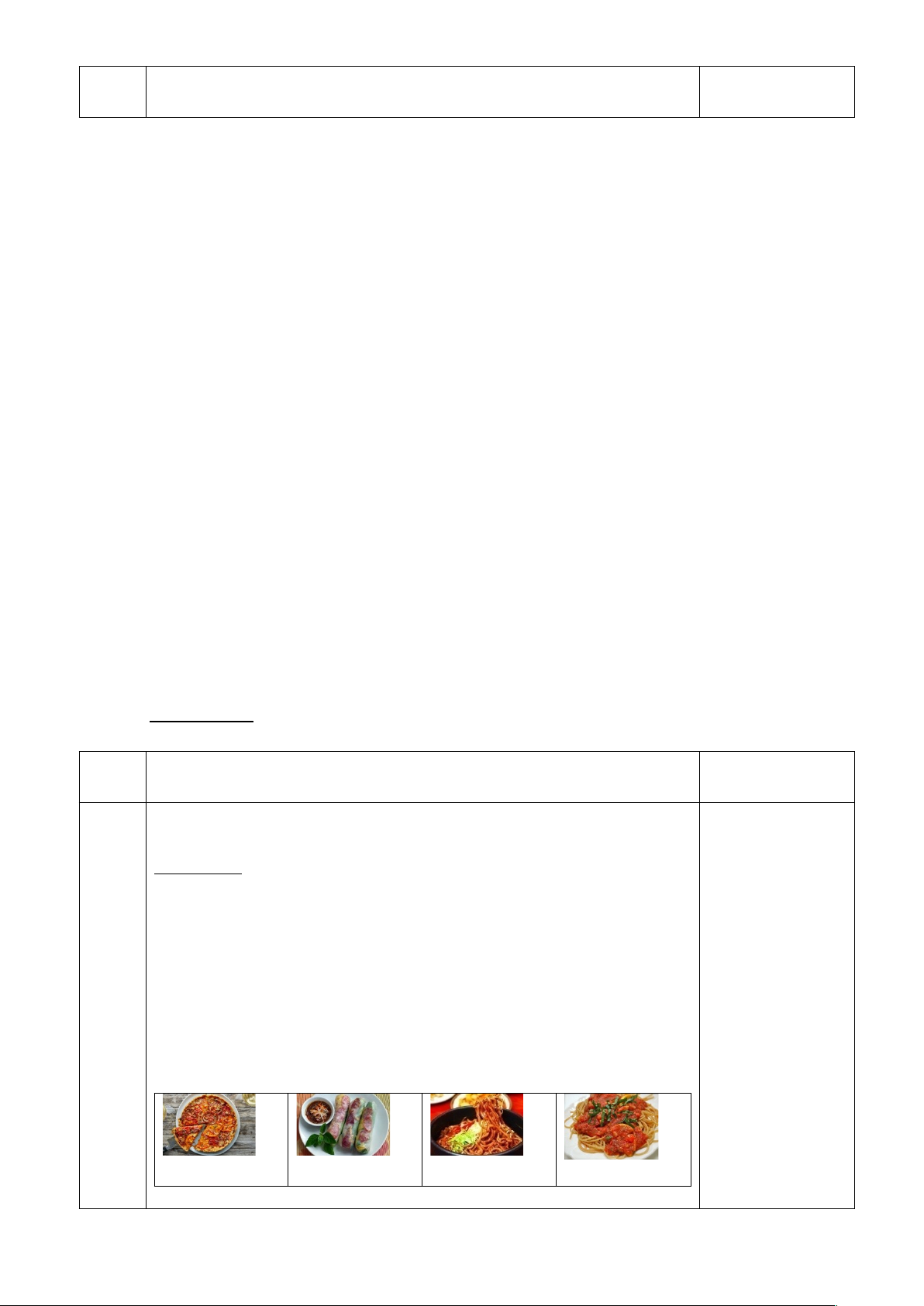
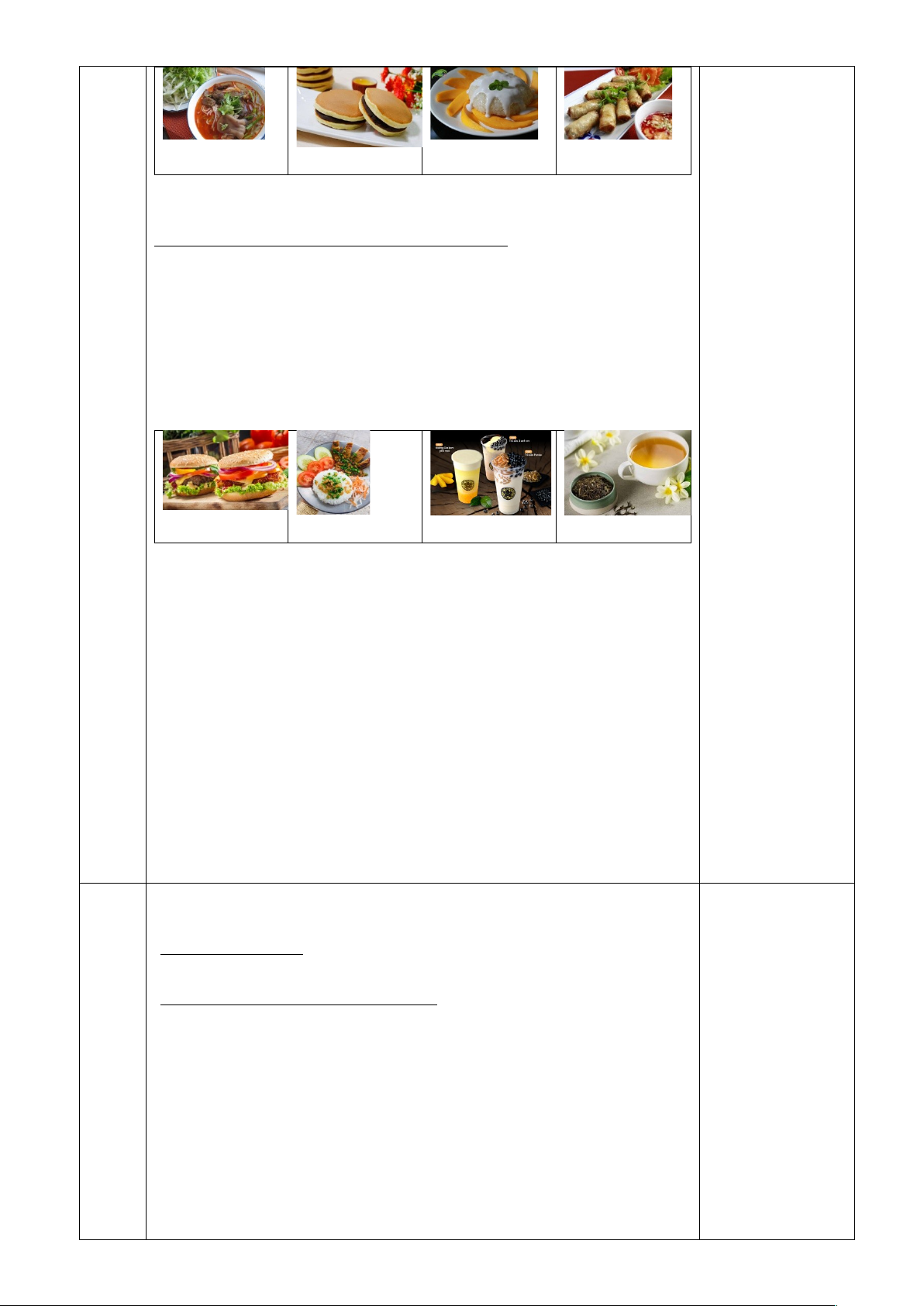
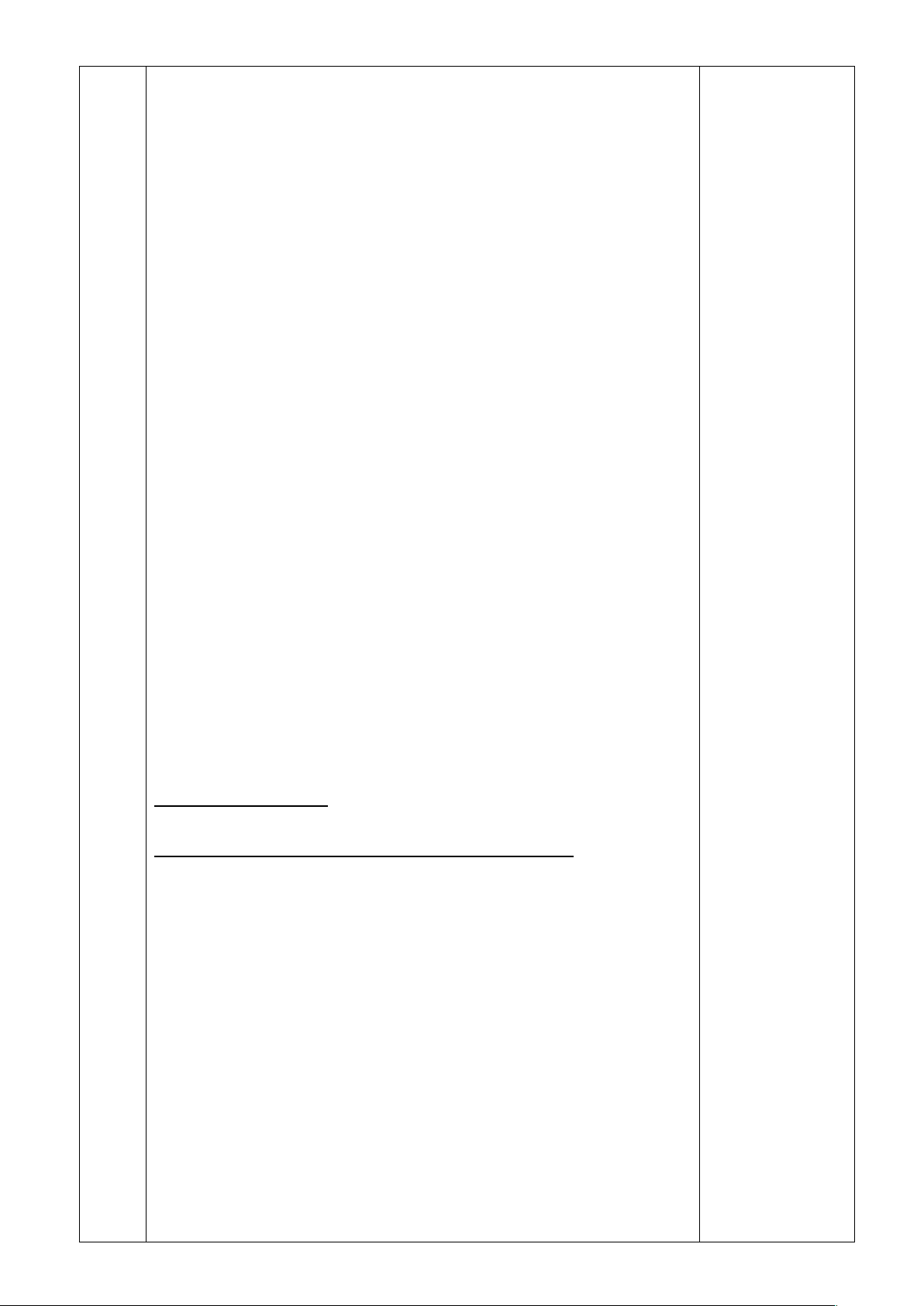
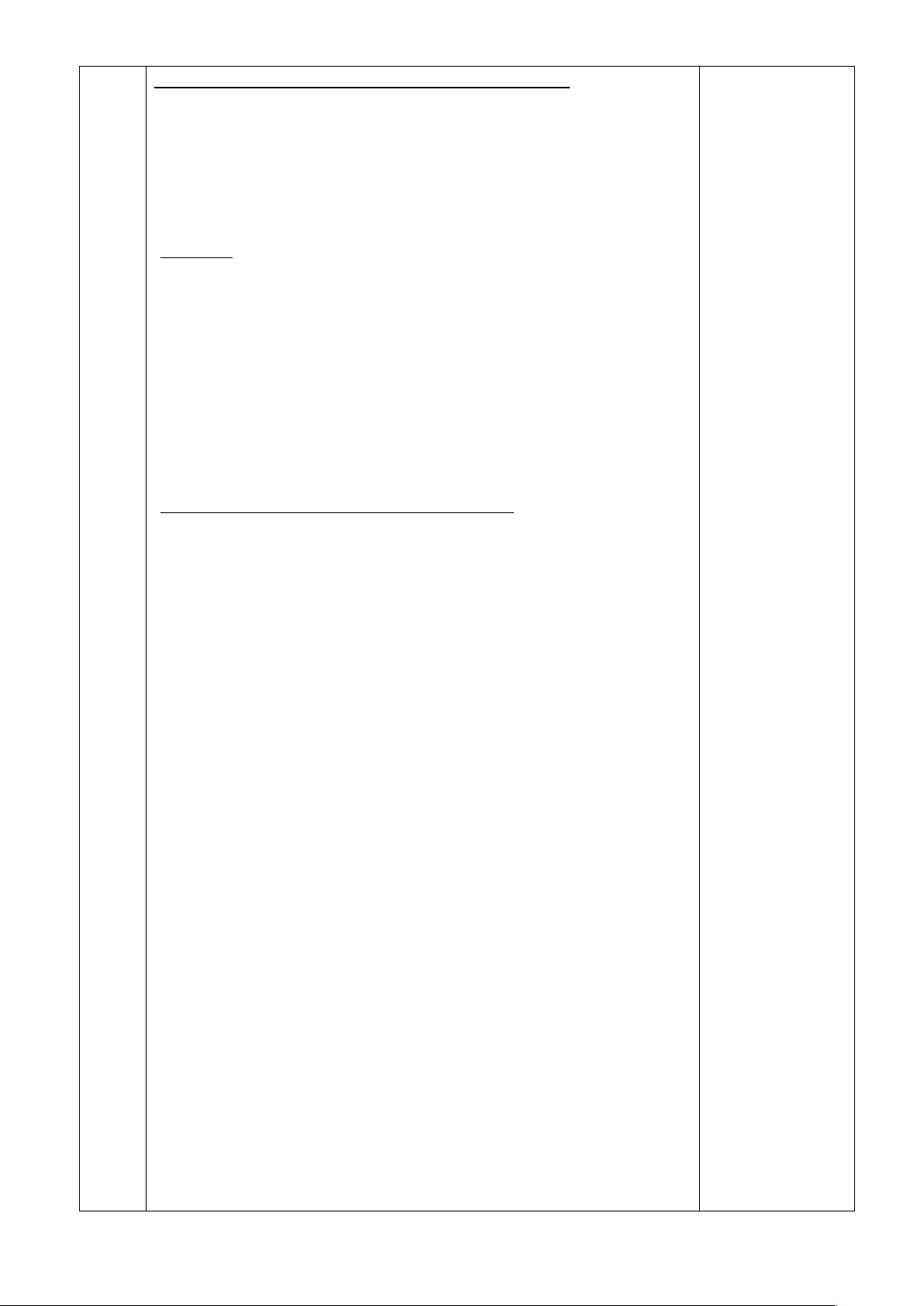
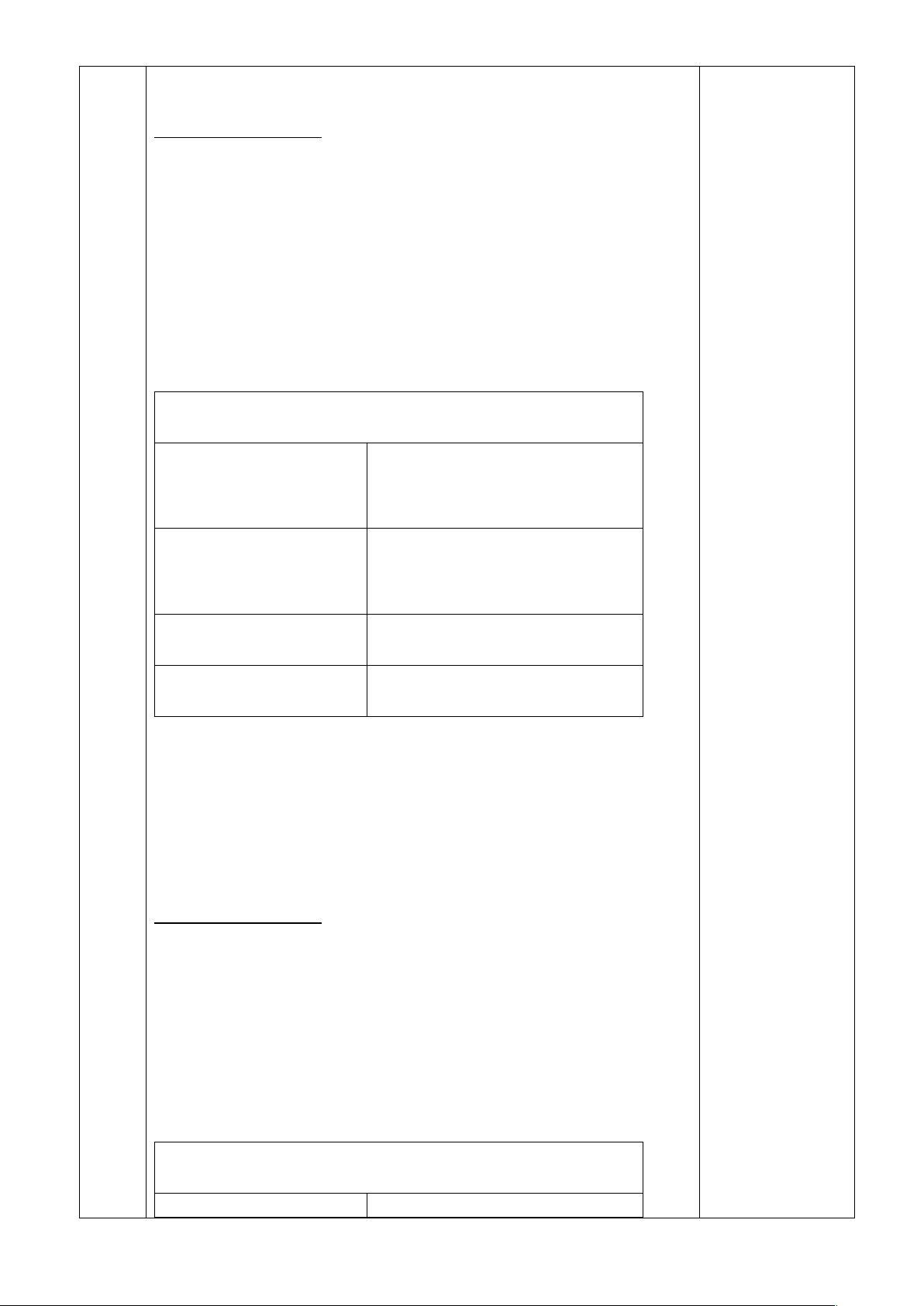

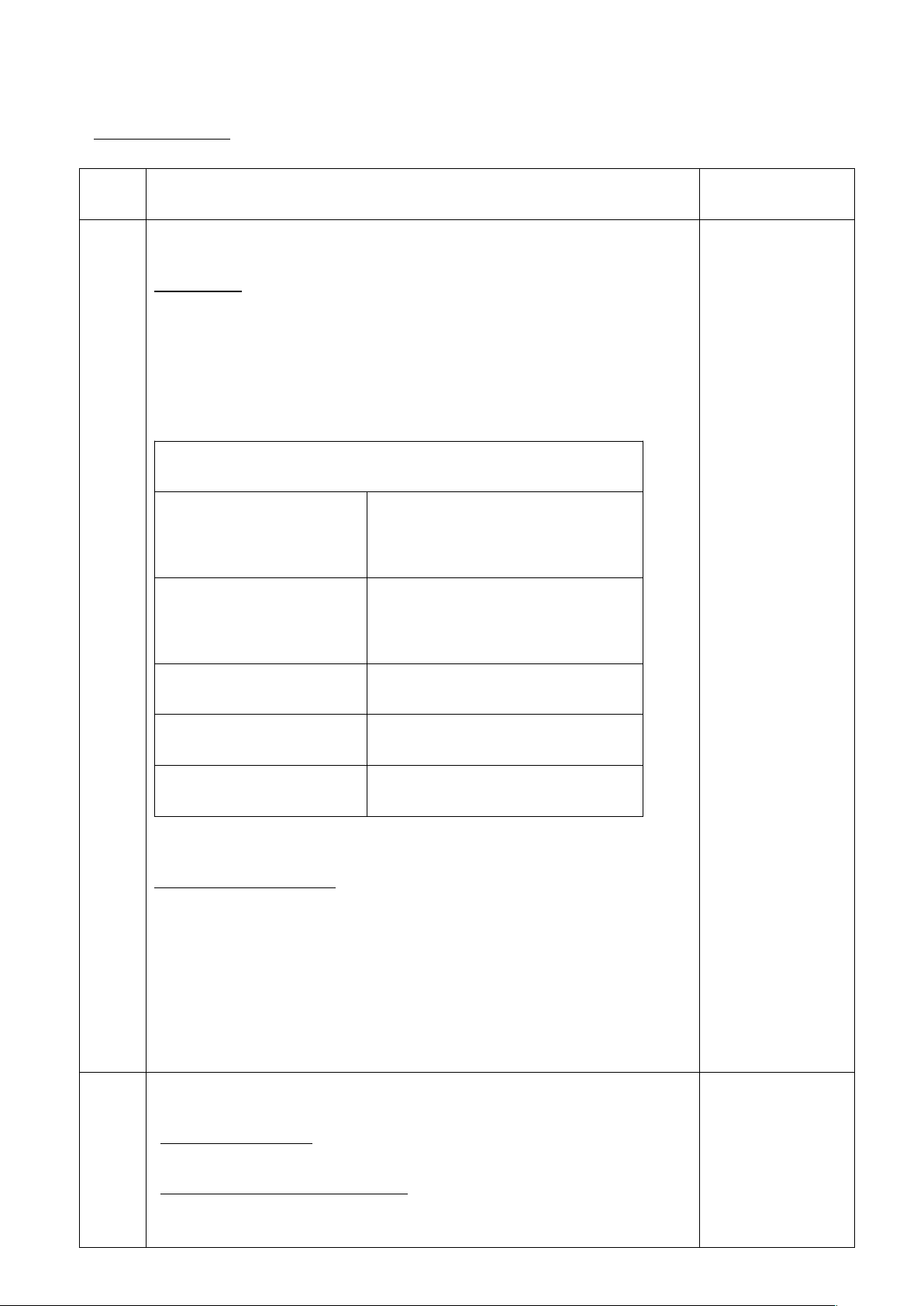
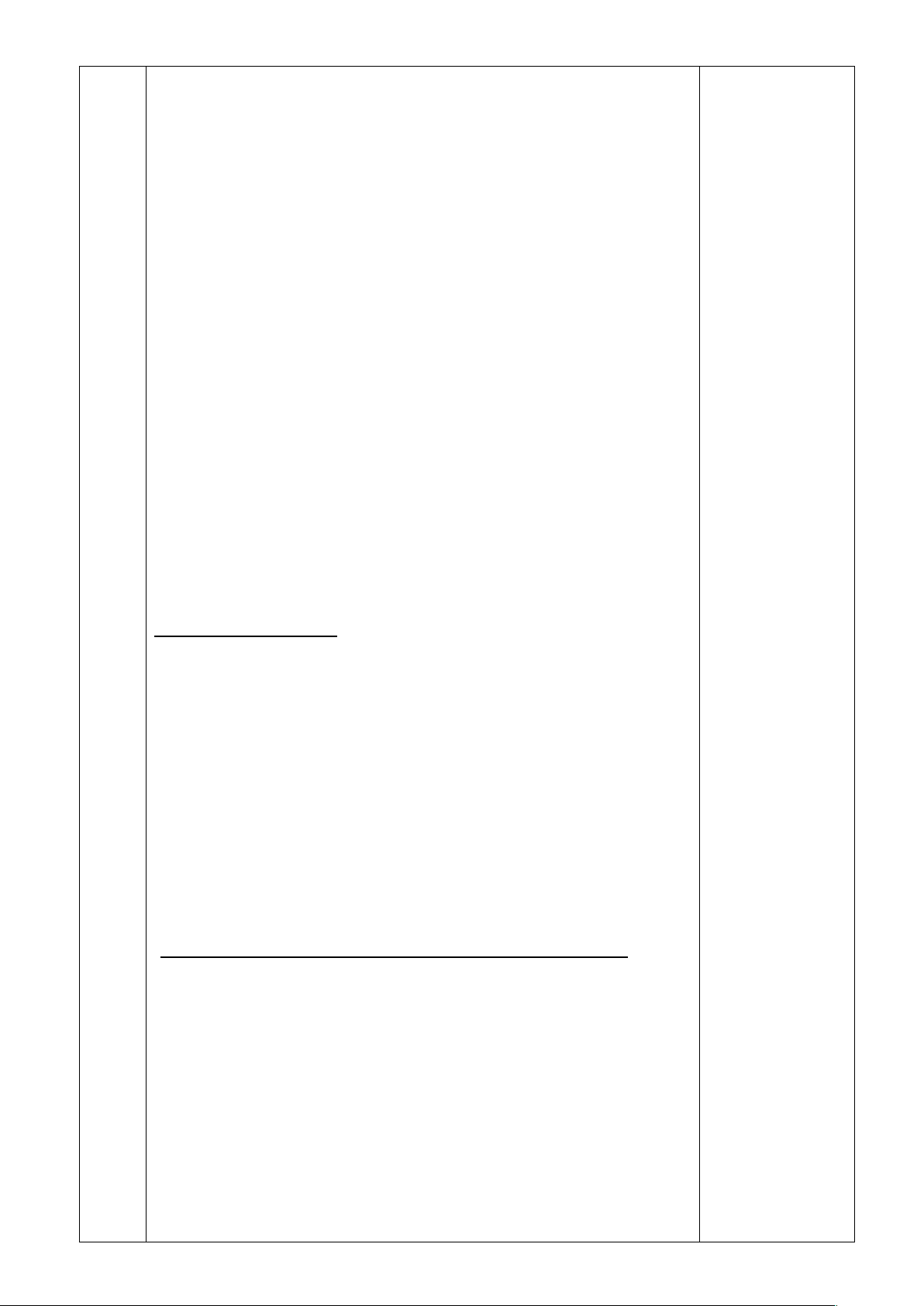
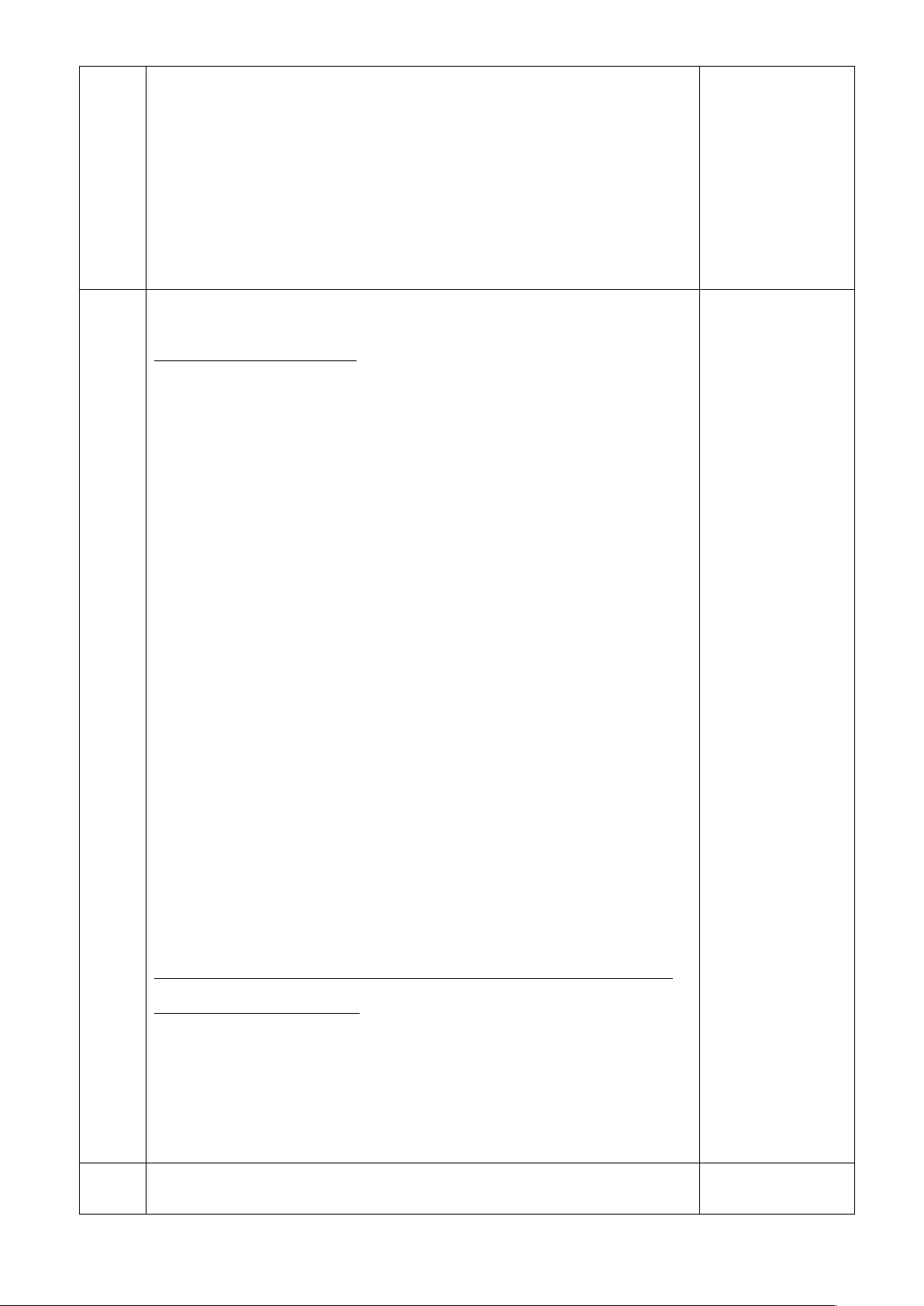


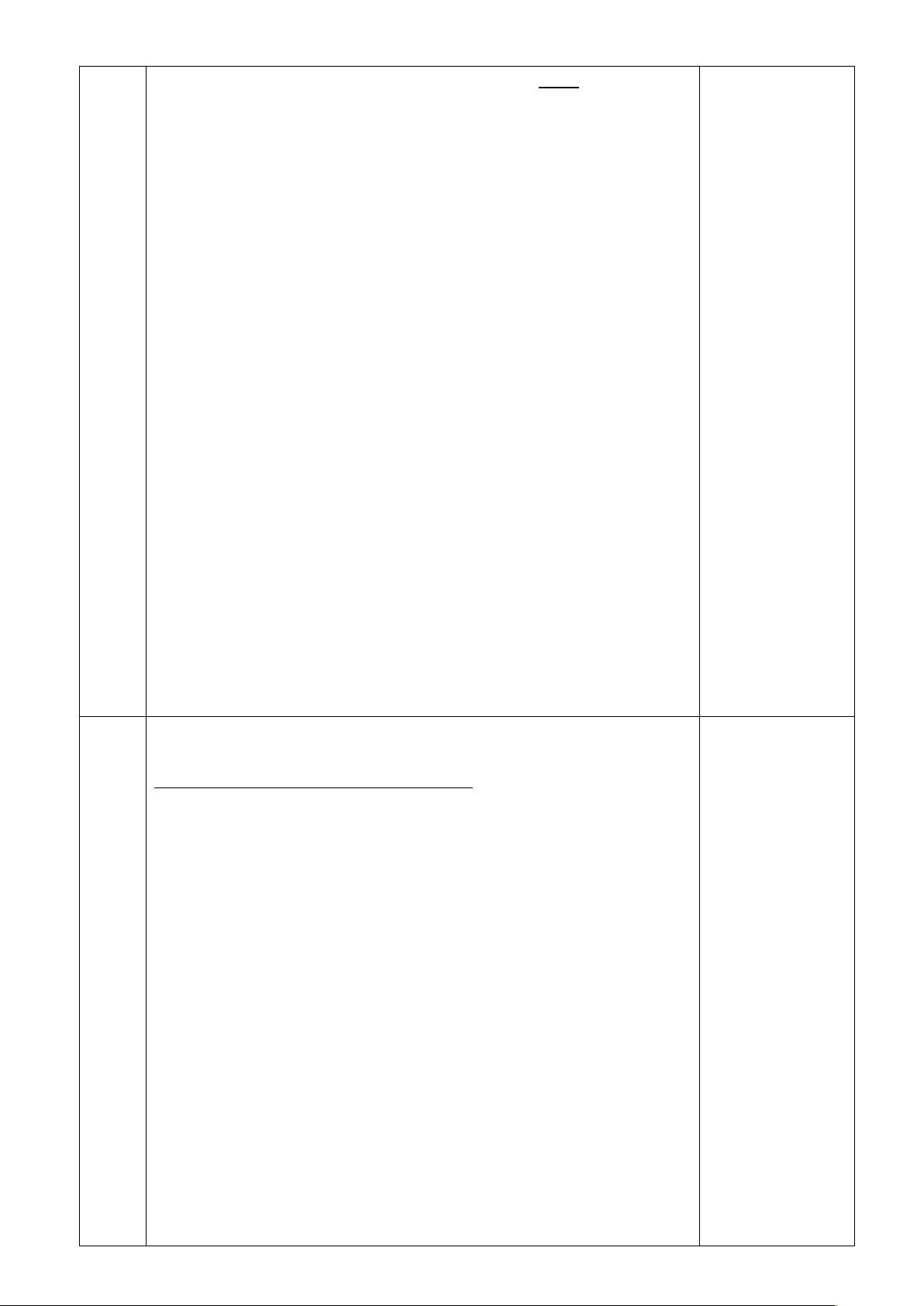

Preview text:
GIÁO ÁN TIẾNG ANH 6
SÁCH i-LEARN SMART WORLD 6 UNIT 1: HOME Lesson 1 (p. 6) I. Objectives:
By the end of this lesson, students will gain the following:
a. Language knowledge and skills
Vocabulary: pool, balcony, garage, yard, gym, apartment.
Useful expression: Excuse me.
Grammar: Simple present (+)
Students will be able to talk about people’s homes and get someone’s attention.
b. Core competencies and Personal qualities -
Developing communication skills and creativity - Demonstrating teamwork skills -
Building their love for family, homes and community II. Teaching aids: -
Teacher’s aids: student book and teacher’s book, class CDs, flashcards, ISB software,
projector/interactive whiteboard/TV. -
Students’ aids: Student books, notebooks, workbooks. III. P rocedures: Time Steps/Activities Organization 5’ Warm-up Option 1: Song: Hello! Teacher – whole class/
- Play audio (The “Hello!” song) to brainstorm the theme of the individuals lesson.
- Teacher and students sing along and greet together.
Option 2: What is in the picture? Teacher – whole class/
- Divide the class into two groups, A & B. groups
- Teacher shows chain of pictures of places. After watching,
groups receive flashcard of the places they have just seen, pick out the ones they saw.
- The winner is the group which has more correct pictures. 25’ New lesson Teacher – whole class/ individuals
- Teacher shows pictures of places again to lead in the new lesson.
- Ask students if they have ever been to any of them.
A-Teach new words. (10’)
- Use real things and pictures to introduce the new words: New words: 1. pool (n) 2. balcony (n) 3. apartment (n) 4. garage (n) 5. gym (n) 6. yard (n)
- Have students listen and repeat each new word. (chorally – individually)
- Correct student’s pronunciation if necessary.
Activity 1. (Checking new word)
- Have students look at the pictures, and fill in the blanks
with words given. (exercise a/p. 6)
- Listen again to check the answers. Answer: Teacher - whole class/ 1. Pool individuals 2. Apartment 3. Gym 4. Balcony 5. Garage 6. Yard
Activity 2: watching a video clip, name the places Teacher –
- Teacher shows a video clip she made about her apartment whole class/
- Have students watch the video, pause sometimes for students to individuals
name the places. (Balcony, kitchen, bedroom, living room, yard, pool, garage).
- Teacher checks, corrects and gives feedback. A
ctivity 3 ( option
al ) : Speaking Teacher – whole class/
- Teacher makes example sentences with new words. pairs
- Ask students to work in pairs, talk about their house, using new words. (exercise b/p. 6)
- Some pairs present in front of the class. - Teacher checks and corrects. Example.
- My house has a balcony.
- There’s a small yard in front of my house... B-Listening. (10’) Teacher – whole class/
- Teacher shows the picture of the task, asks students some pairs
questions about it. (exercise a/p. 6)
Suggested Q&A:
- How many people are there? – Three people
- Are they family members? - No
- Are they classmates? – Yes.
- Teacher has students work in pairs, read the sentences, guess the answers (exercise b/p. 6)
- Listen and check their guess (listen the 1st time)
- Listen again to check their answers. - Teacher checks and corrects. Answer: 1. An apartment 2. bedrooms 3. pool 4. garage
- Teacher shows the dialogue, students listen and repeat. 5’ Wrap-up Option 1: Substitution Teacher – whole class/
- Teacher gives out the open conversation to groups, students groups
practice filling in the gaps, using suggested words.
- Have students practice role playing the dialogue.
- Some pairs present in front of the class. (close pairs, open pairs) Example:
1. An apartment (a house, a flat, a villa) 2. Pool (garden) 3. Garage (gym) Option 2: Speaking.
- Teacher asks some students about their house or apartment
(hand-out, an open dialogue, students answer by themselves.) Teacher –
- Students work in pairs, ask and answer. Students in
- Some pairs present in front of the class. pairs Example:
A. Do you live in a house?
B. ………………………………………… A. Is it big or small?
B. ……………………………………….
A. Does it have a garden?
B. ……………………………………… A. Is there a balcony?
B. ……………………………………….
A. What thing do you like best?
B. …………………………………………………
Option 3: song “We are a Family”
- The whole class sings the song together.
https://www.youtube.com/channel/ UCVcQH8A634mauPrGbWs7QlQ Homework
Write four sentences about your house.
Lesson 1 – Grammar (p. 7) I. Objectives:
By the end of this lesson, students will gain the following:
a. Language knowledge and skills
Vocabulary: review the words (pool, balcony, garage, yard, gym, apartment)
Grammar: Present simple (affirmative, negative, interrogative form)
+ I / you / we / they + live & he / she / it + lives - S + don’t / doesn’t live
? Do / Does + S + live ? – Yes,…do/does. / No, … don’t/doesn’t.
Students will be able to use present simple to exchange information about their homes.
b. Core competencies and Personal qualities
- Developing communication skills and creativity
- Demonstrating teamwork skills
- Building their love for family, homes and classmates II. Teaching aids: -
Teacher’s aids: student book and teacher’s book, class CDs, flashcards, ISB software,
projector/interactive whiteboard/TV. -
Students’ aids: Student books, notebooks, workbooks. III. Procedures: Time Steps/Activities Organization Warm-up
Option 1: Song: We are a family Teacher – whole class
- Play the music, the whole class sings and dances together to
lead in the theme of the lesson. 5’ Option 2: Interviewing
- Some students talk about their house (homework). Teacher -
- Teacher follows, checks and gives feedback. Whole class/ Individuals 25’ New lesson A-Grammar. (10’) Teacher – whole class/
- Teacher shows types of houses, asks students some questions individuals
about them. (use Yes – No questions)
- Teacher shows example sentences and elicits the way of using present simple tense Formation Examples +
I / you / we / they + live I live in an apartment. (V)
She lives in an apartment. He / she / it + lives (V.s/es) - I / you / we / they +
They don’t live in a house. don’t live
She doesn’t live in a house.
He / she / it + doesn’t live ? Do + you / we / they + Do you live in a house? live ?
Does she live in a house? Does + He / she / it + live ?
- Teacher gives some sentences, asks students to change them
into negative and interrogative. (individually)
- Correct student’s answers if necessary. Teacher/ Whole class/
B-Practice. Fill in with correct verb forms (6’) individuals
- Teacher explains the way to do task b/p. 7
- Some volunteer students show the answers on the board. - Teacher checks and corrects. Answers: 1. Lives 2. Have 3. Live – lives 4. Doesn’t have 5. Live 6. Have Teacher –
C-Practice. Complete the dialogue (10’) whole class/ pairs/
- Teacher shows the table, sets the scene of the dialogue. Have individuals
students practice filling the dialogue (pairs)
- Have a pair present in front of the class.
- Teacher asks students to use given clues to complete the conversation.
Suggested answer: 1. No, I don’t. 2. Yes, it does 3. No, it doesn’t 4. No, it doesn’t 5. Yes, it does
- Teacher checks and corrects the answers.
- Students practice reading the dialogue in pairs. 5’ Wrap-up Option 1: Interviewing Teacher – whole class/
- Have students use the same format to ask and answer about their pairs own house.
- Some pairs present in front of the class. Example: 1. Yes / No 2. Yes / No 3. Yes / No 4. Yes / No 5. Yes / No Option 2: Teacher –
- Teacher shows some pictures of houses, one team chooses Students in
a house to describe, and the others find the correct one. groups
- The team who has more correct answers wins the game. Option 3: Teacher – Students in
- Teacher shows some pictures of houses, one team chooses groups
a house to describe, and the others find the correct one.
- Five students attend the game.
- A host student chooses a picture of a house; other students
ask Yes No questions to find out the house. The student
who finally finds out the house wins the game. Homework
Make a table of things that your house has. garde pool garage Yard playgrou Gym balcon n nd y Lesson 1 (p. 8) I. Objectives:
By the end of this lesson, students will gain the following:
a. Language knowledge and skills
Vocabulary: review the words (pool, balcony, garage, yard, gym, apartment)
Grammar: Present simple – Y/N questions Do / Does + S + live ?
Yes,…do/does. / No, … don’t/doesn’t.
Pronunciation: intonation of Y/N questions
Students will be able to ask Y/N questions (present simple) using the correct pronunciation
feature and use them to exchange information about their homes.
b. Core competencies and Personal qualities
- Developing communication skills and creativity
- Demonstrating teamwork skills
- Building their love for family, homes and classmates II. Teaching aids: -
Teacher’s aids: student book and teacher’s book, class CDs, flashcards, ISB software,
projector/interactive whiteboard/TV. -
Students’ aids: Student books, notebooks, workbooks. III. P rocedures: Time Steps/Activities Organization Warm-up Option 1: Song: Hello! Teacher – whole class/
- Play audio (The “Home sweet Home” song) to lead in the theme individuals of the lesson.
- Teacher and students sing and greet together.
5’ Option 2: What things does your house have? Teacher – whole class/
- Some students show the table of their homework, share individuals something about it.
- Other students may ask for more questions if they want.
- Teacher follows and gives feedback, then leads to the new lesson. 25’ New lesson
A-Pronunciation. (10’) Teacher – whole class/
- Teacher shows example sentences to class (affirmative & individuals
negative) and asks them to find the differences.
- Teacher explains the rules, gives more examples to make it clear.
Ex: I live in an apartment.
Do you live in an apartment?
Ex: There is a yard in my house.
Is there a yard in your house?
- Have students listen and notice the change of the intonation (exercise b/p. 8)
- Have them listen & repeat.
- Have students listen and cross out the wrong intonation. (exercise c/p. 8) Further practice:
- Teacher gives some sentences for students to practice - Some students read loudly
B-Practice – Point, ask and answer (10’)
Activity 1: Ask & answer. Teacher - whole class/
- Use real things and pictures to review the words: (apartment, pair work
garage, yard, pool, …………………)
- Teacher asks some students as model.
- Have students practice in pairs, asking and answering Yes – No questions. Example:
1. Do you live in an apartment? – Yes, I do 2. …………… 3. ……………….. 4. ………………. 5.
- Some pairs present in front of the class
- Correct student’s pronunciation & intonation if necessary. Activity 2: discussion
- Have students practice A&A about their home, using Yes/No questions. (exercise b/p. 8) Teacher – whole class/
- Have students work in pairs, share their ideas. pairs
- Some students present in front of the class.
- Teacher checks, corrects or gives feedback. Wrap-up Option 1: Pass the ball Teacher – whole class/
- Give a student a ball, play audio of music and ask him/her to individuals
pass the ball to the student next to him/her and continue with other students. - Stop the music suddenly.
- Students stop passing. The student with the ball will make a
sentence that describes their house or one thing their house has.
- Play the music again and continue this game in the same way. 5’
Option 2: Speaking (Chain game)
- One student makes a sentence to describe their house.
- Another student says the sentence again (change the subject
pronoun) together with a sentence about his house. Teacher –
- The third student does the same way (say the 2 sentences above Students in
again, add one more about his house). groups
- Student who can’t make the chain loses the game.
- The winner will get 1 point for him / her. Homework
Make your own blog: write 5 sentences about your house. Lesson 2 (p. 9) I. Objectives:
By the end of this lesson, students will gain the following:
a. Language knowledge and skills
Vocabulary: (do the) laundry, clean the kitchen, make dinner, make the bed, do the shopping, do the dishes Grammar: Present simple
Students will be able to name housework and say which housework they do at home.
b. Core competencies and Personal qualities
- Developing communication skills and creativity
- Demonstrating teamwork skills
- Having responsibility for doing housework
- Developing the love for family II. Teaching aids:
- Teacher’s aids: student book and teacher’s book, class CDs, flashcards, IWB software,
projector/interactive whiteboard/TV.
- Students’ aids: Student books, notebooks, workbooks. III. P rocedures: Time Steps/Activities Organization 5’ Warm-up Sing a song Teacher – whole class/
- Play audio (The “Home sweet Home” song) to review the song individuals
- Teacher and students sing along and greet together. Teachers -
Option 1: What types of house? students in
- Divide the class into two groups, A & B. groups
- One group has pictures of houses; one group has words.
- Group A shows a picture, group B shows equivalent word, and reverse.
- The winner is the group which has more correct answers Teacher - Option 2: Sticking whole class/ individuals
- Teacher shows a picture of types of houses.
- Display the flashcards of letters on the board.
- Some students volunteer to stick a word that matches with the picture.
- One plus mark for every student having a correct answer. 25’ New lesson Teacher – whole class/ individuals
- Teacher shows a picture to introduce new lesson.
- Ask students if they often do the housework at home.
A-Teach new words. (10’)
- Use real things and pictures to introduce the new words: New words: 1. Do the laundry 2. Do the shopping 3. Do the dishes 4. Clean the kitchen
5. Make breakfast / lunch / dinner 6. Make the bed
- Have students listen and repeat each new word. (chorally – individually)
- Correct student’s pronunciation if necessary.
Activity 1. (Checking new word),
- Teacher lets students fill in the blanks. (exercise a/p. 9)
- Listen again to check the answers. Activity 2: discussion Teacher- whole class/
- Have students practice A & A if they do the housework at individuals home.
- Have students work in pairs, share their ideas. Teacher- students in pairs Activity 3 – Reading: Guessing game
- Teacher shows a picture of Ken’s blog.
- Ask students to guess if Ken does the housework at home. Teacher –
- Students read through the blog, check their guess. whole class/ individuals Scanning.
- Have students read through the blog, check the housework they see in the blog. Do the dishes √ Do the shopping √ Make dinner √ Make the bed √ Clean the kitchen X Clean the room √ Do the laundry √ Vacuum X
Circle the correct answer. Teacher – whole class/
- Have students work in groups, read the blog, and then circle the groups correct answers.
- Students show their answers on the board.
- Teacher checks, corrects or gives feedback. Answer: 1. Ken’s family 2. Ken’s mom 3. Ken’s dad 4. Ken’s dad 5. Ken’s dad Teacher – B-Grammar. (10’) whole class/
- Teacher asks students to list housework that Ken does every individuals day. Suggested answer
I clean the kitchen every day.
He cleans the kitchen every day.
- Teacher underlines the verbs, introduces and elicits the ways to use present simple tense.
- Students follow the teacher, answer the teacher’s questions
- Teacher gives some more examples for students to change
subject pronouns and the verb forms Ex: I do the dishes. He……………………
Activity 1: fill in the blanks, using Present Simple tense.(b/10) Teacher – Students in
- Have students work in pairs; use the verbs given to fill in the pairs
blanks in Present Simple tense.
- Teacher asks some pairs to show their answers. Answer 1. Do 2. Do 3. Cleans 4. Make 5. Does 6. Makes
- Ask some students to check the answers.
- Teacher checks again and gives feedback. 5’ Wrap-up Option 1: Change game Teacher – whole class/
- A student makes a sentence about the housework they do at individuals home.
- The next student says that sentence again (change the subject
pronoun), then adds a sentence about him / her.
- The third student does the same as the previous one.
- Student who can’t make the chain loses the game. Option 2: Speaking. Teacher – Students in - Students work in groups. groups
- Teacher gives out hand-out to groups, students list the housework they do at home.
- Some students share their ideas to the class.
- The winner will get 1 point for him / her.
Option 3: Watch an animation, list the types of housework which they can see.
https://www.youtube.com/watch?v=QOo16hzWLxQ Homework
Make your own blog: write about the housework you do at home. UNIT 1: HOME
Lesson 2 – Grammar (p. 10) I. Objectives:
By the end of this lesson, students will gain the following:
a. Language knowledge and skills
Vocabulary: review ((do the) laundry, clean the kitchen, make dinner, make the bed, do the shopping, do the dishes)
Grammar: Present simple – Wh- questions
Students will be able to use Present Simple to talk about family members and housework.
b. Core competencies and Personal qualities
- Developing communication skills and creativity
- Demonstrating teamwork skills
- Having responsibility for doing housework
- Developing the love for family II. Teaching aids:
- Teacher’s aids: student book and teacher’s book, class CDs, flashcards, IWB software,
projector/interactive whiteboard/TV.
- Students’ aids: Student books, notebooks, workbooks. III. P rocedures: Time Steps/Activities Organization Warm-up Option 1: Blog sharing Teacher – whole class/
- Some volunteer students share their blog to the class. individuals
- Teacher and other students follow them, make questions if necessary.
- Teacher gives feedback and gives marks. Teacher- Option 2: Re-matching whole class/ individuals 5’
- Teacher shows a picture of types of houses together with the
words which are wrong, students have to rematch.
- Display the flashcards of letters on the board.
- Some students volunteer to stick a word that matches with the picture.
- One plus mark for the student having a correct answer.
- Teacher gives feedback, then leads to the new lesson. 25’ New lesson A-Grammar. (10’) Teacher – whole class/
Activity 1: Listen & repeat a/ p. 10 individuals
- Teacher asks students to list housework that he / she does every day. Suggested answer
I clean the kitchen every day.
He cleans the kitchen every day.
- Teacher underlines the verbs, introduces and elicits the ways to use present simple tense.
- Students follows teacher, answer teacher’s questions
- Teacher gives some more examples for students to change
subject pronouns and the verb forms Ex: I do the dishes. He……………………
Activity 2: fill in the blanks, using Present Simple tense.(b/10) Teacher –
- Have students work in pairs; use the verbs given to fill in the whole class/
blanks in Present Simple tense. pairs
- Teacher asks some pairs to show their answers. Answer 1. Do 2. Do 3. Cleans 4. Make 5. Does 6. Makes
- Ask some students to check the answers.
- Teacher checks again and gives feedback.
Activity 3: Write sentences using the prompts
- Have students to work in pairs, practice writing the whole sentences using the prompts Teacher –
- Some students who finish quickly go the board to write the whole class/ answers. pairs
- Teacher checks and gives feedback. Answer: 1. Joe’s mom
2. What housework does your sister do? 3. My dad does
4. Who does the shopping? 5. Mary’s brother.
6. What housework do they do? Suggested option
- The answer may be put in the game “Who’s quicker?
- Two students each turn, put one hand on the shoulder, after
teacher shows the question, student who has a faster clap will answer the question 5’ Wrap-up Option 1: Speaking. Teacher – whole class/ - Students work in groups. groups
- Use the same format of the letter in b / p. 10 to talk about the housework in the home.
- Some students share the story to the class.
- The winner will get 1 point for him / her. Teacher –
Option 2: watch an animation, list the types of housework appear whole class/
https://www.youtube.com/watch?v=QOo16hzWLxQ individuals Homework
Make your own blog; write about the housework your family members and you do at home.
Lesson 2 – Pronunciation (p. 11) I. Objectives:
By the end of this lesson, students will gain the following:
a. Language knowledge and skills
Vocabulary: review ((do the) laundry, clean the kitchen, make dinner, make the bed, do the shopping, do the dishes)
Grammar: Present simple – Wh- questions
Pronunciation: / ɪ / sound
Students will be able to use Present Simple to talk about family members and housework.
b. Core competencies and Personal qualities
- Developing communication skills and creativity
- Demonstrating teamwork skills
- Having responsibility for doing housework
- Developing the love for family II. Teaching aids: -
Teacher’s aids: student book and teacher’s book, class CDs, flashcards, ISB software,
projector/interactive whiteboard/TV. -
Students’ aids: Student books, notebooks, workbooks. III. P rocedures: Time Steps/Activities Organization 5’ Warm-up Option 1: Singing Teacher – whole class/
- Play video (The “Old McDonald” song) to warm up the individuals students.
- Teacher and students sing along and greet together.
Option 2: What do you see?
- Teacher shows some pictures, then asks students to guess what
they see in it. (kitchen / living room/ dinner/ shopping/
sister, ...), pay attention to the / ɪ / sound
- Have students read loudly, then lead to new lesson. 25’ New lesson
A-Pronunciation. (10’) Teacher – whole class/
- Teacher shows examples to class, speaks louder for individuals/
students to recognize the difference. pairs
- Teacher explains the rules, gives more examples to make it clear.
- Have students listen and repeat, focus on the underlined letters (b/p. 11) Answer: 1 ………………. 2. …………………. 3. …………………… - Some students say again.
- Have students listen and cross out the word with different sound (c/p. 11)
- Students practice reading the words in pairs, they cross
correct the pronunciation. Ask teacher for help if necessary. Answer: 1. …………….. 2. …………. Further practice:
- Teacher gives some sentences for students to practice - Some students read loudly.
B-Practice – Point, ask and answer (10’) Teacher-
Option 1: Ask & answer. whole class/ pairs
- Use real things and pictures to review the words: (breakfast,
lunch, dinner, laundry, dishes, shopping, living room, kitchen)
- Teacher asks some students as model.
- Have students practice in pairs, ask and answer about the family and the housework. Example:
1. Do you often do the housework at home? – Yes, I do
2. Who cooks meals in your house? – My mom does 3. ………………..
- Some pairs present in front of the class
- Correct student’s pronunciation & intonation if necessary. Option 2: discussion
- Have students practice A&A about their home, use yes No Teacher – questions. (exercise b/p. 8) whole class/
- Have students work in pairs, share their ideas. pairs
- Some students present in front of the class.
- Teacher checks, corrects or gives feedback. 5’ Wrap-up
Option 1: Doing a survey: Teacher – whole class/
What housework do your family members do? groups
- Have students work in group of four; (3 families and a reporter). (a/p. 11)
- After completing the survey, the reporter will report the result in front of the class.
- Play the music again and continue this game in the same way. Option 2: Speaking.
- Students work in groups of four, take turns to talk about the
housework their family members do.
- Some students volunteer to share in front of the class. Option 3: Speaking.
- Have students answer the question:
Which housework do you like doing best? Why?
- Some students volunteer to share their ideas.
- Plus mark is given to students who do well. Homework
Write about the housework you like doing best. Why? UNIT 1: HOME
Lesson 3 – Geography (p. 12) I. Objectives:
By the end of this lesson, students will gain the following:
a. Language knowledge and skills
Vocabulary: south, west, north, south, village, town, city, hometown
Grammar: Present simple – Where is….? Is it….? What’s it famous for?
Students will be able to ask and answer about villages, towns and cities.
b. Core competencies and Personal qualities
- Developing communication skills and creativity
- Demonstrating teamwork skills
- Developing the love for community, country and the world II. Teaching aids: -
Teacher’s aids: student book and teacher’s book, class CDs, flashcards, ISB software,
projector/interactive whiteboard/TV. -
Students’ aids: Student books, notebooks, workbooks. III. P rocedures: Time Steps/Activities Organization Warm-up Option 1: odd one out Teacher – whole class/
- Teacher shows four pictures of housework each time, students individuals
have to find and choose the one that does not belong to the group.
- Teacher and the whole class check and correct. 5’
Option 2: Which town or city?
- Teacher shows some pictures of town or cities in Vietnam and
in the world, and then asks students to give its name.
- Teacher gives feedback, then lead to new lesson. 25’ New lesson A-New words. (10’) Teacher – whole class/
Activity 1: Teaching new words. individuals
- Teacher uses pictures to elicit the meaning of new words.
- Have students listen and repeat. (chorally – individually)
- Teacher checks and corrects the pronunciation if necessary. New words: 1. south (n) 2. north (n) 3. west (n) 4. east (n) 5. village (n) 6. town (n) 7. city (n) Checking new words:
- Teacher shows pictures, students say the words. Activity 2: Practice: Option 1: Gaps fill Teacher - whole class/
- Have students fill in the blanks in exercise a/p. 12 (the individuals compass) (individually)
- Some students give answers. Teacher checks and corrects.
- Have students fill in the blanks in exercise b/p. 12 Answer: 1. Village 2. Town 3. City Option 2: Speaking
- Teacher shows places in Viet Nam, students look and tell if
they are villages, towns or cities. B-Listening. (10’)
Activity 1: Listen to a boy talking about his hometown.
- Teacher shows the Listening on page 12, lets students look and describe it. Teacher –
- Teacher shows a guided question. whole class/
“Listen, answer: Does he like living there? individuals Answer: Yes
- Have students listen and answer Yes – No.
- Listen again to check the answer (a/p. 12)
- Activity 1: Listen and circle True – False
- Have students listen and circle True - false. (exercise b/p. 8)
- Teacher gets the answers from students. Teacher –
- Ask them to correct the false ones. whole class/
- Teacher checks, corrects or gives feedback. individuals Answer: 1. True 2. False 3. False 4. True 5’ Wrap-up
Option 1: Writing & Speaking Teacher – whole class/
- Teacher shows a chart of Luca’s house. Have students work in groups
groups of four, fill in missing information. North of Italy Small Luca village weather Famous for … My house is
- Students from groups show their result to class.
- Teacher checks and gives feedback. Option 2: Speaking.
- Students work in groups of four, use the same format of Luca’s
house to talk about the place they live. Teacher –
- Some students volunteer to share in front of the class. students in groups Homework
Make a chart of information about the place you live.
Lesson 3 – Geography (p. 12) I. Objectives:
By the end of this lesson, students will gain the following:
a. Language knowledge and skills
Vocabulary: review (south, west, north, south, village, town, city, hometown)
Grammar: Present simple – Review (Where is….? Is it….? What’s it famous for?)
Students will be able to ask and answer about villages, towns and cities in Vietnam and
other countries; write about their hometown.
b. Core competencies and Personal qualities
- Developing communication skills and creativity
- Demonstrating teamwork skills
- Developing the love for community, country and the world II. Teaching aids: -
Teacher’s aids: student book and teacher’s book, class CDs, flashcards, ISB software,
projector/interactive whiteboard/TV. -
Students’ aids: Student books, notebooks, workbooks. III. P rocedures: Time Steps/Activities Organization Previous lesson Option 1: Speaking Teacher – whole class/
- Students show the information about the place they live individuals (homework).
- Other students make questions to find more information about it.
- Teacher and the whole class check and correct.
Option 2: Village, town or city? Teacher – whole class/
- Teacher shows some sentences on the screen, students read, individuals 5’
then choose a place for each person. Example:
1. Nam likes modern houses, tall buildings and a lot of people
where he lives. He likes to live in the ………………… (city)
2. Mai doesn’t like tall houses, busy streets because it’s noisy.
She likes to live in the …………………….. (village)
3. I like to live in……………because it has many houses,
parks and stores but it’s not as crowded as the city. (town)
- Teacher gives feedback, then leads to new lesson. 25’ New lesson A-Reading. (10’) Teacher –
Activity 1: Teaching new words. whole class/ individuals
- Teacher shows some pictures or a short clip of Floating
market, asks students some questions about this place. Example:
1. Do you know this market? 2. Where is it?
3. Have you ever been there?
4. What do you know about it?
- Teacher gets the answers, then teaches some new words.
- Have students listen and repeat. (chorally – individually)
- Teacher checks and corrects the pronunciation if necessary. New words: 1. Floating market (n) 2. Delta (n) 3. grow (v) 4. Farmer (n) 5. Important (a) 6. Business (n) 7. Transportation (n) Checking new words:
- Teacher shows pictures, students say the words. Activity 2: Practice:
Option 1: Answer the questions Teacher-whole
- Have students work in pairs, read the text and answer the class/ pairs questions
- Some students give answers. Teacher checks and corrects. Answer:
1. It’s in the south of Vietnam
2. It’s famous for the floating market and beautiful rivers. 3. It’s hot
4. They grow rice, vegetables and fruit trees. Option 2: Reviewing
- Teacher asks students questions to summarize about Can Tho.
Can Tho: south of Vietnam, big city, floating markets, Teacher –
beautiful rivers, grow rice, vegetable and trees. whole class/
- Teacher leads in the next task (speaking) individuals
B-Speaking (10’) What do you know about these places?
Activity 1: planning a geography presentation.
- Teacher asks students to work in four groups. Two groups are Teacher –
going to talk about Colmar, the other two are going to talk about whole class/ Clovelly. groups
- Representatives from groups share the presentation to class.
- Teacher checks and gives feedback.
Activity 2: planning a geography presentation about a place you know
- Volunteer students talk about it.
- Teacher checks and gives feedback. 5’ Wrap-up Option 1: Writing Teacher – whole class/
- Teacher uses the table in the book, has students fill in the table individuals with their own information. My hometown What / name / town? My hometown
is………………………….. Where / hometown? Is / town / city? What / famous for? What / weather like? What / like about it?
- Students show their result to class. (individually)
- Teacher checks and gives feedback. Homework
Write a paragraph about the place you live. Review (p. 86) I. Objectives:
By the end of this lesson, students will gain the following:
a. Language knowledge and skills
Vocabulary: words related to home, family members and housework; towns, cities and villages.
Grammar: Present simple
Students will be able to listen and read about family members and housework; towns,
cities and villages around the world.
b. Core competencies and Personal qualities
- Developing communication skills and creativity
- Demonstrating teamwork skills
- Having responsibility for doing housework
- Developing the love for family, community, country and the world II. Teaching aids: -
Teacher’s aids: student book and teacher’s book, class CDs, flashcards, ISB software,
projector/interactive whiteboard/TV. -
Students’ aids: Student books, notebooks, workbooks. III. P rocedures: Time Steps/Activities Organization 5’ Previous lesson Option 1: Speaking Teacher –
- Teacher shows pictures, students look at pictures and give the whole class/
word that matches the pictures. (house & housework) individuals
- Have the whole class listen and repeat the words.
Key: make breakfast, do the shopping, village, do the dishes, do
the laundry, apartment, garage, balcony Option 2: Crossword
- Teacher shows a crossword, students look and find the words
that fit the boxes. (house & housework)
- Teacher checks and gives feedback.
- Have students read all the words. 25’ New lesson A-Listening. (10’)
Activity 1: Teaching new words. Teacher – whole class/
- Let students listen to the talk between Jack and his friends individuals about his family.
- Students listen and check the housework his family members do. Answer: 1. A 2. F 3. G 4. E 5. B
- Teacher gets the answers, then teaches some new words.
- Have students listen and repeat. (chorally – individually)
- Teacher checks and corrects the pronunciation if necessary. Activity 2: Reporting
- Students take turns to report the housework each family member in Jack’s family does Teacher/ whole class/ Example: individuals
- Jack’s mother does the laundry
- His father does the shopping
- His sister …………………………
B-Speaking.(10’) read and choose the correct answer Teacher –
Activity 1: planning a geography presentation. whole class/ groups
- Teacher asks students to work in groups. Each group reads
about one place (two groups have the same paragraph).
- Groups show the answers on the board. Groups cross check the answers.
- Teacher checks and corrects. Wrap-up
Option 1: make a draft of a beautiful place Teacher – whole class/
- Teacher divides the class into four groups; each group is making groups
plan to talk about a beautiful place (hand-outs from teacher). Beautiful places Groups 1 Cuc Phuong national park Group 2 Hoi An ancient town Group 3 Ha long bay 5’ Group 4 Son Doong cave
- Students show their presentation to class.
- Teacher checks and gives feedback. Teacher –
Option 2: make a draft of a beautiful place Students in groups
- Each group chooses a beautiful place; makes plan to talk about it.
- Teacher and other students follow them and give feedback. Homework
Write a paragraph about the place you like. Review (p. 87) I. Objectives:
By the end of this lesson, students will gain the following:
a. Language knowledge and skills
Vocabulary: words related to home, family members and housework; towns, cities and villages.
Grammar: Present simple
Students will be able to remember the words of unit 1, find mistakes in the sentences
using present simple, recognize the words that have different sounds.
b. Core competencies and Personal qualities
- Developing communication skills and creativity
- Demonstrating teamwork skills - Developing self-study skills II. Teaching aids: -
Teacher’s aids: student book and teacher’s book, class CDs, flashcards, ISB software,
projector/interactive whiteboard/TV. -
Students’ aids: Student books, notebooks, workbooks. III. P rocedures: Time Steps/Activities Organization 5’ New lesson A-Vocabulary. (10’) Option 1: crossword Teacher – whole class/
- Teacher shows a crossword with guides, students take turn to individuals
complete the crossword. (answer: balcony, West, dishes, village, yard)
- Have the whole class repeat the words.
- Students use these words to fill in the blanks in the sentences Answer: 1. Balcony 2. West 3. Dishes 4. Village 5. Yard
Option 2: Game: who is quicker? Teacher -
- Teacher divides class into two groups, they compete each other Students in
by giving the answers for the sentences which are shown one by groups one.
- Teacher checks and gives feedback.
- Have students read all the words. 25’
B-Grammar (10’) find and correct the mistakes in each Teacher – sentence whole class/ group work
- Have students work in groups, find and correct the mistakes in the sentences.
- Which group has quicker and correct answer gets plus mark.
- Teacher checks and gives feedback. Answer: 1. Are – is 2. Have – has 3. Cleaning – clean 4. Do – does 5. Does – do 6. Making – make 7. Is – are
- Teacher asks students to give explanation for each answer.
C-Pronunciation. – circle the word that has the underlined
part pronounced differently from the others (10’)
- Teacher explains how to do the task. Teacher –
- Have students work in pairs, complete the exercise whole class/ - Some pairs give the answers. pairs - Teacher checks and corrects. Answer: 1. C 2. A 3. B 4. D 5. A 6. A 5’ Wrap-up
Option 1: supply the correct verb form Teacher – whole class/
- Teacher gives example sentences to review present simple tense individuals
- Have students look and find the mistakes, then correct them. Example:
- My dad work for Viet Tien company.
Answer: work - works
- He don’t drink coffee at night.
Answer: don’t – doesn’t
- Teacher gives some sentences for student to complete.
(supply the correct form of the verbs)
- Students show their answers to the class.
- Teacher checks and gives feedback. Option 2: Speaking Teacher –
- Have students watch an animation: Mr. Bean doing whole class/
housework. (https://www.youtube.com/watch? individuals
v=QOo16hzWLxQ),then answer the question: what household chores does Mr. Bean do?
- Students volunteer to answer the question.
- Teacher and other students follow and give feedback. Answer:
(clean the floor, clean the toilet, do the laundry, clean things,
bake cake, clean the closet, vacuum the floor) Homework
Review all words and grammar notes of the lesson. Lesson 1: p. 14 I. Objectives:
By the end of this lesson, students will be able to:
a. Language knowledge and skills
- Vocabulary: gain vocabulary items about school subjects, including history, P.E (Physical
Education), I.T (Information Technology), music, geography, literature, physics, biology, favorite (adj.)
- Structure: Ask and answer about favorite subjects with the questions – What’s your
favorite subject? – What subject do you like best? – I like …… / My favorite subject is …
talk about subjects they like and dislike at school
b. Core competencies and personal qualities
Raise motivations and interests in learning English as a foreign language
Develop communicative and team-working skills through learning activities
Illustrate problem-solving and critical-thinking skills through learning activities
Establish responsive and independent characteristics to be a life-long learner II. Teaching aids: -
Teacher’s aids: student’s book and teacher’s book, class CDs, flashcards, IWB software,
projector/interactive whiteboard/TV. -
Students’ aids: Student’s book, notebook, workbook. III. P rocedures: Time Steps/Activities Organization Warm-up - Game : CROSSWORD Teacher – Groupworks 5’ Students in
- T divides class into 6 groups, each group has to finish the class
crossword as quickly as possible. -
Teacher gives feedback, then links to the theme: subjects 25’ New lesson
A-Teaching new words. (10’) - Teacher – whole class/
- Use context to introduce the new words: individuals/
- “How many subjects do you have at school?” pairwork - T lists new words :
- history, P.E ( Physical Education)(n)
- I.T ( Information Technology) (n) - Music(n) - Geography (n) - Literature)(n) - Physics (n) - Biology (n) - favorite (a)
- Teacher uses pictures to illustrate the meanings
- Have students listen to and repeat each new word. (individual)
- Ask the meaning in mother tongue as a confirmation.
- Have students read all the words together (chorally). Correct
student’s pronunciation if necessary. Teacher/ Whole class/ Checking new words: pairwork
- Teacher lets pictures of subjects appear one by one, students look and name these things.
Activity 1: match the words to the pictures (a /p.14):
- Demonstrate the activity using sample.
- Have students number the picture
- Divide class into pairs and have them check their answers with the partners
- Check answers as a whole class. Teacher –
- Play audio, have students listen and repeat. groupwork Answer: 1. History – C Teacher – 2. P.E – H whole class/ 3. I.T - G individuals 4. Music – B 5. Geography - D 6. Literature - E 7. Physics – F 8. Biology - A
Activity 2: group work (b/p. 14).
- T has students note three more subjects and discuss if they like them
- Have some students share their ideas with the class.
Activity 3 : listening (a, b / p 14)
- T introduces the context of listening, has students listen and
complete the faces in the blanks.
- T has students listen two times, then discuss in groups - T checks and gives feedbacks Answer : Listening a : Sarah Listening b: 1. Art 2. P.E 3. Geography 4. P.E B-Speaking. (10’) - T demonstrates the activity
- T plays audio, has students listen and fill in the blanks
- T checks answer as a whole class STRUCTURES:
- What subjects do you like? – I like biology
- What subject don’t you like? – I don’t like music
- What’s your favorite subject? – My favorite subject is Art Wrap-up Activity : Survey Teacher – whole class/
- T has students work in groups. One student is group leader. 5’ individuals
- T explains the activity, makes model Example:
Hello, my name is ……. .There are 4 members in my group:
…….. Hoa likes Math; she doesn’t like English……. Homework
Write about the subjects you like & dislike. ( 4-5 sentences)
Do exercise a, b, c / p 12 (workbook) UNIT 2: SCHOOL Lesson 1: p. 15 I. Objectives:
By the end of this lesson, students will be able to talk and list two or more ideas about the
favorite subjects in a sentence. II. Teaching aids:
- Teacher’s aids: student’s book and teacher’s book, class CDs, flashcards, IWB software,
projector/interactive whiteboard/TV.
- Students’ aids: Student’s book, notebook, workbook. III. Language focus:
- Vocabulary:review some vocabulary about subjects.
- Structure: what’s your favorite subject ? – What subject do you like best ? what’s yours?
I like ……………….… / My favorite subject is …………..…/ Mine is …………… IV. P rocedures: Time Steps/Activities Organization Warm-up Chain game: Teacher – whole class
- T has students take turn to ask the person next to the question
“What is your favorite subject?” 5’
I like …./ My favorite subject is…..
- T explains the rule: The answers of students must be different
from the ones in the same table. 30’ Practice Teacher – whole class/
Activity 1 (7’): who writes faster? pairwork
- Teacher demonstrates the activity: T shows the pictures of subjects on the screen.
- Each student from 2 groups will write the word as quickly as possible.
- Teacher checks the dictation.
Activity 2 : Pair-work (5’)
- Teacher asks students to look at the picture.
- Play audio and have students listen and read the conversation in Teacher – silent. pairwork/
- Have students practice in pairs. individual
Activity 3 : Circle the correct words (pair – work)
- T makes example for the task. Teacher-
- Have students discuss in pairs, circle the answers. whole class/
- Have students share their answers with class. individuals Grammar : 1. Using and/ or for listing
Ex: I like Math and biology.
I don’t like Math, biology or music.
2. Possessive pronouns : mine / yours
We use mine, your o we don’t say the same words (ex: your favorite subject
Ex: My favorite subject is Physics.
What’s yours? (your favorite subject)
Mine is English. (My favorite subject)
Activity 4 : write the sentences using the prompts (individual)
- T makes an example, have students write sentences using the prompts.
- Have pairs check each other’s work.
- Have some students share their answers with the class. Wrap-up Activity 5: Chain game Teacher – 8’
- Teacher asks “which subjects do you like and dislike?” individuals
- Have some students prepare their answers in 2 minutes
(they can write their answers down on the notebook if they
want), then speak out the answers. 3’ Homework
Review new words about subjects
Do exercise a, b / p.13 ( workbook)
Lesson 1: pronunciation - p.16 I. Objectives:
By the end of this lesson, students will be able to notice how the sound changes of the underlined words. II. Teaching aids: -
Teacher’s aids: student’s book and teacher’s book, class CDs, flashcards, IWB software,
projector/interactive whiteboard/TV. -
Students’ aids: Student’s book, notebook, workbook. III. Language focus: - Vocabulary: -
Structure : prononciation: I like history, science, and history.
I like it / It’s OK/ I dont like it. IV. P rocedures: Time Steps/Activities Organization
Game: Which one is about school subject or activities?
- T prepares some mixed vocabulary of two topics. Teacher –
- T divides class into 2 groups, each pair will see the words, clap whole class
hands one time if it is about subject, 2 times if it is about school 5’ activity.
Words: music, soccer club, art club, Math, English,
Biology, Art and craft, Literature, Physics, indoor activity. 25’ New lesson
A-Pronunciation. (10’) Teacher – whole class Activity 1:
- Teacher shows example sentences to class, have students speak loudly.
- Teacher lets students listen and recognize the differences. (b/p. 16)
- Teacher has students listen and repeat
Activity 2: listen and cross one out (c/p. 16) - Students listen and repeat
- Practice reading the sentences with partners Further practice:
- Teacher gives some sentences for students to practice - Some students read loudly
B-Practice – Practice the conversation, swap roles & repeat. Teacher/ (10’) Whole class
Activity 1: reading – play role.
- Teacher lets students choose their own answers.
- A pair of students play role & read aloud the conversation.
- Have students practice in pairs, role play the conversation. Example:
- What subjects do you like?
I like art, physics and math.
- What subject don’t you like? Teacher –
I don’t like Literature and biology. whole class/
- Another pair makes a conversation with their own ideas, then pairs present in front of the class
- Teacher corrects student’s pronunciation if necessary. Teacher – whole class/ individuals
Activity 2: school subjects survey
- Have students fill in the survey for themselves
- Demonstrate the activity by asking and answering with a student.
- Divides class into groups of four.
- Have students take turns by asking and answering, then complete the survey.
- Have some group share their findings with the class. Wrap-up Activity 3: Discussion Teacher –
“Which subjects are the most popular in your group?” whole class/ 5’
- Teacher asks “which subjects are the most popular in your individuals group?”
- Have some students look at their answers and decide, share their findings. Homework 3’
Write about 5-7 sentences, introducing about the subjects they like and dislike. Lesson 2 (p. 17) I. Objectives:
By the end of this lesson, students will be able to understand and talk about some school activities II. Teaching aids: -
Teacher’s aids: student’s book and teacher’s book, class CDs, flashcards, IWB software,
projector/interactive whiteboard/TV, real object of cooking utensils. -
Students’ aids: Student’s book, notebook, workbook. III. Language focus: -
Vocabulary: act (v), sign up (v), outdoor activity (n), art and draft (n), indoor activity (n), drama club (n) - Sturcture: IV. P rocedures: Time Steps/Activities Organization Warm-up Game: Hangman
- Teacher divides class into 4 groups, each group discusses and Teacher – 5’
guesses the letters to find out the key word. whole class
- If students guess correct letter, they will get one mark, two marks Whole class for the key words KEYWORD: SCHOOL ACTIVITY 27’ New lesson
A-Teaching new words. (10’) - Teacher – whole class/
- Use a context to introduce new words, using the simple words and individuals/ pictures pairwork New words: - Indoor activity(n) - Outdoor activity(n) - Act (v) - Sign up (v) - Drama club (n) - Art and crafts (n)
- Teacher uses pictures to illustrate the meanings
- Have students listen to and repeat each new word. (individual)
- Ask the meaning in mother tongue as a confirmation.
- Have students repeat all the words together (chorally).
- Correct student’s pronunciation if necessary. Teacher/ Whole class/ Checking new words: groupwork
- Teacher lets pictures of subjects appear one by one.
- Students look and name these things.
Activity 1: Circle the correct definition for the underlined words Teacher – (a /p. 17): pair works/ individuals
- T demonstrates the activity, making model
- T has students read the sentences and circles the correct definitions.
- T has students work in pairs, discuss and share their answers.
- T checks the answers with the whole class
- T has students listen to the audio and repeat. Answers: 1. indoor activities 2. act 3. drama club 4. sign up 5. outdoor activity Teacher – 6. arts and drafts group works/
Activity 2: group works (a /p.17):
- Teacher has students work in 4 groups, two groups about
indoor activities, two groups about outdoor activities. Each
group will list out as many words about their topic as possible.
- Teacher has some group members share their answers with the class.
Activity 3: READING - group works (a /p.17):
- Teacher shows a picture of Danliver High School, introduces briefly about this school.
- T divides class into 4 groups. Each group has a piece of paper
with their question. They will move to some locations around
classroom to find out their answer.
- In 5 minutes, groups must finish it and come back to their seats.
- Teacher has some members share their answers. Wrap-up
- Teacher has students discuss in pairs, talk about the school Teacher – activities they like pair-works/
Ex: I like soccer club. I usually play every weekend. the whole 10’
- T makes a model to help the student be clear with what they will class say, at least 2 sentences.
- T has students take turns to speak aloud their sentences.
- T corrects the pronunciation mistakes if possible. Homework 3’
Write down 3 sentences about the school activities you like doing. Lesson 2: (p. 18) I. Objectives:
By the end of this lesson, students will be able to practice the structure like + V-ing to
express what you really want to do. II. Teaching aids: -
Teacher’s aids: student’s book and teacher’s book, class CDs, flashcards, IWB software,
projector/interactive whiteboard/TV, real object of cooking utensils. -
Students’ aids: Student’s book, notebook, workbook. III. Language focus: - Grammar : like + V-ing -
Ways to add ING after some verbs IV. P rocedures: Time Steps/Activities Organization Warm-up Game: Pelmanism -
T shows the game with some boxes, explains the rules of the Teacher – game whole class -
T divides the class into 2 groups, each group tries to guess 2
boxes that match correctly, one is name of club, and one is
the picture of activity equivalently. 5’ -
The group guesses more correct answers will be the winner. 25’ New lesson Teacher – whole class/
Activity 1: pair works (a/ P. 18) pairwork
- Teacher has students look at the picture, introduces 2 students
- Teacher has students listen to the audio and read the speech bubbles.
- Teacher has students practice reading aloud.
Further practice:
- Teacher has students replace their own information based on the game above.
- T corrects the pronunciation if possible. Grammar : LIKE + V-ING Ex: Do you like reading books?
- T explains like + V-ing to talk about things we like to do often. Noting ways to add ING
After consonant e: remove e and Ex :make -> making replace with ing Teacher/ Whole class/ After consonant + vowel + Ex : swim -> groupwork
consonant of one syllable verbs : swimming
double the final consonant and add ING
Do not double the final consonant Ex : play -> playing
when the word ends in w, x, or y Teacher –
Activity 2: Individual : Rewrite the verbs using ING whole class/
- Teacher has students do individually, add ING to the verbs to individuals make the ING form.
- Teacher has students check in pairs
- Teacher has some students share their answers with the class.
Activity 3: Pair work : Fill in the blanks
- Teacher has students discuss in pair to fill in the blanks Teacher / pair works
- Teacher has 2 pairs speak out loud to check their answers Answer : 1. Painting
2. Doing outdoor activities 3. Playing tennis 4. Swimming
- Teacher has students practice in pairs.
- Teacher has some pairs speak aloud and corrects pronunciation if possible. Wrap-up
Activity 4: Free speaking Teacher – group –
- Teacher has students work in groups, number the sentences to works/ pair make a meaningful conversation - works
Ms White: Which activities do you want to sign up for? 1
Maria: Yes, I like playing soccer. 4
Ms White: Why don’t you sign up for outdoor sport club or 5 drama club? Maria: Yes, good idea! 6 5’ Ms White: How about soccer? 3
Maria: Yes, it’s fun to act in plays, too. 8
Ms White: Oh. You like outdoor activities. And do you like 7 acting?
Maria: Hmn, I don’t know. I don’t like indoor activities. 2
- Teacher has students share the answer, checks it.
- Teacher has students practice the conversation in pairs.
- Teacher encourages students to make their own conversation and speak out loud. Homework Do exercise b / 15 (workbook) Lesson 2: (p. 19) I. Objectives:
By the end of this lesson, students will be able to identify the sound changes in speaking and listening. II. Teaching aids: -
Teacher’s aids: student’s book and teacher’s book, class CDs, flashcards, IWB software,
projector/interactive whiteboard/TV. -
Students’ aids: Student’s book, notebook, workbook. III. Language focus: -
Prononciation: Yes, I do / No, I don ‘t IV. P rocedures: Time Steps/Activities Organization Warm up Do you like ……? Teacher – whole class
- Teacher makes a model with one student, then calls some pairs to make a short conversation.
- Teacher shows some cards of different clubs at school. Ex : 5’ A: Do you like drawing? B: Yes, I do / No, I don’t.
- Some pairs take turn to make the same , using structure
“Do you like………………….?” New lesson
- Teacher focuses on one example, briefly explains the Teacher –
pronunciation features for positive answers and negative whole class/ answers. pairwork Activity 1 : Pair work
- Teacher has students listen and cross out the option that
doesn’t use the correct pronunciation feature.
- Teacher has some students answer, checks answers as a whole class.
Answer: Yes, I do – wrong, intonation goes up. Teacher/ Activity 2: Role play. pairwork
- Teacher demonstrates the activity by practicing the role-play with 25’ a student.
- Teacher divides the class into pairs to practice the conversation.
- Teacher has them swap roles and practice again.
- Teacher has some pairs speak aloud and checks the pronunciation. Teacher – whole class/ pairs Activity 3 : pair work
- Teacher asks students to work in pairs, using their own ideas to practice with their partners.
- Teacher has some pairs demonstrate the activity in front of class.
Activity 4: SPEAKING: Let’s join a club!
- T demonstrates the activity by practicing the role-play with a student.
- T divides class into pairs to practice the conversation
- T has some pairs demonstrate the role-play in front of the class. Wrap -up
Speaking: Which club do most people want to join? Teacher – whole class/ 5’
- Teacher has students join another pair; discuss which club most individuals people want to join.
- Teacher has some students share their finding with the class.
Ex: As I know, most of my friends like dance club, because it’s fun. Homework
Exercise Writing / p. 15 (workbook) 3’
Teacher can write some example sentences to help students clear out what they will write. Lesson 3: (p. 20) I. Objectives:
By the end of this lesson, students will be able to talk about different kinds of books, practice
some questions about their favorite kinds of book. II. Teaching aids: -
Teacher’s aids: student’s book and teacher’s book, class CDs, flashcards, IWB software,
projector/interactive whiteboard/TV. -
Students’ aids: Student’s book, notebook, workbook. III. Language focus: -
Vocabulary: fantasy (a) , novel (n), mystery (n), adventure (n), author (n) -
Structure: Wh- questions (what / which / who / why…) IV. P rocedures: Time Steps/Activities Organization 5’ Warm up Game: Who is faster? Teacher – -
T divides class into two groups whole class -
T says aloud the name of club, students must say aloud the
activity they can do in that club.
Ex: T says “ I join Art Club”
Students say “You can draw pictures.” -
The group who answers faster will get one point, until T says “ I
join book club”, students say “ You can read books” - T leads to the new lesson. 25’ New lesson New words : Teacher – whole class/
T uses the context, simple English, pictures to illustrate the meaning individuals/ of the words pairwork - fantasy (a) - novel (n) - mytery (n) - adventrure (n) - author (n)
- Have students listen to and repeat each new word. (individual)
- Ask the meaning in mother tongue as a confirmation.
- Have students all together (chorally).
- Correct student’s pronunciation if necessary. Teacher/
Checking new words Whole class/ group work
- Teacher has students match the column A (English) with B (Vietnamese) Activity 1: group work
- Teacher demonstrates the activity using the example.
- Teacher has students read the text; match the underlined words Teacher – whole class/ with the definitions. pairs
- Teacher has some group members share their answers - Teacher checks the answers Answer : 1. Fantasy 2. Adventure 3. Novel 4. Author 5. Mystery Activity 2 : pair work
- Teacher has students ask their partner which story he/she would like to read.
- Teacher has some students share their ideas with the class. Activity 3 : group work
- T introduces 2 students Grace, Jamie.
- T has them listen to the audio to circle the speaker’s favorite kind of book. - Teacher checks their answers
Answer: Grace : mystery Jamie : adventure Activity 4 : group work
- T demonstrates the activity, has students listen to the audio and fill in the blanks.
- T has some group members show their answer, checks them. Answer : 1. Author 2. Interesting 3. Exciting 4. Author Consolidation 5’ Teacher – Speaking whole class/ pair works
- T demonstrates the activity by showing the picture of story book
“Harry Porter”, has students listen to the audio and repeat.
1. What’s your favorite book?
2. What kind of book is it? 3. Who’s the author? 4. Why do you like it?
- T shows some pictures of different books, has students practice in pairs.
- T has some pairs speak aloud in front of the class. Homework 3’
Do exercise …..in the workbook
Lesson 4: READING (p. 21) I. Objectives:
By the end of this lesson, students will be able to understand a review book, write a review about your favorite book. II. Teaching aids: -
Teacher’s aids: student’s book, teacher’s book, CDs, flashcards, IWB software,
projector/interactive whiteboard/TV. -
Students’ aids: Student’s book, notebook, workbook. III. Language focus: -
Vocabulary: interesting (a), peaceful (a), village (n), think – thought (v), wind (n) IV. P rocedures: Time Steps/Activities Organization 5’ Previous lesson
Short clip movie: Yellow flowers on the Green Grass Teacher – whole class -
T has students watch a trailer clip of the film, asks students if they know about this movie.
1. What is the name of the film?
2. Who is the author of this story?
3. Do you know characters in this movie?
4. Who is the director of the film?
Suggested answers “
1. Yellow flowers on the green grass. 2. Nguyen Nhat Anh
3. Yes, Thieu – a main character 4. Victor Vu 25’ New lesson
T uses the context, simple English, pictures to illustrate the meaning Teacher – of the words whole class/ individuals/ - Intersting (a) pairwork - village (n) - peaceful (a) - wind (n) - think - thought (v)
- Have students listen to and repeat each word. (individual)
- Ask the meaning in mother tongue language as a confirmation.
- Have students read all together (chorally).
- Correct student’s pronunciation if necessary.
Checking new words
- T has students match the column A (English) with B (Vietnamese) Teacher/ Activity 1: group work Whole class/ groupwork
- T demonstrates the activity by making model.
- T has students work in groups, read the text together and
decide True / False. If False, try to understand why it’s wrong.
- T has some groups share their own answers.
- T checks, corrects and asks if the sentences are false. Answer: 1. TRUE 2. FALSE 3. FALSE 4. FALSE 5. TRUE Teacher – whole class/ 6. TRUE pairs Activity 2: Pair works
- T has two students role play, read aloud the conversation. T
corrects the pronunciation if possible. Teacher –
- T has students work in pairs, practice the dialogue, then swap the whole class/ roles. individuals
- T has 2 pairs speak aloud again.
- T notices the information in the conversation, has students underline them. Activity 3: pair work
- T has students practice role - playing with other books they know
- T has some pairs share their ideas with class Writing tips
- T explains when to use capital letters 5’ Consolidation
Activity 4 : individually Teacher –
- T has students answer questions in part b/ p. 21 with their own whole class/ ideas. individuals
- T can make a model with a student’s answer in writing a short
paragraph about “ FAVORITE BOOK”
Ex: My favorite book is Conan. It’s a children novel. The author
is…….. I like this book because it’s very thrilling, exciting. It’s
about a famous detective who is very intelligent and kind. I think you should read it. Homework 3’
Write paragraph (40-50 words) about your favorite book. Lesson 4: REVIEW (p.88) I. Objectives:
By the end of this lesson, students will be able to practice listening and reading about the
school subjects and activities. II. Teaching aids: -
Teacher’s aids: student’s book, teacher’s book, CDs, flashcards, IWB software,
projector/interactive whiteboard/TV. -
Students’ aids: Student’s book, notebook, workbook. III. Language focus: -
Vocabulary: discover (v), secret (a), become (v), take care of (v), friendship (n) IV. P rocedures: Time Steps/Activities Organization 5’ Previous lesson Game : Kim’s game Teacher – whole class -
T divides class into two groups, shows some pictures about
school subjects and activities students learnt. -
T lets each group 3 minutes to write on the board the words they saw. - T checks the dictation. -
The group which has more correct words will be the winner. -
T has students repeat the words, checks the meanings if necessary. 25’ New lesson Activity 1: group works Teacher –
- T explains the task and has students listen to five short whole class/ conversations. individuals/
- T has students discuss in groups, then share their answers pairwork - T checks and gives feedback Answers: 1. B 2. A 3. A 4. B 5. A New lesson
- T has students close their books, has them write a dictation
- T reads “I really like art, English and Literature. They’re
really interesting and can be fun. I don’t like math,
geography, or science. They’re boring.”
- T has some students write on the board. Teacher/
- Teacher has students open their books and check their Whole class/ dictation. groupwork
Teacher uses the context, simple English, pictures to illustrate the meaning of the words - discover (v) - secret (a) - become (v) - take care of (v) - friendship (n)
- Have students listen to and repeat each new word. (individual)
- Ask the meaning in mother tongue as a confirmation. Teacher –
- Have students read all together (chorally). Correct student’s whole class/ pronunciation if necessary. pairs Activity 2: group works Teacher –
- T explains the task and gives students time to read the text whole class/
- T has students discuss and answer TRUE/FALSE sentences individuals
- T has some students share their answers Answer:
1. Simon’s favorite subject is Math.- FALSE
2. Simon loves learning about people from different places and times. TRUE
3. Mary Lennox lives with her aunt and discovers and secret garden. FALSE
4. He loves the friendship of Mary with Dickon and Colin. TRUE Activity 3: Pair works
- T explains the task an gives students time to read the text
- T has students share their answers with partners.
- T has some students share their answers and asks them to
make clear the information based on the text if possible. Answer: 1. A 2. B 3. B 4. C Consolidation Free speaking: Teacher – 5’ whole class/
- T has students talk about their favorite novel/ story they wrote in individuals last lesson. Homework 3’
Review vocabulary and prepare new lesson.
Lesson 4: REVIEW (p. 89) I. Objectives:
By the end of this lesson, students will be able to practice listening and reading about the
school subjects and activities. II. Teaching aids:
- Teacher’s aids: student’s book and teacher’s book, class CDs, flashcards, IWB software,
projector/interactive whiteboard/TV.
- Students’ aids: Student’s book, notebook, workbook. III. Language focus: - Vocabulary:Review - Structure:
Review: Present progressive (am/is/are + V-ing)
How to write a letter/ postcard IV. P rocedures: Time Steps/Activities Organization 5’
Warm-up : Unscramble words
- T divides class into 4 groups, each group has one flashboard.
- T shows these words (sign up, history, geography, fantasy, Teacher-
novel, literature, drama club, art and crafts) in unscrambled whole class orders
- T has students rearrange the order of letters to make the
meaningful words, write them on the flashboard.
- The group who writes first and correctly will be the winner. - T checks and gives feedback 25’ New lesson
T reviews the words above and checks the meanings if necessary. Teacher – whole class/ T leads to the new lesson. groupwork
Activity 1 (5’): group work
- Have students quickly read the sentences, work in group to fill
in the blanks with the correct words.
- T has students share their answers together.
- T has some group members write their answers on the board.
- T checks the answers and gives feedback. Answer: 1. History Teacher – 2. Fantasy whole class/ 3. Arts and crafts groupwork 4. Novel 5. Sign up 6. Literature 7. Geography 8. Drama club Ac
tivity 2 : Grammar (pair work)
- T has students work in pairs, discuss and speak out their Teacher- answers. whole class/ 1. And Pair work 2. Mine 3. Playing 4. By 5. Is 6. Dancing 7. Yours 8. Drawing
Activity 3 : pronunciation Teacher/
- Teachers has students pronounce and decide which word has Whole class different stress.
- T has students write down the answer on the flashboards, and checks.
- The group has the most correct answers will be the winner Answers: 1. C 2. A 3. D 4. D 5. B
- T reads aloud these words, gives students the correct stress
of the words to show the differences. 12’ Wrap-up CONVERSATION SKILL Teacher – whole class/
- Have students play role of two students to talk about their pair works favorite school club. Suggested answer
A. Which club do you want to sign up for? B. Hmn. I don’t know
A. There is a …….. Do you like ………….? B. …………….
A. How about ……….?
B. Yes, I really like…………………….
A. Why don’t you sign up for it? B. Yes, good idea.
- Students show their presentation to class.
- Teacher checks and gives feedback. Homework 3’
Write a short paragraph about what you should do at school to
improve your study (5-7 sentences). UNIT 3 FRIENDS Lesson 1 (p. 22) IV. Objectives:
By the end of this lesson, students will be able to:
a. Language knowledge and skills
Vocabulary: gain vocabulary items below (n): glasses; summer camp (adj): slim; blond; stripped
Structure : use the present simple and present continuous tenses and conversation
skills – “See you soon” and “Talk to you later”
Describe someone’s personal appearance.
b. Core competencies and personal qualities
Raise motivations and interests in learning English as a foreign language
Develop communicative and team-working skills through learning activities
Illustrate problem-solving and critical-thinking skills through learning activities
Establish responsive and independent characteristics to be a long-life learner
V. Teaching aids: -
Teacher’s aids: student’s book and teacher’s book, class CDs, flashcards, ISB software,
projector/interactive whiteboard/laptop/TV. -
Students’ aids: Student’s book, notebook, workbook. VI. P rocedures: Time Steps/Activities Organization 5’ Warm up
Play a game: Jumbled words
- Put the words on the board. Let’s find out the correct words from these jumbled words. Teacher –
- Call on students to come to the board and write the correct words. whole class - Give feedback * Jumbled words 1. ihar => hair 2. obyd => body 3. rewa => wear 4. ltall => tall 5. uelb => blue 6. nworb => brown 7. nglo => long 25’ New lesson Teacher – whole class/
A-Teach new words. (10’) individuals/
Activity 1: Teaching new words pairwork
- Use real things and pictures to introduce new words: New words: 7. glasses (n) 8. summer camp (n) 9. slim (adj) 10. blond (adj) 11. stripped (adj)
- Have students listen and repeat each new word. (chorally – individually)
- Correct student’s pronunciation if necessary.
Activity 2. Checking new words + Checking vocab: ROR Teacher/
- Shows the words and the table on the board Whole class/ groupwork
Activity 3: Fill in the table
- Have students work in pairs, fill in the table, use the words given. (exercise a/p. 22)
- Play the audio again. Have students listen and check
- Teacher checks, corrects and gives feedback. Answer: body hair eyes Tall Red Blue Slim Short Glasses Short Blond Brown Teacher – whole class/ Long pairs Brown A
ctivity 3 ( option
al ) : Speaking (exercise b/p. 22)
- Teacher makes example sentences with these words.
- Ask students to do the same (individually), then present in front of the class - Teacher checks and corrects. Example. - I have long hair. Teacher – B-Listening. (10’) whole class/
Activity 1: listen and choose correct answer individuals
- Teacher shows the picture of Mary and Jane, asks students some
questions about it. (exercise a/p. 22)
Suggested Q&A: - How tall are they?
- Do they wear glasses?
- What do they look like?
- Have students listen to the dialogue about a girl trying to find her
friend at summer camp, then tick the person she is looking for. (listen the 1st time) Answer: A
- Listen again and circle True or False (listen the 2nd time)
- Listen again and check their answers - Teacher checks and corrects. Answer: 5. True 6. False 7. False 8. True Activity 2: Reading /
- Teacher shows the dialogue, students listen and repeat.
- Teacher has students play role, read the dialogue. (hands- out) 5’ Wrap-up Speaking.
- Teacher explains that we often end a friendly conversation by
saying "See you soon." or "Talk to you later."
- Students work in pairs, ask and answer as modeling.
- Some pairs present in front of the class. Example: C. Hi, How are you? Teacher –
D. ………………………………………… Students in
C. ………………………………………. groups
B: ………………………………………
A: ………………………………..
B: Alright. See you soon. Homework
Make a dialogue yourself, use conversation skill. UNIT 3: FRIENDS Lesson 2 (p. 23) I. Objectives:
By the end of this lesson, students will be able to use the Present Continuous to talk about ongoing actions. II. Teaching aids: -
Teacher’s aids: student’s book and teacher’s book, class CDs, flashcards, ISB software,
projector/interactive whiteboard/TV. -
Students’ aids: Student’s book, notebook, workbook. III. Language focus: - Vocabulary: -
Structure : Present Continuous - be + V-ing IV. P rocedures: Time Steps/Activities Organization Warm-up Song: Friends Song Teacher – whole class
- Play the music, the whole class sings and dances together to 5’
power class before starting the lesson.
https://www.youtube.com/watch?v=bVCKj0T9-gc 25’ New lesson Chatting: Teacher – whole class/
+ What are you doing now? individuals/
+ Are you listening to music? pairwork
+ What are you wearing? A-Grammar. (10’)
- Show the conversation on the board.
- Teacher explains the Present Continuous that is used to talk about ongoing actions.
- T shows example sentences and elicits the way to use The
present continuous and reminds Ss that “am/ is/ are” are all the forms of “BE”. I am
He/ She/ It + is + V-ing Teacher/ Whole class/ We/ You/ They + are groupwork
- Ask Ss to give example to make sure they catch the point. B-Practice.
Activity 1: Listen & repeat (a/p. 23)
- Introducing the situation of the dialogue.
- Have students listen and notice the pronunciation feature.
- Play audio again. Have students listen and repeat with a focus on the feature.
- Call on Ss to repeat before the class. - Give feedback.
Activity 2: Read and circle (b/p. 23)
- Have students practice in pairs, read the sentences and Teacher – circle the correct answers. whole class/
- The first three pairs show the answers on the board. pairs
- Teacher checks and gives marks. Answer: 1. Are 2. is 3. are Teacher – 4. am/wearing whole class/ 5. are individual 6. Are
Activity 3: Look at the photo and write Simon’s answers. (c/p. 23)
- Teacher sets the scene of the dialogue.
- Have students practice filling the dialogue (pairs)
- Students exchange the answers to cross check.
- The answers are shown through a game.
Suggested answer: 1. No, he isn't. 2. No, he isn't.
3. wearing a blue T-shirt 4. black pants
- Teacher checks and corrects the answers.
- Students practice reading the dialogue in pairs. Wrap-up
Practice reading the dialogue (d/p. 23) Teacher – 5’ whole class/
- Have students practice reading the dialogue in pairs individuals
- A pair presents in front of the class.
- Teacher checks their pronunciation and intonation. Homework
Make your own sentences, use The Present continuous. UNIT 3: FRIENDS
Lesson 1– pronunciation (p. 24) IV. Objectives:
By the end of this lesson, students will be able to correctly speak the sound /bl/ V. Teaching aids: -
Teacher’s aids: student’s book and teacher’s book, class CDs, flashcards, ISB software,
projector/interactive whiteboard/TV. -
Students’ aids: Student’s book, notebook, workbook. VI. Language focus: - Vocabulary: -
Structure: pronunciation: sound /bl/ VII. P rocedures: Time Steps/Activities Organization 5’ Warm-up -
T gives Ss a game. Kim game Teacher – -
Watch a video: https://www.youtube.com/watch? whole class v=eSGqD3reVCA -
Work in groups of 6. We’re going to watch a video. Then
write all the words you can see from the video. -
The team with more correct words will be the winner. Answer:
Block; Blue; Blouse; Black; Blonde; Bless; Blink; Blow; Blimp; Blah - Teacher leads in new lesson. 25’ New lesson
A-Pronunciation. (10’) Teacher – whole class/ - How to pronounce: /bl/ individuals/
- Teacher lets Ss practice the sound /bl/ together. pairwork - Students listen and repeat
- Practice reading the sentences with partners.
B-Practice – Practice the conversation, swap roles & repeat. (10’)
Activity 1: reading – play role.
- A pair of students play a role & reads aloud the conversation.
- Teacher asks students to underline some words that can be replaced.
- A pair of students replace the underlined words with words given as models.
- Have students practice in pairs, role play the conversation. Example: Teacher/
A: I’m looking for my friend. Whole class/
B: Is your friend a boy or a girl? groupwork A: My friend is a girl
B: What does she look like?
A: She is tall and has black hair.
B: Is she wearing glasses? A: No, she isn’t. B: Is it Mai? A: Yes, she is.
- Another pair makes a conversation with their own ideas, then present in front of the class Teacher –
- Teacher corrects the student’s pronunciation. whole class/ pairs
Activity 2: Speaking – What do they look like?
- Have students work in pairs, share their ideas.
- Write where they are under their picture.
- Some students present in front of the class.
- Teacher checks, corrects or gives feedback.
- Swap roles and do the same as the one before. 5’ Wrap-up Teacher – whole class
- Look at these pictures and describe their appearance. Homework
Write a short paragraph to describe your classmate’s appearance Lesson 2 (p. 25) IV.Objectives:
By the end of this lesson, students will be able to invite someone to do an activity. V. Teaching aids:
- Teacher’s aids: student’s book and teacher’s book, class CDs, flashcards, IWB software,
projector/interactive whiteboard/TV.
- Students’ aids: Student’s book, notebook, workbook. VI.Language focus:
- Vocabulary: barbecue (n); mall (n) ; center (n) ; invite (v) ; free (adj) - Structure: VII. P rocedures: Time Steps/Activities Organization Warm-up T asks Ss some questions: Teacher – whole class
+ Do you usually use the invitation? 5’
+ In which occasions do you use the invitation?
+ On the weekends, do you prefer to stay at home or go out with your friends?
+ What do you and your friends do together? 25’ New lesson Teacher – whole class/
A-Teach new words. (10’) individuals/ New words: pairwork
1.barbecue (n); ( visual) 2.mall (n) ; ( visual)
3. center (n) ; (visual)
4.invite (v) ; ( explanation)
5. free (adj) (explanation) 6. pizza (n) (visual)
- Have students listen and repeat each new word. (chorally individually)
- Correct student’s pronunciation if necessary. - T checks Ss’ vocabulary.
Activity 1: Fill in the table (exercise a/p. 25)
- Put the words in the correct groups.
- T tells Ss to do the task individually.
- T calls some Ss to write on the board, then checks their answers.
- Give feedback, T explains to Ss which words go with each verb. go play have watch make Teacher/ shopping badminton a party a movie a pizza Whole class/ groupwork swimming video a pizza TV a cake games to the mall a barbecue a movie to the a cake beach
Activity 2: Add more words to the table. B-Reading. (10’)
- Teacher shows the dialogue, sets the scene of the dialogue.
Play a game: Who is faster? to do exercise. Teacher –
- Teacher gives instructions: I have here the messages of Lisa and whole class/
her friend with 4 missing words. The class is divided into 4 pairs
groups, 4 members of each group will come to the board to write
down the missing words (1 person 1 word only). Who writes
correctly and faster is the winner. Answer: 1. having 2. going 3. going 4. playing - T comments if necessary.
- Teacher asks Ss to underline some words that can be replaced.
- A pair of students replace the underlined words with words given as models.
- Have Ss practice in pairs, role play the conversation. Homework
Making similar dialogue to the dialogue in exercise b/ p. 25 UNIT 3: Friends
Lesson 2 – Grammar (p. 26) IV.Objectives:
By the end of this lesson, students will be able to use the Present Continuous tense for fixed future plans. V. Teaching aids:
- Teacher’s aids: student’s book and teacher’s book, class CDs, flashcards, IWB software,
projector/interactive whiteboard/TV.
- Students’ aids: Student’s book, notebook, workbook. VI.Language focus: - Vocabulary:
- Structure: The present Continuos tense VII. P rocedures: Time Steps/Activities Organization 5’ Warm-up -T gives Ss a game. Teacher – whole class Brainstorming:
+ Play:........................
+ Go: .........................
+ Have: .........................
+ Watch: ..........................
+ Make: ………………………………. - Ss write the words. - Give feedback. 25’ New lesson
- Teacher explains that The Present Continuous tense to describe Teacher –
plans for the future. T points out contextual clues, such as use of whole class/ adverbs of time. individuals/ pairwork
The present continuous for future meaning: I am He/ She/ It + is + V-ing We/ You/ They + are
+ We can use the present continuous to talk about future plans.
+ Adverbs of time: this evening, tomorrow, tonight, ... A-Grammar. (10’) Activity 1: Listen & repeat a/ p. 26 Teacher/ Whole class/
Activity 2: fill in the blanks, using the Present Continuous groupwork (b/p. 26)
- T reminds Ss to pay attention to the “BE” verb and to the Teacher –
spelling of verbs ending in “e” such as “make”; “have”. whole class/
- Have students work in pairs; fill in the blanks using the pairs Present Continuous. Teacher –
- Teacher asks some pairs to show their answers. whole class/ Answer individuals 1. is going 2. are _doing 3. am making 4. Are _ having 5. is going 6. are playing 7. Is _ watching
- Ask some students to check the answers.
- Teacher checks again and gives feedback.
Activity 3: Write full sentences using the given words and the
Present Continuous (c/p. 26)
- Teacher explains the exercise clearly.
- Before starting the activity, put Ss into groups. Ask Ss to choose a member of group.
- Some students who finish quickly go the board to write the answers.
- Teacher checks and gives feedback. Answer:
1. He isn't having a picnic this Saturday.
2. I am having a barbecue today.
3. Emma and Jane are not watching a movie on Sunday.
4. We are making a pizza this weekend.
5. Is David playing badminton this evening?
6. Is Maria watching TV with her sister tonight? Wrap-up Speaking (d/p. 26) Teacher – whole class/
- Write true sentences about yourself and then ask your individuals partner.
1. I ……………………… tonight.
2. I………………………. this weekend. 5’
- Make sentences (ask and answer) with the structure “What are you doing?” Example:
A: What are you doing this evening?
B: I am doing my homework this evening. Homework
Write the sentences about your plan for next week. Use the
present continuous for future. UNIT 3: FRIENDS
Lesson 2 – Pronunciation (p. 27) IV. Objectives:
By the end of this lesson, students will be able to identify the sound changes in speaking and listening. V. Teaching aids:
- Teacher’s aids: student’s book and teacher’s book, class CDs, flashcards, ISB software,
projector/interactive whiteboard/laptop/TV.
VIII. Students’ aids: Student’s book, notebook, workbook. VI. Language focus: - Vocabulary:
- Structure: pronunciation: What are you doing …. ?/wɒdəjədu:ɪŋ/ VII. P rocedures: Time Steps/Activities Organization Warm-up Checking old lesson Teacher – whole class
Write sentences about Mai’s plan for next week. Use the present continuous for future. Things to do
Example. She’s finishing her Students in homework. (finish) groups test -> Yes 5’ 1. She …… a test (take) cooking class -> No
2. She …. to her cooking class. Students in museum -> No (go) class 3. She …. a museum (visit) BBQ -> Yes
4. She …. a barbecue with her friends. (have) Answer: - She is taking a test.
- She isn’t going to her cooking class.
- She isn’t visiting a museum.
- She is having a barbecue with her friends. 25’ New lesson
A-Pronunciation. (10’) Teacher – whole class/
- Teacher shows examples to class, speaks louder for individuals/
students to recognize the difference. pairwork
- Teacher gives more explanation, gives more examples to make it clear.
- Have students listen and repeat, focus on the underlined words (b/p. 27) Answer:
What are you doing …. ? /wɒdəjədu:ɪŋ/.
- Have students listen and cross out the one with the wrong sound changes (c/p. 27) Answer:
What are you doing on the weekend? – Wrong. No connected speech. - Some students say again.
- Students practice reading the words in pairs, pay attention Teacher/ to the sound changes. Whole class/
- Ask teacher for help if necessary. groupwork Further practice:
- Teacher gives some sentences for students to practice - Some students read loudly
B-Practice – Practice the conversation, swap roles and repeat (10’)
Activity 1: Reading – Play role
- A pair of Ss plays role and reads aloud the conversation.
- Teacher asks Ss to underline some words that can be replaced.
- A pair of students replaces the underlined words with words given as model. Teacher –
- Have Ss practice in pairs, role play the conversation. whole class/ Example: pairs
+ on Saturday – this weekend
+ having a barbecue – playing in the park
+ talk to you later – see you soon ……. Teacher – whole class/
- Another pair makes a conversation with their own ideas, individuals
then present in front of the class.
- Teacher corrects student’s pronunciation if necessary.
Activity 2: Speaking: School’s Out for Summer
- Teacher reviews the activities friends do together before
letting them practice speaking.
- Have Ss works in pair, share their ideas.
- Some Ss present in front of the class.
- Teacher checks, corrects or gives feedback.
- Swap roles and do the same as the one before. 5’ Wrap-up
Complete the dialogue (the present continuous for future)
- Ask Ss to complete the conversation individually. Teacher –
A: What are you doing tomorrow? Students in groups
B: I _______ some friends. We _______ to Mai’s birthday party. Would you like to come?
A: Oh, sorry. I can’t. I ____________ football.
B: No problem, how about Sunday? I ________ a film at the cinema. A: Sounds great! Homework
Write a conversation to invite your friend to your birthday party. UNIT 3: FRIENDS
Lesson 3: Literature (p. 28) IV. Objectives:
By the end of this lesson, students will be able to describe someone’s character. V. Teaching aids:
- Teacher’s aids: student’s book and teacher’s book, class CDs, flashcards, ISB software,
projector/interactive whiteboard/TV.
- Students’ aids: Student’s book, notebook. VI. Language focus:
- Vocabulary: (adj) helpful; selfish; kind; funny; friendly; lazy - Structure : VII. P rocedures: Time Steps/Activities Organization Warm-up
- Review words of activities friends do together Teacher – whole class
- Have Ss play a game: Network.
- Teacher writes the word “Activities” on the board and asks Ss to call
5’ out words related to activities friends often do together - Teacher gives feedback
Answer: go shopping; play badminton; watch a movie; make a
pizza; go to the mall; go to the beach; have a party; have a picnic;… 25’ New lesson New words. (10’) Teacher – whole class/ Teaching new words. individuals/
- Teacher uses pictures to elicit the meaning of new words. pairwork
- Have students listen and repeat. (chorally – individually)
- Teacher checks and corrects the pronunciation if necessary. New words: 1. helpful (adj) 2. selfish (adj) 3. kind ( adj) 4. funny ( adj) 5. friendly (adj) 6. lazy ( adj) Checking new words: Matching Teacher/ Whole class/ Practice: groupwork
Activity 1: Alice wrote an essay about her best friend for
homework. Does she like everything about Simon?
- Teacher shows the essay, sets the scene of the essay
- Have Ss look at the question: Does she like everything about Simon?
- T asks Ss to read the assay and answer the questions. - T checks
Answer: No, she doesn’t.
Activity 2: Match the underlined words with their descriptions.
- Teacher elicits the request of the task.
Play a game: Pass the ball ( exercise b/ p. 28)
- Guide Ss how to play the game: While the music playing Teacher – students whole class/
should pass the ball around the class. When the music stops, the pairs
student with the ball must make a sentence.
- T checks, corrects and gives feedback. Answer: 1. lazy Teacher – 2. helpful whole class/ 3. funny individuals 4. friendly 5. selfish 6. kind
Activity 3: Do the words have a good (G) or bad (B) meaning?
Write the correct letter on line.
- T explains the exercise clearly.
- Then asks Ss to do exercise c/p. 28, Ss work independently.
- Teacher checks and corrects the answers. Answer: 1. lazy - B 2. helpful - G 3. funny - G 4. friendly - G 5. selfish – B 6. kind - G B-Listening.(10’)
Activity 1: Listen to Harry talking about a book. Does he like the book?
Answer: Yes, he does. - Have students explain why
- Listen again to check the answers (a/p. 28)
Activity 2: Listen and draw lines.
- Have students listen and draw lines. (exercise b/p. 28)
- Teacher gets the answers from students.
- Teacher checks, corrects or gives feedback. Answer: 5. Grandpa – funny 6. Verucca – selfish 7. Mike – lazy
8. Charlie – friendly and kind
Activity 3: Useful language
- Have students look at the Useful Language box.
- Play the audio. Have students listen to the useful language.
- Have students practice the useful language.
- Have students practice using other vocabulary from New Words. - What's he like?
+ He’s very kind but a little lazy. - What's she like?
+ She's friendly and funny. Wrap-up
- Game: Friendship Flower Teacher –
In groups of four, each member writes in the flower petal two whole class/
adjectives for personalities which you like about the others. individuals
Compare and discuss which two words best describe each 5’ person. Teacher – Example: Students in groups
Minh: Hoa is funny and kind girl.
Hoa: Lan is kind and funny.
Lan: Huong is the kind and reserved girl.
Huong: Minh is helpful boy. Homework
Write a short paragraph about your family member’ personality. UNIT 3: FRIENDS
Lesson 3 – Literature (p. 29) IV. Objectives:
By the end of this lesson, students will be able to read and write an email about your best friend. V. Teaching aids:
- Teacher’s aids: student’s book and teacher’s book, class CDs, flashcards, ISB software,
projector/interactive whiteboard/TV.
- Students’ aids: Student’s book, notebook, workbook. VI. Language focus: - Vocabulary: - Structure : VII. P rocedures: Time Steps/Activities Organization 5’ Warm-up Play a game: Kim Game Teacher – whole class
How the Tiger One hundred- Snow White and
Got His Stripes section bamboo seven Dwarfs
The frog prince The fairy fish Tam Cam
- T gives instruction: Work in groups of 4. I’m going to give you 6 pictures.
- Look at these pictures for only 1 minute and remember all the names of the pictures. 25’ New lesson A-Reading. (10’) Teacher – whole class/
Activity 1: Teaching new words. individuals/
- Teacher shows pictures, gives information and teaches new pairwork words.
- Teacher gets the answers, then teaches some new words.
- Have students listen and repeat. (chorally – individually)
- Teacher checks and corrects the pronunciation if necessary. New words: 8. clean( v) 9. try (n) 10. chore (n) 11. hard (adj) Checking new words:
- Teacher shows pictures and words, students have to match
the pictures with suitable words. Teacher/ Whole class/ groupwork Activity 2: Reading:
Option 1: Read & find the best headline (a/p. 29)
- Have students read the text quickly, then find the best headline for it. - Some students give answers. - Teacher checks and corrects. Answer:
1. Good sister, Bad sister
Option 2: Read &find things that show Tấm and Cám’s personalities (b/p. 29) Teacher –
- Teacher asks students to work in pairs, read and write an whole class/
example next to each adjective. pairs
- Teacher gets the answers, checks and corrects. Answer: Tấm
1. helpful: helping to cook and clean the house Teacher –
2. kind: thinks about other people / tries to help her family . whole class/ Cám individuals
3. lazy: never does any chores
4. selfish: doesn’t share anything
B-Speaking.(10’)Describing Characters - T asks Ss to work in pairs.
- Have Ss take turns talking about the characters from the Harry Potter books.
- Ask some pairs of Ss to perform in front of class.
- Correct if there are necessary.
C-Writing. Write an email about your best friend.
- Have Ss look at this e-mail and identify the parts in the e- mail.
- Teacher ask Ss some questions:
+ How many parts are there in an e-mail to your friend? + What are they?
+ What should you remember when writing each part?
- T asks Ss to work in groups to do this activity.
- T gives each group a large-sized piece of paper to write their e-mail.
- T asks two or three groups to stick their finished e-mail on the board.
- Other Ss and T give comments. Answer: Dear Peter,
Thanks for your email. Your best friend seems really nice.
Let me tell you about my best friend.
My best friend is Quynh. She's 12 years old. She's a student.
She's my classmate at school. She's friendly and funny.
She likes making new friends and telling jokes. She's tall and thin.
She has brown eyes and short hair. Write back soon, Mary Wrap-up
Game: Who’s who? - T puts Ss into groups.
- In groups, choose a person and describe their appearance Teacher –
and personality. Let your friends guess. Students in
- T demonstrates the activity with the class. groups 5’ Example:
A: He’s tall. He has glasses. He’s funny.
He’s creative too. He isn’t lazy. B: Is it Minh? A: Yes./ No, try again. Homework
Write an email about your best friend. (his / her appearance, personality….)
i-Learn Smart World 6 (SB) UNIT 3: FRIENDS Review (p. 90) IV. Objectives:
By the end of this lesson, students will be able to review people’s appearance and character,
activities friends do together. V. Teaching aids:
- Teacher’s aids: student’s book and teacher’s book, class CDs, flashcards, ISB software,
projector/interactive whiteboard/TV.
- Students’ aids: Student’s book, notebook, workbook. VI. Language focus:
- Vocabulary: words relate to people’s appearance and character, activities friends do together.
- Structure: conversation skills. VII. P rocedures: Time Steps/Activities Organization Previous lesson
GAME: “Three little thing” Teacher – whole class
- Look at the instructions and find down 3 things as required.
1. Find down 3 things you often share with your friends.
2. Find down 3 adjectives talking about appearance 5’
3. Find down 3 adjectives talking about personality Answer:
1. Homework; school things; fashion
2. Tall, slim, beautiful
3. Friendly; funny; helpful 25’ New lesson A-Listening. (10’) Teacher – whole class/
You will hear Jenny and Tom talking about their brothers individuals/
and sisters. For each question, choose the correct answer. pairwork
- Teacher elicits the request of the task.
- Teacher asks some questions, Ss listen and answer.
- Teacher plays the recording. First, T asks Ss to listen only.
- Then Teacher plays the recording again and allows Ss to
choose the correct answer as they listen.
- Teacher checks and corrects. Answer: 1. B 2. C 3. B 4. C 5. A Teacher/
B-Reading Read the text. Choose the best word (A, B or C) Whole class/ for each space. group work
- T introduces the situation and elicits the request of the task
(Look at the text and complete the sentences). Teacher –
- Asks students to work in pairs to fill in the blanks. whole class/
- T gets the answers from students, checks and corrects. pairs Answer: 1. A Teacher – 2. C whole class/ 3. A individuals 4. C 5. B Wrap-up
- Talk about a friend, real or imaginary, following these Teacher – guidelines. whole class/ individuals
+ give your friend’s name, age, when and where you met him or 5’ her
+ describe his/her appearance (height, hair, clothes, ……...) and
his/her personalities (helpful, friendly, funny, …..….)
+ say what you like about him or her. Homework
Write the adjectives into correct boxes
tall; lazy; kind; slim; fat; funny; friendly; selfish; short; handsome UNIT 3: FRIENDS Review (p. 91) IV. Objectives:
By the end of this lesson, students will be able to review people’s appearance and character,
activities friends do together. V. Teaching aids:
- Teacher’s aids: student’s book and teacher’s book, class CDs, flashcards, ISB software,
projector/interactive whiteboard/TV.
- Students’ aids: Student’s book, notebook, workbook. VI. Language focus: - Vocabulary: - Structure : VII. P rocedures: Time Steps/Activities Organization New lesson A-Vocabulary. (10’) Teacher – whole class
- T explains the exercise clearly
- Asks Ss to work in pairs to write the correct words from the unit
on the lines. The first letter is already there.
- Teacher checks and gives feedback. 5’ Answer: 1. kind 2. mall 3. party 4. badminton 5. blond 6. lazy 7. glasses 25’ Teacher –
B-Grammar.(10’)Circle the correct words whole class/ individuals/ pair work
- Have students review the present continuous tense.
- Students work in pairs, circle the correct words.
- Some students give the answers. Teacher/
- Teacher checks and gives feedback. Whole class/ groupwork Answer: 1. is 2. doing Teacher – 3. like whole class/ 4. Is individuals 5. not 6. does 7. having
- Teacher asks student to give explanation for each answer.
C-Pronunciation. – circle the word that has the underlined
part pronounced differently from the others (10’)
- Teacher explains how to do the task of the lesson.
- Have students work in pairs, complete the exercise
- Some students give the answers by reading aloud all words
before choosing the correct one. - Teacher checks and corrects. Answer: 7. B 8. C 9. D
Circle the word that differs from the other three in the
position of primary stress in each of the following sentence. Answer: 10. A 11. B 12. C 5’ Wrap-up
Talking about Nobita and Xuka’s activities in the schedule. Time Teacher – Students in groups 8 a.m–9.30 a.m Play football Do homework 10 a.m -11 a.m Not / do anything Have a Music class 2 p.m – 4 p.m Not / do anything Have a birthday party 4 p.m – 5 p.m Play flying kite Go to market Example:
A: What are you doing tomorrow?
B: I’m doing homework. What are you doing tomorrow? A: I’m playing football
- Teacher and other students follow and give feedback. Homework
Review all words and grammar notes of the lesson.
UNIT 4: FESTIVALS AND FREE TIME Lesson 1 (p. 30) VII. Objectives:
By the end of this lesson, students will be able to:
a. Language knowledge and skills
Vocabulary: gain vocabulary items about adverbs of frequency (often, never,
sometimes, always, rarely, usually)
Structure : use adverbs of frequency in sentences S + Adverbs + V S + Be + Adverbs
talk about how often you do activities in your free time
b. Core competencies and Personal qualities
Raise motivations and interests in learning English as a foreign language
Develop communicative and team-working skills through learning activities
Illustrate problem-solving and critical-thinking skills through learning activities
Establish responsive and independent characteristics to be a long-life learner
Establish good habits in making appropriate schedules VIII. Teaching aids: -
Teacher’s aids: student’s book and teacher’s book, class CDs, flashcards, ISB software,
projector/interactive whiteboard/laptop/TV. -
Students’ aids: Student’s book, notebook, workbook. IX. Procedures: Time Steps/Activities Organization Warm up -
Play a game: Missing letters
- Put the words with some missing letters on the board. Let’s find
out the correct words from these words relating to free time Teacher – activities. whole class
- Call on students to come to the board and write the correct words. - Give feedback 5’ * Missing letters 1. P_ A _ =>PLAY 2. R I _ E =>RIDE 3. W A T _ _=>WATCH 4. _ E A _ => READ 5. G _ =>GO 6. S W _ _ => SWIM 25’ New lesson Teacher – whole class/
A-Teach new words. (10’)
Activity 1: Teaching new words individuals/ pair work
- Use simple English and show adverbs of frequency levels to teach new words. New words: 12. Never (adv) 13. rarely (adv) 14. sometimes (adv) 15. often (adv) 16. usually (adv) 17. always (adv)
- Have students listen and repeat each new word. (chorally – individually)
- Correct student’s pronunciation if necessary.
Activity 2. Checking new words Teacher/ Whole class/
+ Checking vocabulary: Matching groupwork
- Shows the words and the levels to students to match.
Activity 3: Fill in the blanks
- Have students work in pairs, fill in the blanks, use the words given. (exercise a/p. 30)
- Play audio again. Have students listen and check.
- Teacher checks, corrects and gives feedback. Answer:
1. never 2. rarely 3. sometimes 4. often 5. usually 6. always A
ctivity 3 ( option
al ) : Speaking (exercise b/p. 30) Teacher – whole class/
- Teacher makes example sentences with these words. pairs
- Ask students to do the same (individually), then present in front of the class - Teacher checks and corrects. Example.
1. I never watch movies.
2. Lisa rarely plays computer games. 3. …….. B-Listening. (10’)
Activity 1: listen and answer the question Teacher – whole class/
- Teacher shows the pictures of free time activities, asks a student to individuals
listen and answer the questions. (exercise a/p. 30)
- Teacher has students look at the questions.
- Teacher plays audio and has students listen and
answer the questions by circling "Yes" or "No."
- Teacher checks answers as a whole class. Answer : “No”
Activity 2: Filling in the blanks
- Teacher plays the audio twice and has students fill in the missing words in the blanks.
- Teacher calls some students to give answers.
- Teacher checks answers and gives feedback. 5’ Wrap-up Speaking.
- T asks students to make the sentences with adverbs of frequency about free time activities.
- Students work individually and then exchange answers with their partners.
- Some students present in front of the class. Example: Teacher –
Student A: I usually play tennis in my free time. individually / pairs
Student B: I never go to the cinema after school. Student C: ……… Homework
Make five sentences about yourself, using adverbs of frequency.
UNIT 4: FESTIVALS AND FREE TIME Lesson 2 (p. 31) I. Objectives:
By the end of this lesson, students will be able to use adverbs of frequency to talk about how
often we do things or how often things happen. II. Teaching aids: -
Teacher’s aids: student’s book and teacher’s book, class CDs, flashcards, ISB software,
projector/interactive whiteboard/TV. -
Students’ aids: Student’s book, notebook, workbook. III. Language focus: - Vocabulary: - Structure :
How often + Auxiliary verb + Subject + Verb? I V. P rocedures: Time Steps/Activities Organization Warm-up Song: Free Time Song Teacher – whole class
5’ - Play the music, the whole class sings and dances together.
https://www.youtube.com/watch?v=lfLGtb258fM 25’ New lesson Chatting: Teacher – whole class/
+ How often do you play soccer? individuals/
+ How often does your brother play soccer? pair work A-Grammar. (10’)
- Teacher shows the conversation on the board.
- Teacher explains the structure with “How often….…” that is
used to ask about things we often do.
- Teacher shows example sentences and elicits the way to use
“How often.” and reminds Ss that “do/ does” are the forms of “Auxiliary verbs”.
How often + Auxiliary verb + Subject + Verb?
=>Subject + Adverbs of frequency + Verb Teacher/ Whole class/
- Ask Ss to give examples to make sure they catch the point. groupwork B-Practice.
Activity 1: Listen & repeat (a/p. 31)
- T introduces the situation of the dialogue.
- Have students listen and notice the pronunciation feature.
- Play audio again. Have students listen and repeat with a focus on the feature.
- T calls on Ss to repeat before the class - Give feedback
Activity 2: Read and fill in the blanks (b/p. 31)
- Have students practice in pairs, read the sentences and fill Teacher –
in the blanks with adverbs of frequency. whole class/
- The first three pairs show the answers on the board. pairs
- Teacher checks and gives marks. Answer: 7. sometimes 8. usually 9. never 10. always 11. often Teacher – 12. rarely whole class/ individual
Activity 3: Look at the table and answer the questions. (c/p. 23)
- Teacher asks students to answer the questions with adverbs of frequency.
- 3 individuals finishing firstly raise their hand to give answers.
- T corrects and gives feedbacks.
Suggested answer:
1. Jack rarely goes shopping.
2. Bobby always does his homework.
3. Sarah sometimes plays soccer.
4. Amanda rarely has barbecues.
- Teacher checks and corrects the answers.
- Have students practice asking and answering. Wrap-up
Ask and answer (d/p. 31) Teacher – whole class/ 5’
- Have students asks and answers about their partners’ free time individuals activities.
- Some pairs present in front of the class.
- T checks their pronunciation. Homework
Write sentences about your friends’ activity with adverbs of frequency
UNIT 4: FESTIVALS AND FREE TIME
Lesson 3– pronunciation (p. 32) VIII. Objectives:
By the end of this lesson, students will be able to know how to stress the adverbs for emphasis. IX. Teaching aids: -
Teacher’s aids: student’s book and teacher’s book, class CDs, flashcards, ISB software,
projector/interactive whiteboard/TV. -
Students’ aids: Student’s book, notebook, workbook. X. Language focus: - Vocabulary: -
Structure: pronunciation: Stress the adverbs for emphasis. XI. P rocedures: Time Steps/Activities Organization Warm-up -
T gives Ss a game. Kim’s game Teacher – whole class Watch a video:
https://www.youtube.com/watch?v=WPTu1j6-B30&t=68s -
Work in groups of 6. We’re going to watch a video. Then
write the answers to the questions. The team with more
correct answers will be the winner. 5’ Answer: 1. Brush teeth => always
2. Use chopsticks => usually
3. Do the laundry => sometimes 4. Make cookies => rarely 5. Drive a car => never 25’ New lesson
A-Pronunciation. (10’) Teacher – whole class/
- How to stress the adverbs for emphasis. individuals/
- T lets Ss practice the stress in the example sentence. - Students listen and repeat. pairwork
- Practice reading the sentences with partners.
B-Practice – Ask and answer, swap roles & repeat. (10’)
Activity 1: reading – play role.
- A pair of students asks and answers in front of the class.
- Teacher asks students to underline some words that can be replaced.
- A pair of students replace the underlined words with words given as models.
- Have students practice in pairs, practice asking and answering. Example:
Q: How often do you go running? Teacher/
A: I rarely go running on Saturdays. Whole class/ groupwork
Q: How often do you go swimming?
A: I usually go swimming on the weekends. Q: …… A: ……
- Another pair makes other questions and answers with their own
ideas, then present in front of the class
- Teacher corrects student’s pronunciation if necessary. Teacher –
Activity 2: Speaking – What’s Your “Spirit Animal?” whole class/ pairs
- Have students work in pairs, share their ideas.
- Write where they are under their picture.
- Some students present in front of the class.
- Teacher checks, corrects or gives feedback.
- Swap roles and do the same as the one before Wrap-up Simon says
- Teacher divides the class into 2 teams.
- Teacher says the activity each turn to students to make the Teacher – 5’
sentence with adverbs of frequency. whole class
- The fastest student from each team giving the correct answers will get 1 point for his team.
- Teacher gives marks and feedback. Homework
Write some sentences about activities you often do on Sundays.
UNIT 4: FESTIVALS AND FREE TIME Lesson 2 (p. 33) IX.Objectives:
By the end of this lesson, students will be able to talk about future events. X. Teaching aids:
- Teacher’s aids: student’s book and teacher’s book, class CDs, flashcards, IWB software,
projector/interactive whiteboard/TV.
- Students’ aids: Student’s book, notebook, workbook. XI.Language focus:
- Vocabulary: performance (n); food stand (n); fashion show (n); puppet show (n); tug of war (n); talent show (n); - Structure: XII. P rocedures: Time Steps/Activities Organization Warm-up
Teacher asks Ss some questions: Teacher – whole class
+ What do you often do at the weekends? 5’
+ What do you like to do on Saturdays?
+ On the weekends, do you prefer watching movies to going to music show?
+ What do you and your friends do together? 25’ New lesson Teacher – whole class/
A-Teach new words. (10’) individuals/ New words: pairwork
7.Performance (n); ( video)
8.food stand (n) ; ( visual)
9. fashion show(n); (visual)
10. puppet show (n) ; ( video)
11. tug of war (n);( explanation)
12. talent show (n); (visual)
- Have students listen and repeat each new word. (chorally individually)
- Correct student’s pronunciation if necessary.
- Teacher checks Ss’ vocabulary.
Activity 1: Number the pictures (exercise a/p.33)
- Have students number the pictures
- T tells Ss to do the task individually.
- Divide the class into pairs and have them check their answers with their partners.
- Check answers as a whole class.
- Play audio. Have students listen and repeat. Teacher/ Whole class/ groupwork Suggested answer: 1. A 3. B 5. E 2. F 4. C 6. D
Activity 2: Draw the table (exercise b/p. 33)
- Have students describe the festival activities using the adjectives.
- Have some students share their ideas with the class.
- Teacher checks the answers and gives feedback Positive (good) Negative (bad) Teacher – whole class/ fun boring pairs wonderful awful …… …… B-Reading. (10’) Activity
- Teacher shows the dialogue, sets the scene of the dialogue.
Play a game: Lucky numbers to answer the questions.
- Teacher gives instruction: There are 8 numbers with 3 lucky
numbers. The class is divided into 4 groups, 4 members of each
group will choose the numbers for their team. Each group will
have 1 point for each correct answer, and 2 points for choosing the lucky number Answer: 5. In the park 6. 10 a.m.
7. A tug of war, a fashion show.
8. The food stands open at 10:30 a.m. 9. 9:30 a.m.
- Have Ss practice in pairs, role play the conversation.
- Have students ask and answer.
- Some pairs present in front of the class.
- Teacher checks spelling and gives feedback. Homework
Write more adjectives to talk about festival activities.
i-Learn Smart World 6 (student’s book)
UNIT 4: FESTIVALS AND FREE TIME
Lesson 2 – Grammar (p. 34) VIII. Objectives:
By the end of this lesson, students will be able to use Present Simple for future use. IX.Teaching aids:
- Teacher’s aids: student’s book and teacher’s book, class CDs, flashcards, IWB software,
projector/interactive whiteboard/TV.
- Students’ aids: Student’s book, notebook, workbook. X. Language focus: - Vocabulary:
- Structure: Present Simple for future use XI.P rocedures: Time Steps/Activities Organization 5’ Warm-up Game: Survey Teacher – whole class
- Teacher asks students questions about how often they do at the festival.
- Students give answer by raising their hands when they hear the
adverbs of frequency from the teacher.
T: How often do you go to the music show? + Never: 3 student(s)
+ Rarely: … student(s)
+ Often: … student(s) + Add more
T: How often do you watch talent show? + Never: 3 student(s)
+ Rarely: … student(s)
+ Often: … student(s) + Add more - T gives feedback. 25’ New lesson
- T explains that The Present Simple to talk about things we know Teacher –
will definitely happen in the future. whole class/ individuals/
- T points out contextual clues, such as talking about timetables or pairwork
programs for shops, cinemas, etc.
The present simple for future:
Subject + am/ is/ are + Object
Subject + V/ Vs,es + Object
+ We can use the present simple for the future (timetables, programs)
Example: The train leaves at 10:30 p.m. A-Grammar. (10’) Activity 1: Listen & repeat a/ p. 34 Teacher/ Whole class/ groupwork
Activity 2: fill in the blanks, using the Present Simple (b/p. 34)
- T demonstrates the activity using the example. Teacher –
- Have students fill in the blanks. whole class/ pairs
- Have pairs check each other's work.
- Have some students share their answers with the class. Teacher – whole class/
- T corrects answers and gives feedback individuals Answer: 8. start 9. open 10. leaves 11. close 12. ends 13. leave
Activity 3: Answer the questions with Present Simple. (c/p. 30)
- T explains the exercise by correcting the first question.
- Play a game: Who’s faster? to do the exercise.
- Divide class into 4 groups, give them 2 minutes to prepare the answers.
- After 2 minutes, 4 students from each group come to the class board and write the answers
- The fastest group win the game.
- Teacher checks and gives feedback. Answer:
7. The festival starts at 11 a.m. 8. It ends at 10 p.m.
9. The food stands open at 12:30 p.m.
10. The bus leaves in ten minutes. 5’ Wrap-up
Speaking: Role play (d/p. 34) Teacher – whole class/ - Divide class into pairs.
- Have students play role to practice the conversation with their individuals partner.
- Some pairs present in front of the class
- Teacher corrects pronunciation and gives feedback. Homework
Write 5 sentences with Present Simple for future use about your timetable or programs.
UNIT 4: FESTIVALS AND FREE TIME
Lesson 2 – Pronunciation (p. 35) VIII. Objectives:
By the end of this lesson, students will be able to identify the sound changes in speaking and listening. IX. Teaching aids:
- Teacher’s aids: student’s book and teacher’s book, class CDs, flashcards, ISB software,
projector/interactive whiteboard/laptop/TV.
- Students’ aids: Student’s book, notebook, workbook. X. Language focus: - Vocabulary:
- Structure: pronunciation: What time ………..…. ?/wʌtaɪm/. XI. P rocedures: Time Steps/Activities Organization Warm-up Checking old lesson. Teacher – whole class
- T divides class into 4 groups
5’ - Asks 4 groups to write as many sentences as they can, using
Present Simple for future use in 3 minutes. Students in groups
- Hang the group board onto the class board
- T checks the answers and gives feedback. 25’ New lesson Teacher – whole class/
A-Pronunciation. (10’) individuals/
- Teacher shows an example to class, speaks louder for pairwork
students to recognize the difference.
- Teacher gives more explanation, gives more examples to make it clear.
- Have students listen and repeat, focus on the underlined words (b/p. 35) Answer:
What time …. ? /wʌtaɪm/.
- Have students listen and cross out the one with the wrong sound changes (c/p. 35) Answer: What time does it end?
– Wrong. No connected speech. Teacher/ Whole class/ groupwork - Some students say again.
- Students practice reading the words in pairs, pay attention to the sound changes.
- Ask teacher for help if necessary. Further practice:
- Teacher gives some sentences for students to practice - Some students read loudly
B-Practice – Practice the conversation, swap roles and repeat (10’)
Activity 1: Reading – Play role
- A pair of Ss plays role and reads aloud the conversation. Teacher –
- Teacher asks Ss to underline some words that can be whole class/ replaced. pairs
- A pair of students replace the underlined words with words given as models.
- Have Ss practice in pairs, role play the conversation. Example:
+ a fashion show – food stands Teacher – + starts – opens whole class/ individuals + 2 p.m. – 3 p.m. …….
- Another pair makes a conversation with their own ideas,
then present in front of the class.
- Teacher corrects student’s pronunciation if necessary.
Activity 2: Speaking: Let’s go to the Festival!
- Teacher reviews the activities friends do together before
letting them practice speaking.
- Have Ss work in pairs, share their ideas.
- Some Ss present in front of the class.
- Teacher checks, corrects or gives feedback.
- Swap roles and do the same as the one before. Wrap-up
Complete the dialogue (the present simple for future)
- Ask Ss to complete the conversation individually.
A: What can we do tonight? Teacher – Students in 5’
B: There’s a music show. It ______ at 7 p.m. groups
A: What time does it ______? B: It _____ at 10 p.m. A: OK. Let’s do it. Homework
Write a similar dialogue about inviting your partner to join in a festival.
UNIT 4: FESTIVALS AND FREE TIME
Lesson 3: Social studies (p. 36) VIII. Objectives:
By the end of this lesson, students will be able to talk about a Vietnamese festival’s activities. IX. Teaching aids:
- Teacher’s aids: student’s book and teacher’s book, class CDs, flashcards, ISB software,
projector/interactive whiteboard/TV.
- Students’ aids: Student’s book, notebook, workbook. X. Language focus:
- Vocabulary: firework (n); lucky money (n); gift (n); parade (n); decorate (v); traditional (a) - Structure : XI. P rocedures: Time Steps/Activities Organization Warm-up 5’ Teacher –
Review words of activities we often do in a festival whole class
- Have Ss play a game: A Jar of words.
- Teacher divides the class into 4 groups to play the game.
- Have students look at the jar of words to find out the activities,
then show to the teacher and write them on the class board in 3 minutes.
- The groups with the most answers will be the winner.
Suggested answer:
dance, play a tug of war, watch music performances, eat food,
circus, play blind man’s bluff, … 25’ New lesson New words. (10’) Teacher – whole class/ Teaching new words. individuals/
- Teacher uses pictures, videos, explanation to elicit the pairwork meaning of new words.
- Have students listen and repeat. (chorally – individually)
- Teacher checks and corrects the pronunciation if necessary. New words:
7. firework (n); (visual)
8. lucky money (n); (visual) 9. gift (n); (visual) 10. parade (n); (video)
11. celebrate (n); (video)
12. traditional (a); (explanation)
Checking new words: Fill in the blanks Teacher/ Whole class/ Practice: groupwork
Activity 1: Number the pictures (exercise a/p. 36)
- T explains the exercise by using the examples
- Divide the class into pairs to number the pictures.
- Students check their answers with their partners.
- Play audio. Have students listen and repeat. Answer: A. 1 C. 3 E. 4 G. 6 B. 5 D. 8 F. 2 H. 7
Activity 2: Discussion (exercise/pg. 36). Teacher –
- Teacher elicits the request of the task. whole class/ pairs
Play a game: Pass the ball
- Guide Ss how to play the game: While the music playing students
should pass the ball around the class. When the music stops, the
student with the ball will give things people do during the Teacher – festivals. whole class/ individuals
- Teacher checks, corrects and gives feedback. Example:
7. People eat traditional food at Christmas.
8. Vietnamese women wear Ao Dai on New Year’s Day.
9. People wear costumes on Halloween 10. Add more B-Listening.(10’)
Activity 1: Listen to some people talking about traditional festivals.
Are all the festivals celebrated in the same country?
- Teacher has students guess first
- Have students listen and give answers.
- Check answers as a whole class Answer: No.
- Activity 2: Listen and draw lines.
- Have students listen and draw lines. (exercise b/p. 36)
- Teacher gets the answer from students.
- Teacher checks, corrects or gives feedback. Answer:
9. Kwanzaa – wear traditional clothes
10. Christmas – decorate trees
11. Thanksgiving – watch parades
12. Lunar New Year – give gifts
Activity 3: Useful language
- Have students look at the Useful Language box.
- Play audio. Have students listen to the useful language.
- Have students practice the useful language.
- Have students practice using another vocabulary from New Words.
- How do people prepare for Christmas?
+ They decorate their homes and buy gifts.
- What do they do during Christmas?
+ They visit family and friends. Wrap-up Game: Brainstorm Teacher – whole class/
- Teacher divides class into 2 teams to brainstorm the activities in individuals the festivals.
- Each team takes turn to give activities one by one. 5’
- The last team giving more activities is the winner. Teacher – Example: Students in
1. People decorate house. groups
2. We give lucky money to children.
3. People play music at the festivals. 4. add more Homework
Write some activities you often do at Tet.
UNIT 4: FESTIVALS AND FREE TIME
Lesson 3 – Social studies (p. 37) VIII. Objectives:
By the end of this lesson, students will be able to read an article about a festival in Vietnam
and write text messages about a festival. IX. Teaching aids:
- Teacher’s aids: student’s book and teacher’s book, class CDs, flashcards, ISB software,
projector/interactive whiteboard/TV.
- Students’ aids: Student’s book, notebook, workbook. X. Language focus:
- Vocabulary: peach flower (n); apricot flower (n); lantern (n); lion dance (n); special (a) - Structure : XI. P rocedures: Time Steps/Activities Organization Warm-up
Play a game: Say the festival Teacher – whole class
- Divide class into 2 teams to play the game
- T gives clues to students to guess the festivals.
- The faster team will get the point
- T corrects and gives point to the correct team. 5’ Answer:
1. masks, pumpkins, scary => Halloween
2. decorate trees, carols, December 24th => Christmas
3. fall, August, moon cakes => Mid-Autumn Festival
4. firework, Chung cakes, 1st day of the year =>Tet holiday 25’ New lesson A-Reading. (10’) Teacher – whole class/
Activity 1: Teaching new words. individuals/ pairwork
- Teacher uses visuals, videos, and explanation to elicit new words.
- Have students listen and repeat. (chorally – individually)
- Teacher checks and corrects the pronunciation. New words:
12. peach flower(n); (visual)
13. apricot flower (n); (visual)
14. lantern (n); (visual)
15. lion dance (n); (video)
16. special (a); (explanation) Checking new words: Teacher/
- Teacher shows pictures and words, students have to match Whole class/
the pictures with suitable words. groupwork Activity 2: Reading:
Option 1: Read & underline all the festival activities (a/p. 37)
- Teacher has students read the article individually.
- Teacher explains the activity using the example.
- Have students underline all the festival activities.
- Teacher checks the answers and gives give feedback. Answer: + buy fruits and flowers. + decorate their houses. Teacher –
+ buy a special tree (peach trees with pink flowers, apricot trees whole class/ with yellow flowers). pairs + cleans their house.
+ visit their family and friends. + wear new clothes. + get lucky money. Teacher – whole class/
+ watch lion dances and fireworks. individuals
Option 2: Read &write “Yes” or “No” (exercise b/p. 37)
- Teacher explains the activity using the example.
- Have students work in pairs to read the sentences, then write "Yes" or "No."
- Call some pairs to give answer in front of the class.
- Teacher checks the answers and gives feedbacks.
B-Speaking.(10’)Festival Fun
- Teacher asks students to work in pairs, take turn, and talk about
what people do before and during the festival.
- Teacher explains the activity giving some examples.
- Call some pairs to present in front of the class
- Teacher gives feedback and corrects spelling if necessary. Example:
A: What do people do before the festival?
B: Hmm. Let me see.. They buy some lanterns from the market. A: …… B: ……
C-Writing. Write similar messages about the Mid-Autumn Festival.
- Have Ss look at the messages and identify the emojis (pictures) meanings.
- T calls some students to give answers and corrects. Answer:
a – karaoke c – party e – money
b – happy d – Vietnam f – fireworks
- Teacher explains that students will have a written conversation
using messages in English and emojis.
- Have student A write a greeting to student B on a piece of paper and then hand it to them.
- Have student B reply about the Mid-Autumn Festival and hand
the paper back. Continue in this manner with the pair passing the paper between them.
- Have some students read their messages in front of the class
- T gives feedback and checks spelling if necessary. Answer: A: Hi, how are you?
B: I’m great. It’s Mid-Autumn Festival here in Vietnam. A: What’s that?
B: Mid-Autumn Festival is a traditional festival in Vietnam.
A: What do people do for Mid-Autumn Festival?
B: Before Mid-Autumn Festival, people buy lanterns and moon
cakes. During Mid-Autumn Festival, people give the moon cakes
to friends and family. They watch lion dances and parades. A: Sounds fun!
B: It’s great. I love it! Wrap-up Game: Simon says
- T puts students into 2 teams to play the game
- T says the words, then 2 teams make a sentence with that word Teacher – about Tet’s activities Students in groups
- The team gets more correct answers will win the game Example: 5’ T: Simon says: decorate
Team A: People decorate the house
Team B: We decorate our yard with apricot flowers. T: Simon says: wear
Team A: Women wear Ao Dai at Tet.
Team B: Vietnamese people wear traditional clothes at Tet. …add more… Homework
Write a paragraph about activities you do in your favorite festival.
UNIT 4: FESTIVALS AND FREE TIME Review (p. 92) VIII. Objectives:
By the end of this lesson, students will be able to review free time activities, making plans,
giving opinion, and traditional festivals around the world. IX. Teaching aids:
- Teacher’s aids: student’s book and teacher’s book, class CDs, flashcards, ISB software,
projector/interactive whiteboard/TV.
- Students’ aids: Student’s book, notebook, workbook. X. Language focus:
- Vocabulary: words relatetofree time activities, making plans, giving opinion, and traditional festivals.
- Structure : conversation skills. XI. P rocedures: Time Steps/Activities Organization 5’ Previous lesson
GAME: SLAP THE BOARD Teacher – whole class
- Teacher writes 3 answers A, B and C on the board for students to choose by slapping it.
- Divide class into 2 teams to play the game.
- The team gets more correct and faster answer will win the game. Answer:
1. We have peach flowers in/on/at _______.
A. Tet B. Halloween C. Mid-Autumn
2. What do you often do after school? – I _______.
A. reads B. plays basketball C. go swimming
3. Julia usually _______ yoga on weekends. A. plays B. does C. do
4. You can watch ______ dances during Tet.
A. lion B. dragon C. cat 25’ New lesson A-Listening. (10’) Teacher – whole class/
You will hear two friends talking about festivals. Listen and individuals/ fill in the blanks. pairwork
- Teacher elicits the request of the task.
- T asks some questions, Ss listen and answer.
- T plays the recording. First, T asks Ss to listen only.
- Then T plays the recording again and allows Ss to fill in the blanks as they listen. - T checks and corrects. Answer: Teacher/ Whole class/ 6. dresses groupwork 7. flowers 8. fun 9. music 10. talent Teacher – whole class/
B-Reading Read the text. Choose the best word (A, B or C) for each space. pairs
- T introduces the situation and elicits the request of the task
(Look at the text and complete the sentences).
- Ask students to work in pairs to fill in the blanks. Teacher –
- T gets the answers from students, checks and corrects. whole class/ individuals Answer: 6. C 7. A 8. B Wrap-up
Talk about activities in the festival you like best. You should talk Teacher – about: whole class/ individuals + name of the festival. 5’
+ where and when you join the festival.
+ what activities you did in the festival.
+ why you like these festival activities.
+ what these activities can help you (study, relationship, life,..) Homework
Write the activities you joined, they feelings you have from the festival
(Example: watching a fashion show, feeling wonderful,…)
THEME 4: FESTIVALS AND FREE TIME Review (p. 93) VIII. Objectives:
By the end of this lesson, students will be able to review free time activities, making plans,
giving opinion, and traditional festivals around the world. IX. Teaching aids:
- Teacher’s aids: student’s book and teacher’s book, class CDs, flashcards, ISB software,
projector/interactive whiteboard/TV.
- Students’ aids: Student’s book, notebook, workbook. X. Language focus:
- Vocabulary: words relate to free time activities, making plans, giving opinion, and traditional festivals.
- Structure: conversation skills. XI. P rocedures: Time Steps/Activities Organization 5’ New lesson A-Vocabulary. (10’) Teacher – whole class
- T explains the exercise clearly using the example.
- Ask Ss to work in pairs to fill in the blanks with words from the box.
- Call some students to give answer and check as a whole class
- Teacher checks and gives feedback. Answer: 8. rarely 9. get lucky money 10. talent show 11. always 12. food stands 13. fireworks 14. never
15. eat traditional foods 25’
B-Grammar.(10’)Circle the correct words Teacher – whole class/
- Have students review the present simple for future use. individuals/
- Students work in pairs, write sentences from given words. pair work
- Some students come to the board and write the answer.
- Teacher checks answers and gives feedback. Answer: Teacher/ Whole class/
1. We decorate our houses for Halloween groupwork
2. John sometimes plays video games with his friends after school.
3. The fashion show starts at 8 p.m. Teacher –
4. How do people prepare for Christmas? whole class/ individuals
5. How often do you go shopping?
6. The bus leaves at 10 a.m.
C-Pronunciation. – circle the word that has the underlined
part pronounced differently from the others(10’)
- Teacher explains how to do the task of the lesson.
- Have students work in pairs, complete the exercise
- Some students give the answers by reading aloud all words
before choosing the correct one. - Teacher checks and corrects. Answer: 13. D 14. A 15. B
Circle the word that differs from the other three in the
position of primary stress in each of the following sentence. Answer: 16. C 17. D 18. A 5’ Wrap-up
Game: Board game.(Speaking/p. 113)
- T divides the class into groups of four. Each group has two pairs.
- Have pairs play rock, paper, and scissors. The winning pair goes first. Teacher –
- One player from the winning pair covers their eyes and uses Students in
their pencil to pick a number on the number board, then moves groups / forward that number of spaces. pairworks
- Have students ask and answer using the prompts on each space.
Both the question and answer are correct, the pair stays on that
space. If incorrect, the pair moves back to where they were before.
- Have the other pair repeats Steps 3, 4, and 5.
- Repeat until the game is finished.
- The pair that gets to the Finish first wins the game. Homework
Review all words and grammar notes of the lesson. UNIT 5: AROUND TOWN Lesson 1 (p. 38) X. Objectives:
By the end of this lesson, students will be able to:
a. Language knowledge and skills
Vocabulary: gain vocabulary items
(n) jeans, sweater, customer, sales assistant, changing room, T-shirt
(a): medium, large, extra-large
Structure: use demonstratives, object pronouns, the present simple tense, and
conversation skills – “Can I help you?” and “Hello, do you need any help?”
talk about clothes at clothing stores or shops
b. Core competencies and personal qualities
Raise motivations and interests in learning English as a foreign language
Develop communicative and team-working skills through learning activities
Illustrate problem-solving and critical-thinking skills through learning activities
Establish responsive and independent characteristics to be a long-life learner XI. Teaching aids: -
Teacher’s aids: student’s book and teacher’s book, class CDs, flashcards, ISB software,
projector/interactive whiteboard/laptop/TV. -
Students’ aids: Student’s book, notebook, workbook XII. P rocedures: Time Steps/Activities Organization Warm-up Option 1: brainstorming Teacher – whole class
- Teacher shows pictures of towns or cities which are decorated for
Tet, then ask students some questions about it. Question:
- What do you prepare for Tet? Students in
- What do you do at Tet? groups
- Name some interesting places to visit in HCMC at Tet.
5’ - Teacher and students discuss together. Whole class
Option 2: What is in the picture?
- Divide the class into two groups, A & B.
- Teacher shows chain of pictures of places. After watching,
groups receive flashcard of the places they have just seen, pick
out the ones they saw. (movie theater, coffee shop, book store,
department store, post office,…..……..)
- The winner is the group which has more correct pictures. 25’ New lesson Teacher – whole class/ individuals/ pair work
- Teacher shows pictures of places that relate to the new lesson.
- Ask students if they have ever been to any of them, or what they can buy here. Op
tion 3: h ttps://youtu.be/EfD2k9beP-4 (clip; my town)
- Have students watch a clip about town.
- Ask students some questions that relate to the content of the clip.
A-Teach new words. (10’) Teacher/
Activity 1: Teaching new words Whole class/
- Use real things and pictures to introduce the new words: group work New words: 18. jeans (n) 19. sweater (n) 20. customer (n) 21. sale assistant (n) 22. changing room (n) 23. T-shirt (n)
24. Size (medium, large, extra large)
- Have students listen and repeat each new word. (chorally – individually)
- Correct student’s pronunciation if necessary.
Activity 2. Checking new words Teacher –
- Divide class into two teams, one team has pictures, the other whole class/
has flashcards. Students from the two teams take turn to pairs
show the picture and word that goes together.
- Teacher checks the answers and gives feedback.
Activity 3: Fill in the table
- Have students work in pairs, fill in the table, use the words given. (exercise a/p. 38)
- Teacher checks, corrects and gives feedback. Answer: clothes sizes others Jeans Large Changing room Teacher – Sweater Medium Customer whole class/ Extra large Sales assistant individuals t-shirt Small Check-out dress Extra small bills A
ctivity 3 ( option
al ) : Speaking (exercise b/p. 38)
- Teacher makes example sentences with these words.
- Ask students to do the same (individually), then present in front of the class - Teacher checks and corrects. Example. - I have blue jeans.
- The girl is wearing a yellow T-shirt. B-Listening. (10’)
Activity 1: listen and choose correct answer
- Teacher shows the picture of Cassie and her mom, asks students
some questions about it. (exercise a/p. 6)
Suggested Q&A:
- Where are they? – in a clothing store
- Are they going to buy some clothes? - Maybe
- What kinds of clothes will they buy? – Don’t know.
- Have students listen to the dialogue and answer Yes or No
(exercise a/p. 38) (listen the 1st time) Answer: Yes
- Listen again and circle True or False (listen the 2nd time)
- Listen again and check their answers - Teacher checks and corrects. Answer: 9. False 10. True 11. False 12. True Activity 2: Reading /
- Teacher shows the dialogue, students listen and repeat.
- Teacher has students play role, read the dialogue. (hands- out) 5’ Wrap-up
Option 1: substitution/ role playing Teacher – whole class/
- Teacher gives out the conversation to groups, underlines some individuals
words, students practice subtitling the underlined words.
- Have students practice role playing the dialogue.
- Some pairs present in front of the class. (close pairs, open pairs) Example:
4. Sweater - …………………
5. Pink T-shirt - ………………………
6. Small - ………………………
7. …………………………. Teacher – Students in groups Option 2: Speaking.
- Teacher has students indicate conversation skill in the dialogue.
- Have students play role of a sales assistant and a customer, do as modeling.
- Students work in pairs, ask and answer as modeling.
- Some pairs present in front of the class. Example: E. Hi, can I help you?
F. …………………………………………
D. What size do you need?
E. ……………………………………….
C. Is there anything else?
D. ……………………………………… Homework
Make a dialogue yourself, use conversation skill. UNIT 5: AROUND TOWN Lesson 1 (p. 39) V. Objectives:
By the end of this lesson, students will be able to use demonstratives to show which things we are talking about. VI. Teaching aids: -
Teacher’s aids: student’s book and teacher’s book, class CDs, flashcards, ISB software,
projector/interactive whiteboard/TV. -
Students’ aids: Student’s book, notebook, workbook. VII. Language focus: - Vocabulary: -
Structure: demonstratives: This / that / these / those VIII. Procedures: Time Steps/Activities Organization Warm-up
Option 1: Song: If you happy Teacher – whole class
- Play the music, the whole class sing and dance together to
power class before starting the lesson. 5’ Option 2: Interviewing
- Some pairs of students play role of a customer and a sale Whole class
assistant make a dialogue. (homework).
- Teacher follows checks and gives feedback. 25’ New lesson A-Grammar. (10’) Teacher – whole class/
- Teacher shows use real things in class or a picture in the book to individuals/
introduce demonstrative: this, that, these, those pair work
- Teacher shows example sentences and elicits the way to use demonstrative.
- Ask students to give examples to make sure they catch the point. Formation Examples this
Singular nouns, close to the speaker that Singular noun, further away from the speaker these
Plural nouns, close to the speaker those
Plural noun, further away from the speaker Teacher/ Whole class/ B-Practice. group work
Activity 1: Listen & repeat (a/p. 39)
- Have students read the sentences with demonstratives.
- Teacher points at real things, students make sentences using demonstratives.
Activity 2: Read and circle (b/p. 39)
- Have students practice in pairs, read the sentences and circle the correct answers.
- The first three pairs show the answers on the board.
- Teacher checks and gives marks. Answer: 13. Those 14. This Teacher – 15. It whole class/ 16. These pairs 17. Them 18. Those 19. That
Activity 3: Complete the dialogue with this / those / it or them (c/p. 39) Teacher –
- Teacher sets the scene of the dialogue. whole class/
- Have students practice filling the dialogue (pairs) individual
- Students exchange the answers to cross check.
- The answers are shown through a game.
Suggested answer: 6. this 7. it 8. those 9. them 10. them
- Teacher checks and corrects the answers.
- Students practice reading the dialogue in pairs. Wrap-up
Option 1: Practice reading the dialogue (d/p. 39) Teacher – whole class/
- Have students practice reading the dialogue in pairs individuals
- A pair presents in front of the class. 5’ Teacher – Option 2: Students in
- Teacher shows some picture of clothes, students substitute groups with ones in the dialogue
- Some pairs present in front of the class. Homework
Make your own sentences, use demonstratives. UNIT 5: AROUND TOWN
Lesson 1 – pronunciation (p. 40) I. Objectives:
By the end of this lesson, students will be able to notice how the sound changes of the underlined words. II. Teaching aids: -
Teacher’s aids: student’s book and teacher’s book, class CDs, flashcards, ISB software,
projector/interactive whiteboard/TV. -
Students’ aids: Student’s book, notebook, workbook. III. Language focus: - Vocabulary: -
Structure: pronunciation: Do you have………. ? /dʓэ hӕv/ I V. P rocedures: Time Steps/Activities Organization 5’ Warm-up
Option 1: Song: “Old McDonald” Teacher – whole class
- Play audio (The song “Old MacDonald”) to brainstorm the lesson.
- Teacher and students sing along and greet together. Option 2:
- Have some students show the sentences they made at home (homework). - Teacher checks and corrects. 25’ New lesson
A-Pronunciation. (10’) Teacher – whole class/ Activity 1: individuals/
- Teacher shows example sentences to class, have students pair work speak loudly.
- Teacher lets students listen and recognize the differences. (b/p. 40)
- Teacher has students listen and repeat
Activity 2: listen and cross one out (c/p. 40) - Students listen and repeat
- Practice reading the sentences with partners Further practice:
- Teacher gives some sentences for students to practice - Some students read loudly Teacher/
B-Practice – Practice the conversation, swap roles & repeat. Whole class/ (10’) groupwork
Activity 1: reading – play role.
- A pair of students play role & read aloud the conversation.
- Teacher asks students to underline some words that can be replaced.
- A pair of students replaces the underlined words with words given as model.
- Have students practice in pairs, role play the conversation. Example:
- This shirt – these jeans - Blue – black
- It in a medium size – them in extra large size - Is it – are they - It is – they are
- Another pair makes a conversation with their own ideas, then Teacher – present in front of the class whole class/
- Teacher corrects student’s pronunciation if necessary. pairs
Activity 2: Speaking – Clothes shopping
- Teacher reviews the types of clothes before letting them practice speaking. Teacher –
- Have students practice A&A about the three things they want to whole class/
buy (ask about the size and the color) (exercise a/p. 40) individuals
- Have students work in pairs, share their ideas.
- Some students present in front of the class.
- Teacher checks, corrects or gives feedback.
- Swap roles and do the same as the one before 5’ Wrap-up Option 1: discussion Teacher – whole class/
- Students practice in groups, talk about the items you bought, the individuals
size, the color and the amount of money you spent.
- Some pairs present in front of the class.
Option 2: Speaking. (Chain game)
- A student talks about an item she has.
- Another student says that sentence again (change the subject
pronoun) together with a sentence about his house. Teacher –
- The third does the same way (say the 2 sentences above again, Students in add one more about his house) groups
- Student who can’t make the chain loses the game.
- The winner will get 1 point for him / her. Homework
Write a conversation in which include two items that you want to buy UNIT 5: AROUND TOWN Lesson 2 (p. 41) XIII. Objectives:
By the end of this lesson, students will be able to talk about food & drink and how to order them in a restaurant. XIV. Teaching aids:
- Teacher’s aids: student’s book and teacher’s book, class CDs, flashcards, IWB software,
projector/interactive whiteboard/TV.
- Students’ aids: Student’s book, notebook, workbook. XV. Language focus:
- Vocabulary: (v) order, (n) desert, menu, tip, cupcake, pasta, check, change
- Structure: I’d like some chicken pasta
What would you like to drink ? XVI. P rocedures: Time Steps/Activities Organization Warm-up 5’ Teacher –
Song: Eat & Drink all day (https://youtu.be/cCbKQrpWfe0) whole class
- Teacher shows the clips to brainstorm the theme of the lesson.
- Teacher and students sing along and greet together. Students in
- Ask students some questions about the clip. groups
* What is the song about?
– about food & drinks
* What food and drinks do you see?
– bread, butter, ice cream, milkshake, cake, burger, ……………… Whole class
* What food or drink do you like?
– I like ……………………….
- Teacher shows some kinds of food and drink, then leads to new lesson. 25’ New lesson
- Teacher shows some kinds of food and drinks, then leads Teacher – to new lesson. whole class/ individuals/
A-Teach new words. (10’) pairwork
- Use real things and pictures to introduce new words: New words: 7. Menu (n) 8. Order (v) 9. Pasta (n) 10. Desert (n) 11. Check (n) 12. Change (n) 13. Tip (n)
- Have students listen and repeat each new word. (chorally – individually)
- Correct student’s pronunciation if necessary.
Activity 1. (Checking new word),
- Teacher shows a menu of a restaurant, students circle the Teacher/
words they have just learned. (exercise a/p. 9) Whole class/
- Teacher checks and gives feedback. groupwork Activity 2: matching
- Have students look and match the words with the pictures.
- Teacher gets the answers from students, checks and gives feedback.
Activity 3. Ask & answer:
- Teacher asks a student as modeling.
- Ask students to practice in pairs, A&A using the two questions in b/p. 41.
- Some pairs present in front of the class. Teacher – B-Reading. (10’) whole class/ Activity 1: pairs
- Teacher shows the dialogue, introduces Ben and Jane, asks
students to guess if they enjoy the meal (Yes / No).
- Have students practice in pairs, read then answer the questions (how do you know?) Answer: -
Activity 2: stick the things they ordered.
- Teacher explains how to do the task.
- Have students practice in pairs, do as directed. Teacher – Answer: whole class/ individuals - Chicken pasta - Hamburger. - Orange juice - Cola - Ice cream - Cupcake
Activity : extra questions
- Teacher asks some more answers.
1. What food and drink does Ben order?
2. What food and drink does Jane order?
3. How much do they have to pay? 4. Do they tip the waiter? Answer 7. Chicken pasta 8. Hamburger, 9. ……………. 10. Yes.
- Ask some students to check the answers.
- Teacher checks again and gives feedback. 5’ Wrap-up Option 1: Interview Teacher – whole class/
- Teacher elicits the ways to use would like. individuals
- Have students ask and answer, using this structure - Some pairs present. - Example:
- What would you like to eat?
I’d like some ………………………. - Would you like coke?
No, I don’t. I’d like to drink fruit juice. Teacher – Students in Option 2: Speaking. groups
- Students work in four groups.
- Teacher gives out hand-out to groups, students look at the menu,
choose the food they like, then make order to another group.
- Some students share their ideas to the class. Homework
Write about the food and drink you would like to eat or drink.
i-Learn Smart World 6 (student’s book) UNIT 5: AROUND TOWN
Lesson 2 – Grammar (p. 42) XII. Objectives:
By the end of this lesson, students will be able to identify countable & uncountable nouns as
well as know how to use a / an / some / any. XIII. Teaching aids:
- Teacher’s aids: student’s book and teacher’s book, class CDs, flashcards, IWB software,
projector/interactive whiteboard/TV.
- Students’ aids: Student’s book, notebook, workbook. XIV. Language focus:
- Vocabulary: review words of food & drink - Structure :
Countable & uncountable nouns A / an / some / any XV. P rocedures: Time Steps/Activities Organization Warm-up
Option 1: Words reviewing Teacher – whole class
- Teacher asks some volunteer students to talk about the food and drinks they like.
- Teacher gives feedback and gives mark. Students in
- Teacher writes the words on the board, adds an article before, groups 5’ then leads in new lesson. Example: Whole class
I’d like some orange juice.
There is an orange for lunch. Option 2: 25’ New lesson A-Grammar. (10’) Teacher – whole class/
Activity 1: Listen & repeat a/ p. 10 individuals/
- Teacher shows some sentences to elicit the ways to use pairwork a/an/some/any. Example: 1. I’d like a cookie.
2. He’d like an apple.
3. I’d like some milk for breakfast.
4. There isn’t any water in the bottle. Notes A
Before a singular noun, beginning with a consonant sound An
Before a singular noun, beginning with a vowel sound Teacher/ Whole class/ groupwork Some
Before uncountable nouns and plural nouns, affirmative form. Teacher – Any
Use for question and negative form, whole class/
uncountable nouns and plural nouns. pairs Teacher –
- Teacher asks students to take notes in their notebook. whole class/
- Teacher gives some more examples for students to do. individuals
- Have students listen and repeat all the words.
Ex: I have………………noodles for dinner.
He’d like………………banana and ……………..water.
Activity 2: fill in the blanks, using a / an / some / any (b/p. 42)
- Have students work in pairs; fill in the blanks with a / an / some / any
- Teacher asks some pairs to show their answers. Answer 7. some 8. a 9. some 10. a 11. some 12. an 13. any
- Ask some students to check the answers.
- Teacher checks again and gives feedback.
Activity 3: complete the dialogue (c/p. 42)
- Teacher shows picture of Alice and Nick, asks students
some questions about the food and drinks they like.
- Have students work in pair, practice filling the blanks in the dialogue.
- Some students who finish quickly go the board to write the answers.
- Teacher checks and gives feedback. Answer: 7. An omelet 8. Some pasta 9. I’d like some cola
10. I’d like some orange juice
11. Would you like some food? 5’ Wrap-up
Option 1: Speaking. (d/p. 42) Teacher – whole class/
- Have students practice reading the dialogue in pairs. individuals
- A pair reads in front of the class Option 2: Speaking
- Have students practice in pairs, make a new dialogue base
on the open dialogue between Alice and Nick. Students in
Option 3: Mistakes correction groups
- Teacher gives some sentences with mistakes, students have to find and correct.
1. Nam wants an orange juice. (an – some)
2. There aren’t some books for you. (some – any)
3. Is there a apple for dinner? (a – an)
4. Would you like any coffee? (any – some)
5. No, I’d like any fruit juice. (any – some) Homework
Correct the mistakes in the sentences.
1. Nam wants an orange juice. (an – some)
2. There aren’t some books for you. (some – any)
3. Is there a apple for dinner? (a – an)
4. Would you like any coffee? (any – some)
5. No, I’d like any fruit juice. (any – some) UNIT 5: AROUND TOWN
Lesson 2 – Pronunciation (p. 43) XII. Objectives:
By the end of this lesson, students will be able to identify the sound changes in speaking and listening. XIII. Teaching aids: -
Teacher’s aids: student’s book and teacher’s book, class CDs, flashcards, ISB software,
projector/interactive whiteboard/laptop/TV. -
Students’ aids: Student’s book, notebook, workbook. XIV. Language focus: -
Vocabulary: review words of food and drinks -
Structure: prononciation : sourd changes. XV. P rocedures: Time Steps/Activities Organization Warm-up
Option 1: What would you like? Teacher – whole class
- Teacher gives students a menu, each pair practices ordering the
food and answering the questions.
- Teacher and other students follow. Students in
A. What would you like to eat? groups 5’
B. I’d like some chicken and some rice.
A. What would you like to drink?
B. I’d like some apple juice. Students in
- Have students read all the sentences loudly. class
- Teacher lets students listen to the model sentences,
compare the sound to see how they change. 25’ New lesson
A-Pronunciation. (10’) Teacher – whole class/
- Teacher shows examples to class, speaks louder for individuals/
students to recognize the difference. pairwork
- Teacher gives more explanation, gives more examples to make it clear.
- Have students listen and repeat, focus on the underlined words (b/p. 43) Answer:
Would you like /wэʤƱlaik/
- Have students listen and cross out the one with the wrong sound changes (c/p. 43) Answer:
What would you like to drink? (wrong: no connection) - Some students say again.
- Students practice reading the words in pairs, pay attention to the sound changes. Teacher/
- Ask teacher for help if necessary. Whole class/ groupwork Further practice:
- Teacher gives some sentences for student to practice - Some students read loudly
B-Practice – Speaking: ordering food.(10’)
Activity 1: Ask & answer.
Option 1: Ask & answer.
- Have students look at the pictures, review the words before
practice speaking. (cake, pizza, noodles, coffee, orange juice, milk, rice, ice cream)
- Teacher asks a pair of students to do as modeling.
- Have students practice in pairs, ask and answer about the food
and drink they want to, swap the roles and repeat. Teacher – whole class/ Example: pairs
- What would you like to eat? – I’d like ……………………
- What would you like to drink? – I’d like …………………
- What would you like for dessert? – I’d like …………………
- Some pairs present in front of the class
- Correct student’s pronunciation if necessary. Teacher – whole class/
Option 2: Speaking – What would you like to order? individuals
- Have students practice in pairs, play role of a waiter and a
customer, practice ordering the food and drink. (exercise a/p. 43)
- Some students present in front of the class.
- Teacher checks, corrects or gives feedback. Wrap-up
Option 1: Doing a survey: Teacher – whole class/
What food do you like best? individuals
- Have students work in groups, make a survey of what food or drink they like best.
- After completing the survey, the reporter will talk about the result in front of the class. 5’ Option 2: Speaking. Teacher –
- Students work in groups, talk about the food or drink teenagers Students in in Vietnam like best. groups
- Some students volunteer to share in front of the class. Example:
Most teenagers in Vietnam like fast food and junk food
such as milky tea, banh trang tron, …….. Homework
Write about the food and drinks you like best UNIT 5: AROUND TOWN
Lesson 3 – Social studies (p. 44) XII. Objectives:
By the end of this lesson, students will be able to talk about food from around the world. XIII. Teaching aids: -
Teacher’s aids: student’s book and teacher’s book, class CDs, flashcards, ISB software,
projector/interactive whiteboard/TV. -
Students’ aids: Student’s book, notebook, workbook. XIV. Language focus: -
Vocabulary: (n) fish sauce, noodles, beef, seafood, lamb, herb, pork (v) fry, grill -
Structure : present simple tense XV. P rocedures: Time Steps/Activities Organization 5’ Warm-up Option 1: odd one out Teacher – whole class
- Teacher shows four pictures of food or drink each time, students
have to find and odd out the one that not belong to the group.
- Teacher and the whole class check and correct. Students in
Option 2: Which country is this food famous for? groups
- Teacher shows some pictures of food or drinks in the world,
students have to give the country it is famous for. Students in
- Teacher gives feedback, then leads to new lesson. class Example: - Raw fish – Japan - Pho – Viet Nam - Pizza – Italy - ……… 25’ New lesson A-New words. (10’) Teacher – whole class/
Activity 1: Teaching new words. individuals/
- Teacher uses pictures to elicit the meaning of new words. pair work
- Have students listen and repeat. (chorally – individually)
- Teacher checks and corrects the pronunciation if necessary. New words: 8. Fish sauce 9. Pork 10. Beef 11. Seafood 12. Lamb 13. Herb 14. Grill (v) 15. Fry (v) Checking new words: Teacher/
- Teacher shows pictures, students speak the words. Whole class/ groupwork Activity 2: Practice: Option 1: Gaps fill
- Have students fill in the blanks in exercise a/p. 44 (the food) (individually)
- Some students give answers. Teacher checks and corrects.
- Have students read again (chorally) Answer: 4. Noodles 5. Lamb 6. Grill 7. Herbs 8. Seafood Teacher – 9. Beef whole class/ 10. Fry pairs 11. Pork 12. Fish sauce Option 2: Speaking-
- Teacher has students make sentences with these words. Teacher – whole class/ individuals B-Listening.(10’)
Activity 1: Listen to a man talking about popular food from
around the world, answer the question: Who is the speaker Answer: chef - Have students explain why
- Listen again to check the answer (a/p. 44)
- Activity 2: Listen and fill in the blanks, then match with the correct picture.
- Have students listen and fill in the blanks. (exercise b/p. 44)
- Teacher gets the answers from students.
- Ask them to correct the false ones.
- Teacher checks, corrects or gives feedback. Answer:
13. Cheeseburger: the USA, beef – picture B
14. Kebab: Turkey, lamb – picture A
15. Paella: seafood, some vegetables – picture C Wrap-up
Option 1: Writing & Speaking Teacher – whole class/
- Teacher asks students about kebab. individuals Questions: 1. What is kebab?
2. What do people make with it? Answer: Teacher –
1. It’s a popular food in Turkey Students in
2. Grilled meat, usually lamb groups
- Have students work in groups, do the same with other dishes.
- Students from groups show their result to class. 5’
- Teacher checks and gives feedback. Option 2: Speaking.
- Students work in groups of four, each group has a different dish,
students practice A&A about it Example: - Group 1: spaghetti - Group 2: hamburger - Groups 3: Spring roll - Group 4: jajangmyeon
- Some students from groups volunteer to share something about
the food in front of the class. Homework
Write a short paragraph about the food you like best.. UNIT 5: AROUND TOWN
Lesson 3 – Geography (p. 45) XII. Objectives:
By the end of this lesson, students will be able to ask and answer about villages, towns and cities. XIII. Teaching aids: -
Teacher’s aids: student’s book and teacher’s book, class CDs, flashcards, ISB software,
projector/interactive whiteboard/TV. -
Students’ aids: Student’s book, notebook, workbook. XIV. Language focus: -
Vocabulary: taste (n), dish, smell, delicious (a), -
Structure : present simple tense XV. P rocedures: Time Steps/Activities Organization Previous lesson Option 1: Speaking Teacher – whole class
- Teacher shows some pictures of dishes, students look and choose Vietnamese dishes.
5’ - Students share some information about these dishes. Students in
- Other students can make questions if they want. groups
- Teacher and the whole class check and correct. Students in class
Option 2: what food is the most popular?
- Teacher shows some pictures of food and drinks on the screen,
students choose the one they think more popular.
- Some students share their ideas. Example:
4. I think Com Tam is more popular than hamburger because
…………………………………..
5. I think milky tea is more popular the Vietnamese tea
because …………………………..
- Teacher gives feedback, then lead to new lesson. 25’ New lesson A-Reading. (10’) Teacher – whole class/
Activity 1: Teaching new words. individuals/
- Teacher shows pictures pho and com tam, two traditional pairwork
dishes of Vietnam, gives information and teaches new words. Example:
5. Have you tried this kind of food?
6. Is it popular in Vietnam? 7. Is it delicious?
8. What do you know about it?
- Teacher gets the answers, then teaches some new words.
- Have students listen and repeat. (chorally – individually)
- Teacher checks and corrects the pronunciation if necessary. New words: Teacher/ 17. taste (n, v) Whole class/ 18. smell (n) groupwork 19. delicious (v) 20. dish (n) Checking new words:
- Teacher shows pictures and words, students have to match
the pictures with suitable words. Activity 2: Reading:
Option 1: Read & find the best headline (a/p. 45)
- Have students read the text quickly, then find the best headline for it. Teacher – - Some students give answers. whole class/ - Teacher checks and corrects. pairs Answer:
2. A taste of Vietnam
Option 2: Read & answer the questions (b/p. 45) Teacher – whole class/
- Teacher asks students to work in pairs, read and answer the individuals questions.
- Teacher gets the answers, checks and corrects. Answer:
1. Rice and noodles are in most Vietnamese dishes 2. It’s a famous dish
3. It’s an amazing dish 4. With fish sauce
B-Speaking.(10’) Food around the world.
Activity 1: making a presentation of food.
- Teacher asks students to names some food around the world.
- Teacher sets the scene of task a/p. 45, introduces some kinds of food in the world.
- Have students work in groups. Each group chooses a dish to talk. (optionally)
- Representative from groups goes to share the presentation with the class.
- Teacher checks and gives feedback.
Activity 2: making a presentation of food
- Teacher introduces some kinds of food in the world.
- Have students work in pairs, practice A&A about the one they like or know.
- Some pairs present in front of the class.
- Teacher checks and gives feedback 5’ Wrap-up Option 1: Speaking Teacher – whole class/
- Teacher shows a table on the screen, explains how to do with it. individuals
Teacher asks a student as modeling.
- Have students work in groups, discuss about the food in their country.
- Students fill in the table with the information.
The dishes in my country Teacher – Students in
The name & the kind of …………….. is a kind of groups dish ………… in VN What people make it with? When people eat it? How it tastes?
- Students show their result to class. (individually)
- Teacher checks and gives feedback. Option 2: Speaking
- Teacher shows a table on the screen, explains how to do with it.
Teacher asks a student as modeling.
- Have student practice in pairs, A&A about the food they like.
- Students fill in the table with their own information.
The dishes in my country
The name & the kind of …………….. is a kind of dish ………… in VN What people make it with? When people eat it? How it tastes?
- Some students show their result to class. (individually)
- Teacher checks and gives feedback. Homework
Write a paragraph about a kind of popular food in your hometown. UNIT 5: AROUND TOWN Review (p. 94) I. Objectives:
By the end of this lesson, students will be able to review the language of communication and about the food and drinks. II. Teaching aids: -
Teacher’s aids: student’s book and teacher’s book, class CDs, flashcards, ISB software,
projector/interactive whiteboard/TV. -
Students’ aids: Student’s book, notebook, workbook. III. Language focus: -
Vocabulary: words relateto clothes, food, drinks. -
Structure: conversation skills. I V. P rocedures: Time Steps/Activities Organization Previous lesson Option 1: Speaking Teacher – whole class
- Teacher asks some students to share their ideas of the popular
food in their hometown (homework)
- Class follows, gives questions if necessary. Students in
The popular dish in my hometown groups
The name & the kind of …………….. is a kind of dish ………… in VN Students in What people make it class 5’ with? When do you eat it? How it tastes? Do you like it? Option 2: Crossword
- Teacher shows a crossword, students look at the pictures and
find the word that fit the boxes. (clothes, food, drink)
- Teacher checks and gives feedback.
- Have students read all the words. 25’ New lesson A-Listening. (10’) Teacher – whole class/
Activity 1: Reviewing words. individuals/
- Teacher reviewing words for students by showing pictures, students give the words. pairwork
- Let students listen to the talking between Matt and Amy in
a restaurant; choose the correct answer (p. 94).
- Students listen and check the correct answer. Answer: 6. C 7. A 8. C 9. B 10. A
- Teacher gets the answers, then teach some new words.
- Have students listen and repeat. (chorally – individually)
- Teacher checks and corrects the pronunciation if necessary. Teacher/ Whole class/ Activity 2: Reporting groupwork
- Some students make a summary of Matt and Amy Example:
- Matt has a nice new jacket. He bought the sunglasses of 18
dollars. He wants to eat……………………………… Teacher – whole class/
- Amy wants to eat …………………………………. pairs
B-reading.(10’) read and fill missing word in the email
Activity 1: fill in missing words. Teacher –
- Teacher asks students to work in groups. Read the email and fill whole class/ in missing words. individuals
- Groups exchange the answers with each other to cross check. - Teacher shows the answers. Answers: 11. A 12. Some 13. They 14. Where 15. Go 16. With Wrap-up
Option 1: writing email Teacher – whole class/
- Teacher gives out hand out for students to complete an email to individuals
a friend, fill in the blanks with your own information. Dear……………,
I went to ………………………..food festival last week. They had
a lot of food such as……………………….
I had the…………………….and……………………..
……………………………………………………………………… Teacher –
…………………………………………………………………… Students in
I wish you were there with me groups 5’
Would you like to come……………………………………..? Your friend,
………………………………..
- Students show their presentation to class.
- Teacher checks and give feedback.
Option 2: make a presentation about a kind of food you like
(or you can do yourself)
- Each group chooses a popular food; makes a presentation about it.
- Teacher and other students follow and give feedback. Homework
Write a paragraph about the food you like or you can make. UNIT 5: AROUND TOWN Review (p. 95) I. Objectives:
By the end of this lesson, students will be able to review about clothes, food and the use of demonstratives. II. Teaching aids: -
Teacher’s aids: student’s book and teacher’s book, class CDs, flashcards, ISB software,
projector/interactive whiteboard/TV. -
Students’ aids: Student’s book, notebook, workbook. III. Language focus: -
Vocabulary: word relate to clothes and food. -
Structure: demonstratives I V. P rocedures: Time Steps/Activities Organization 5’ New lesson A-Vocabulary. (10’) Teacher – whole class Option 1: reminding
- Teacher shows pictures for students to review words of clothes,
sizes, food (small, medium, large, extra large, ………….) Students in
- Have the whole class repeats the words. groups
- Students uses these words to fill in the blanks in the sentences Answer: Students in 1. Extra large class 2. Change room 3. Sales assistant 4. Tip 5. D 6. N 7. fried
Option 2: Game: guessing?
- Teacher divides class into two groups, they compete each other
by giving the answer for each sentence
- Teacher gives the pictures and the words which are incorrect,
students from teams find and correct.
- Teacher checks and gives feedback, then leads to new lesson. 25’
B-Grammar.(10’) find and correct the mistakes in each sentence Teacher –
- Have students review ways of using demonstratives whole class/
- Students work in pairs, fill in the blanks with words given. individuals/
- Some students give the answers. pair work
- Teacher checks and gives feedback. Answer: Teacher/ 8. An Whole class/ 9. It groupwork 10. Those 11. Some 12. This Teacher – 13. An whole class/ 14. them individuals
- Teacher asks student to give explanation for each answer.
C-Pronunciation. – circle the word that has the underlined
part pronounced differently from the others (10’)
- Teacher explains how to do the task of the lesson.
- Have students work in pairs, complete the exercise
- Some students give the answers by reading aloud all words
before choosing the correct one. - Teacher checks and corrects. Answer: 19. A 20. B 21. A 22. D
- Circle the word that differs from the other three in the
position of the main stress. Answer: 23. B 24. D 5’ Wrap-up
Option 1: CONVERSATION SKILL Teacher – whole class/
- Have students play role of a sales assistant and a customer to individuals
buy clothes in a department store Suggested answer C. Can I help you?
D. Yes, I want a …………………. Do you have it Teacher – in……….size? Students in
C. What color do you want? groups D. ……………. C. How much is it?
D. It’s ……………………. C. Here you are. D. Thank you.
- Students show their presentation to class.
- Teacher checks and gives feedback. Option 2: Speaking
- Have students play role of a sales assistant and a customer to order food in a restaurant. Suggested answer - What would you like?
Yes, I’d like some………………. and some………………
- What drink would you like?
E. ……………., please. E. How much is it?
F. It’s ……………………. A. Here you are. B. Thank you.
- Students volunteer to answer the question.
- Teacher and other students follow and give feedback. Homework
Review all words and grammar notes of the lesson.